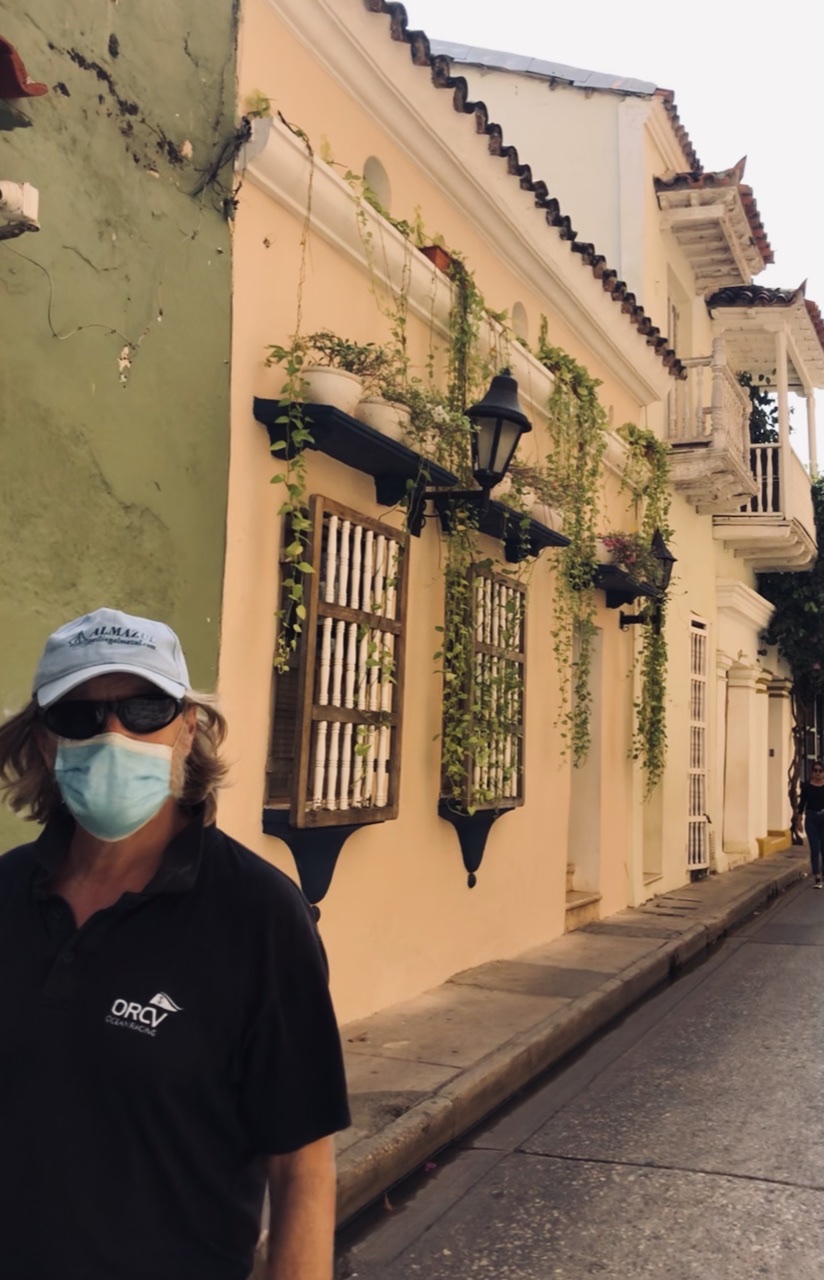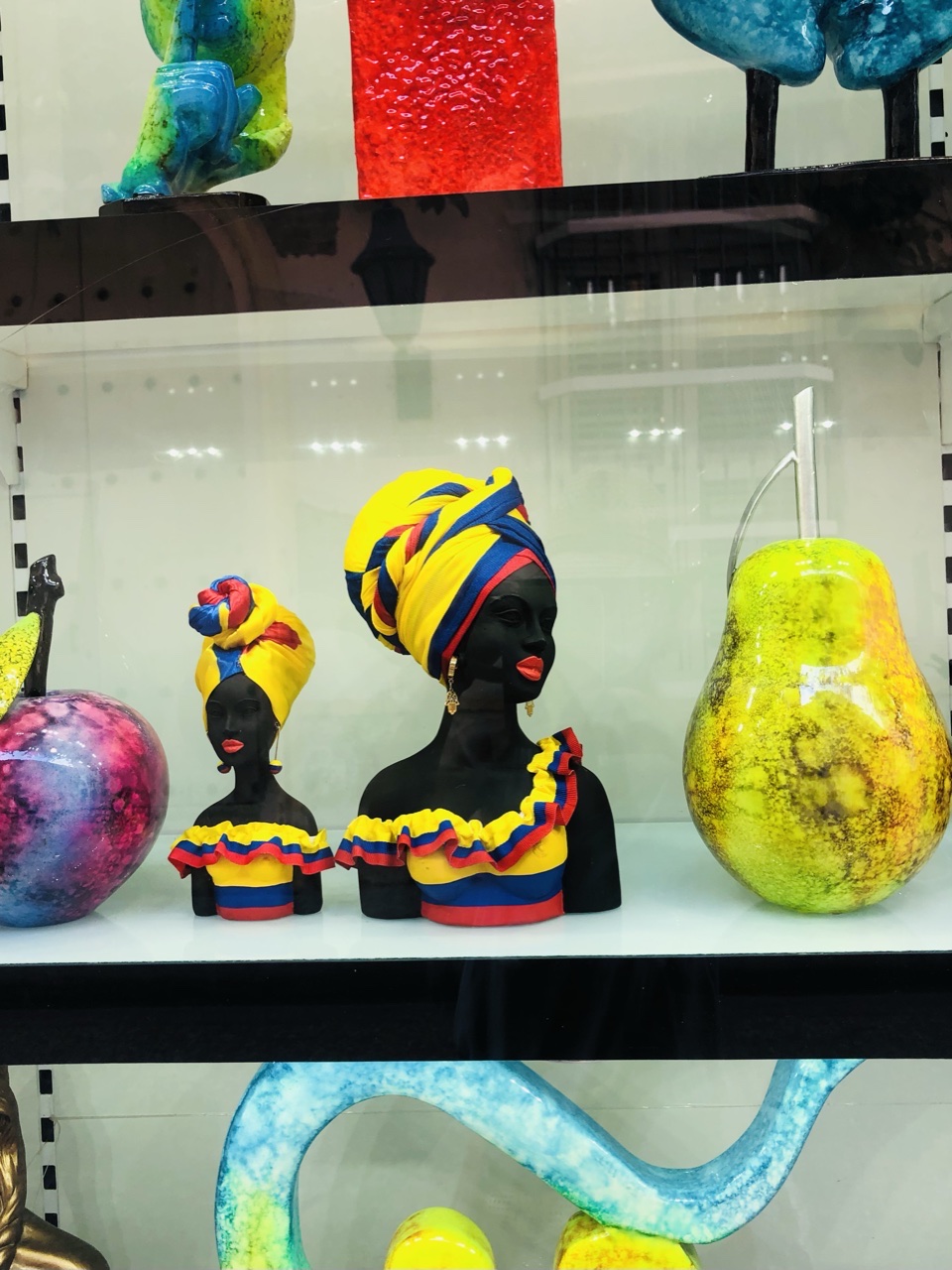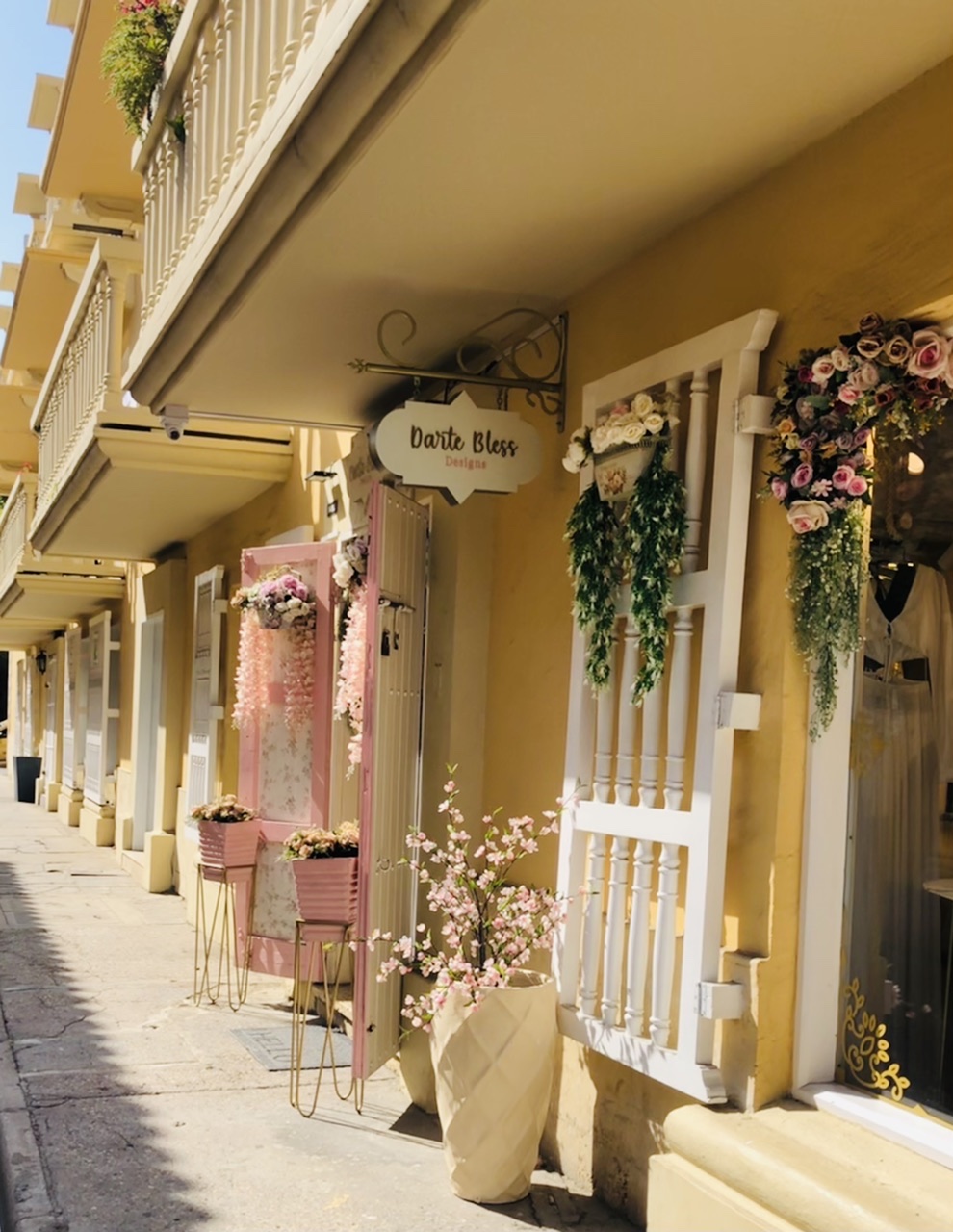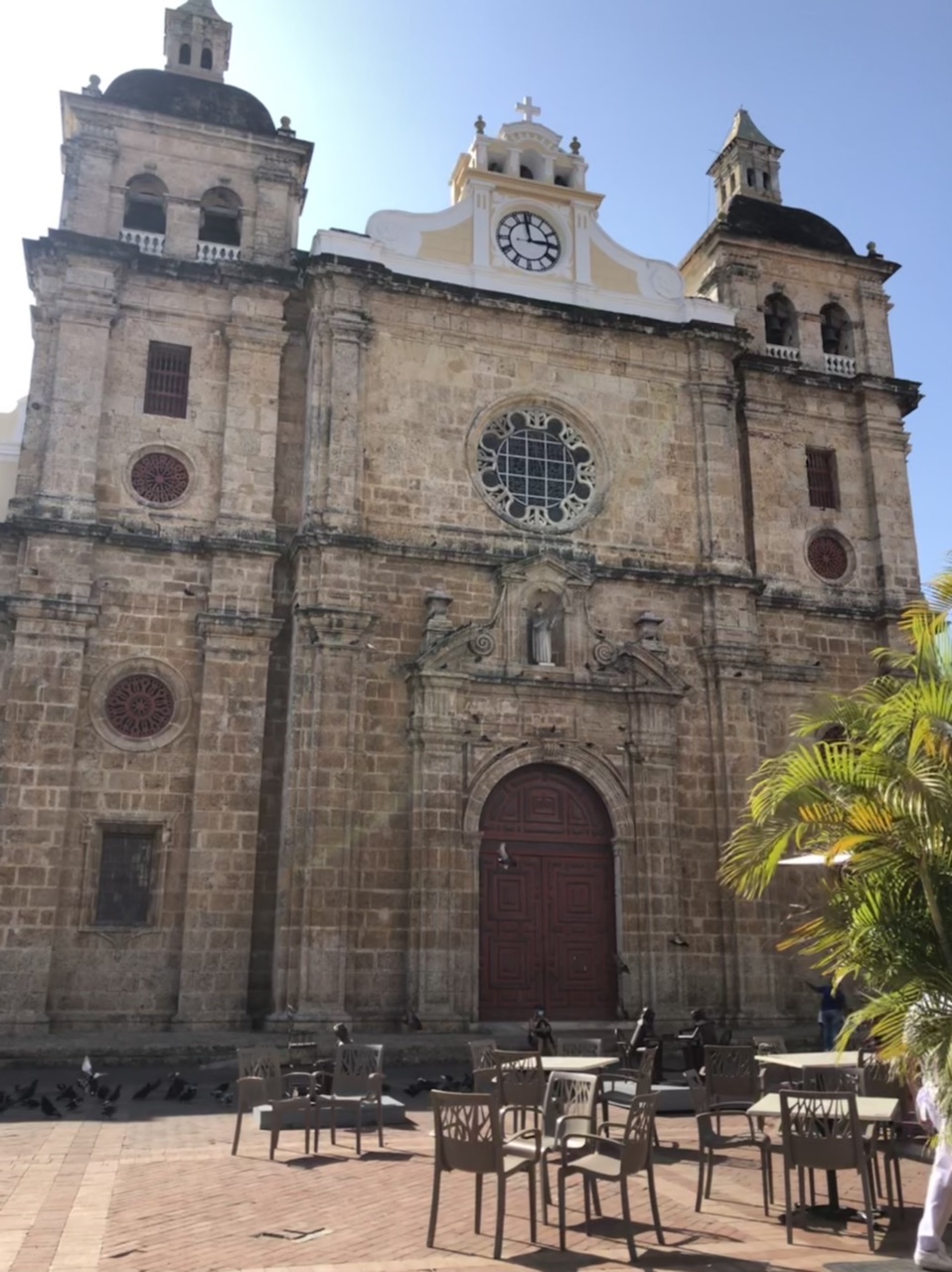
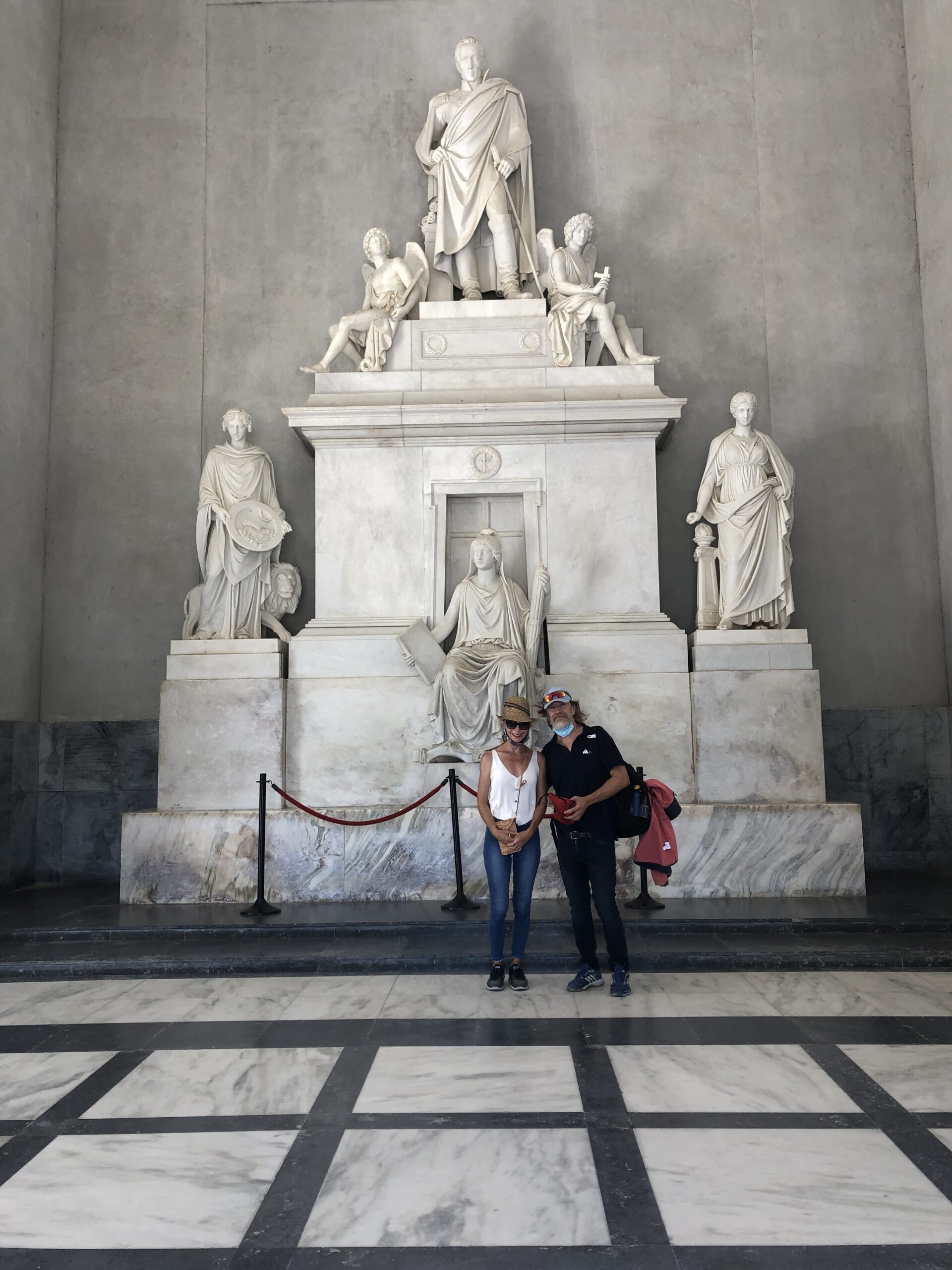
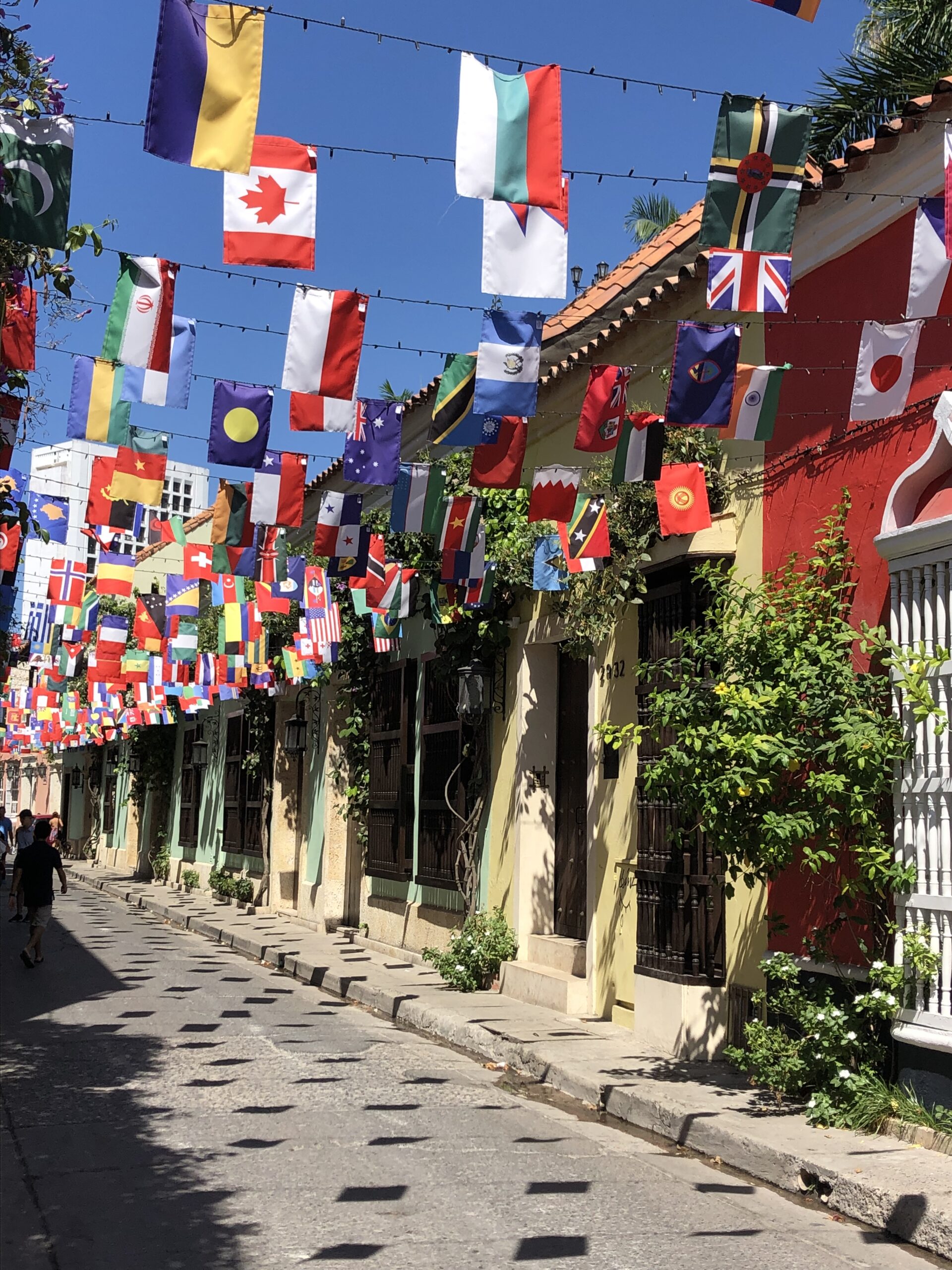

We made it to South America! A ripping sail featuring big waves, strong winds, and heavy seasickness delivered us to Santa Marta, Colombia after finally departing Curacao. Our first sail in 15 months certainly cleared the cobwebs, but did not quite warm up the (my!) sea legs. Sighting South America from the sea was a particularly magical moment towards the end of quite an arduous journey.
We were enchanted, pretty much from that moment on. The vibrant street life, music, food, diversity in the natural environment, Colombia’s colourful past, and deep cultural warmth invigorated, intrigued, and welcomed us…. as well as making us occasionally apprehensive, often lost, overfed, and worn out – and we have only visited a very small part of the country! Colombia definitely demands more time…one day.
Our roaming took in part of the north eastern coast from the Sierra Nevada de Santa Marta to the city of Cartagena, including the coastal towns of Santa Marta, Taganga, and El Rodredo; part of Tayrona National Park, and the small village of Minca which lies a little higher up.
Santa Marta was a great place to start because it’s not too big, but full of life, so we could get our bearings quickly and without too much fuss as tourists. Improving our Spanish became an obvious immediate priority, and we each have small areas of, shall we say “evolving expertise.” Mine include being able to book a table at a restaurant, explain that I’m sorry I don’t speak Spanish but will have a go, ask where things are, what time are things open/closed, what is it, and I am quite fluent in gestures: both wild and more restrained. My current favourite is an understated but effective finger directive. To master it you must firmly waggle your index finger horizontally, accompanied by a low voiced “Noh”; which translates to a hard no. I am usually disappointed when someone gives me this message, especially when it is impossible to fathom the reason, but I am quite happy to issue it myself. Magnus’s areas of expertise include efficient beer ordering, asking how much things cost, and dealing curtly with pushy street salespeople. He is also quite adept with gestures. The “thumbs up” has been universally successful so far.
Our last stop here was Cartagena, on the Caribbean coast. It is Colombia‘s fifth largest city, and biggest port. We were anchored right in the middle of the city in the Bay of Cartagena, in a busy area near the port, and were passed by many fast day charter boats and music pumping party boats every day. It was nice to feel in the thick of things a bit, and we didn’t mind the rocking and bouncing we got as each wake jostled past us, although getting in and out of the dinghy became an extreme sport demanding agility, precision timing, and nerves of steel! Our view included a stunning modern city sky scape and, in contrast, the curvaceous silhouette of the old town buildings.
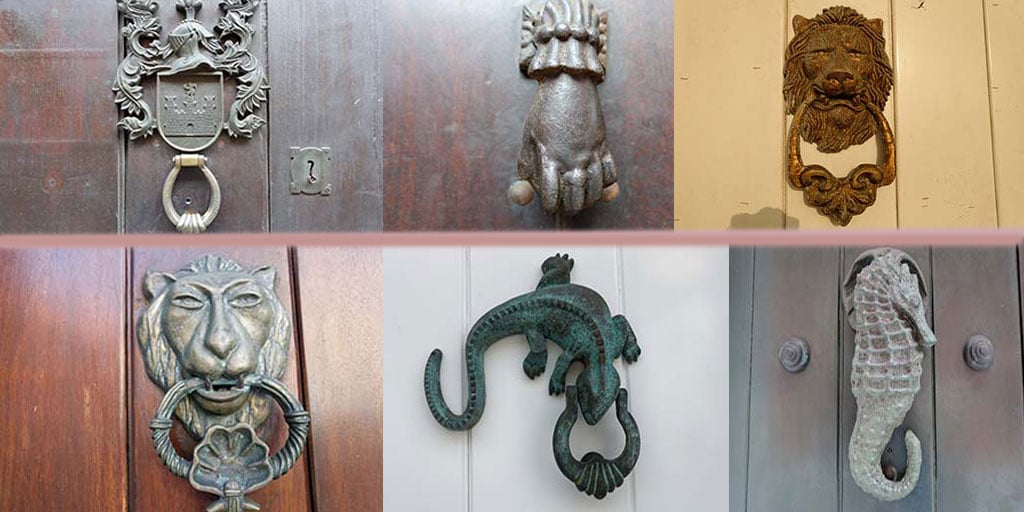
Cartagena de Indias was named after Cartagena, Spain. It was founded in the 16th century and still boasts well preserved squares, cobblestone streets and colorful colonial buildings, possibly assisted by it having gained UNESCO World Heritage Site status. The old city centre was mesmerising, and many stubbed toes and stumbles were the result of us gazing around open mouth, not quite sure where to look as beauty assaulted us from every corner of our view! Plazas, colonial architecture, Palenqueras in coloured costumes selling fruit, window boxes, brightly painted houses and shopfronts, stunning murals, shady courtyards, cathedrals… the stubbed toes were worth it! Cartagena’s history is in parts dark, and you can almost feel the stories buried in the ancient stone work of the fortifications and the cobblestones underfoot. The legacy of the Spanish Empire is everywhere, right down to the decorative door knockers. (aldabas)
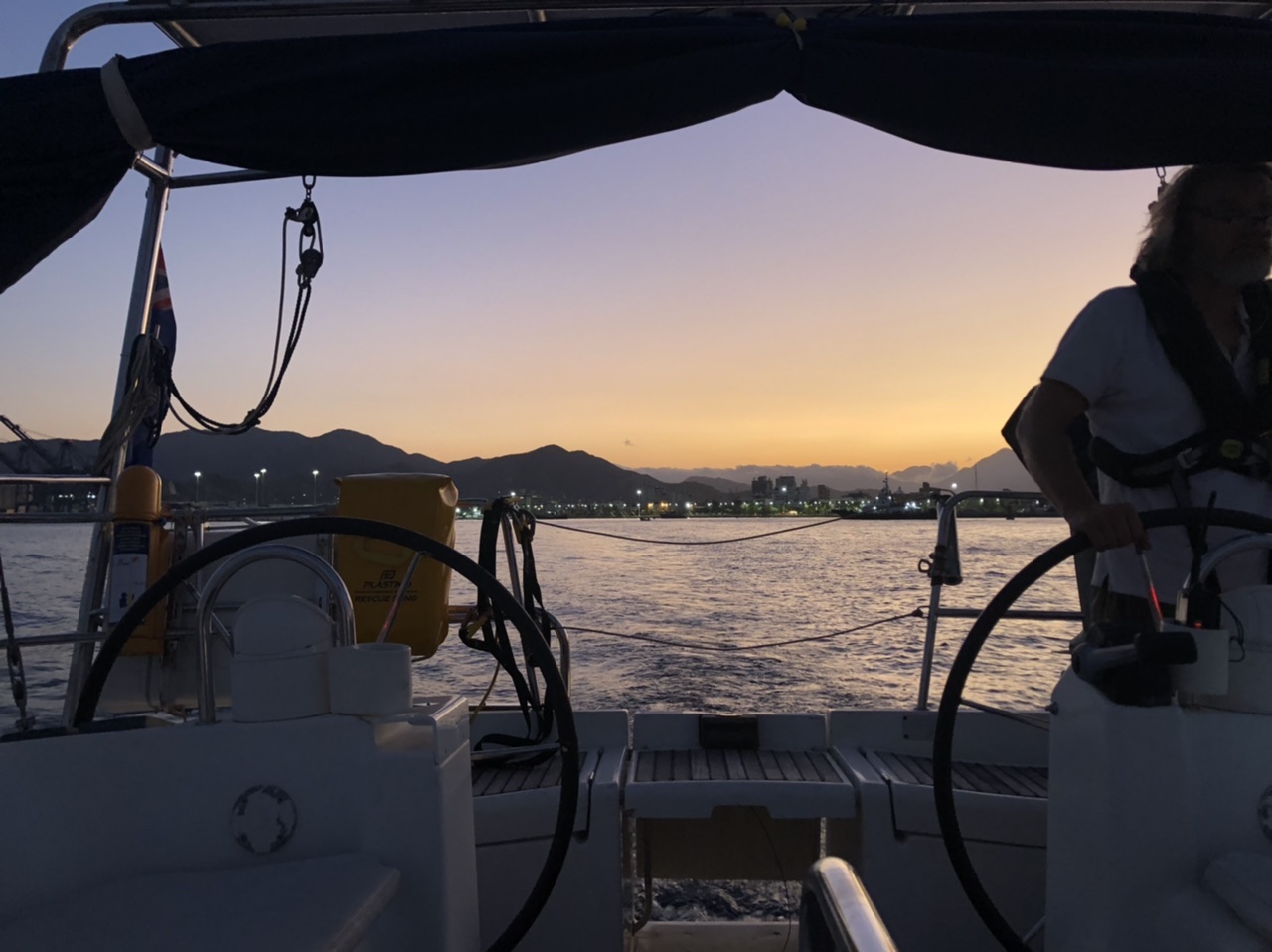
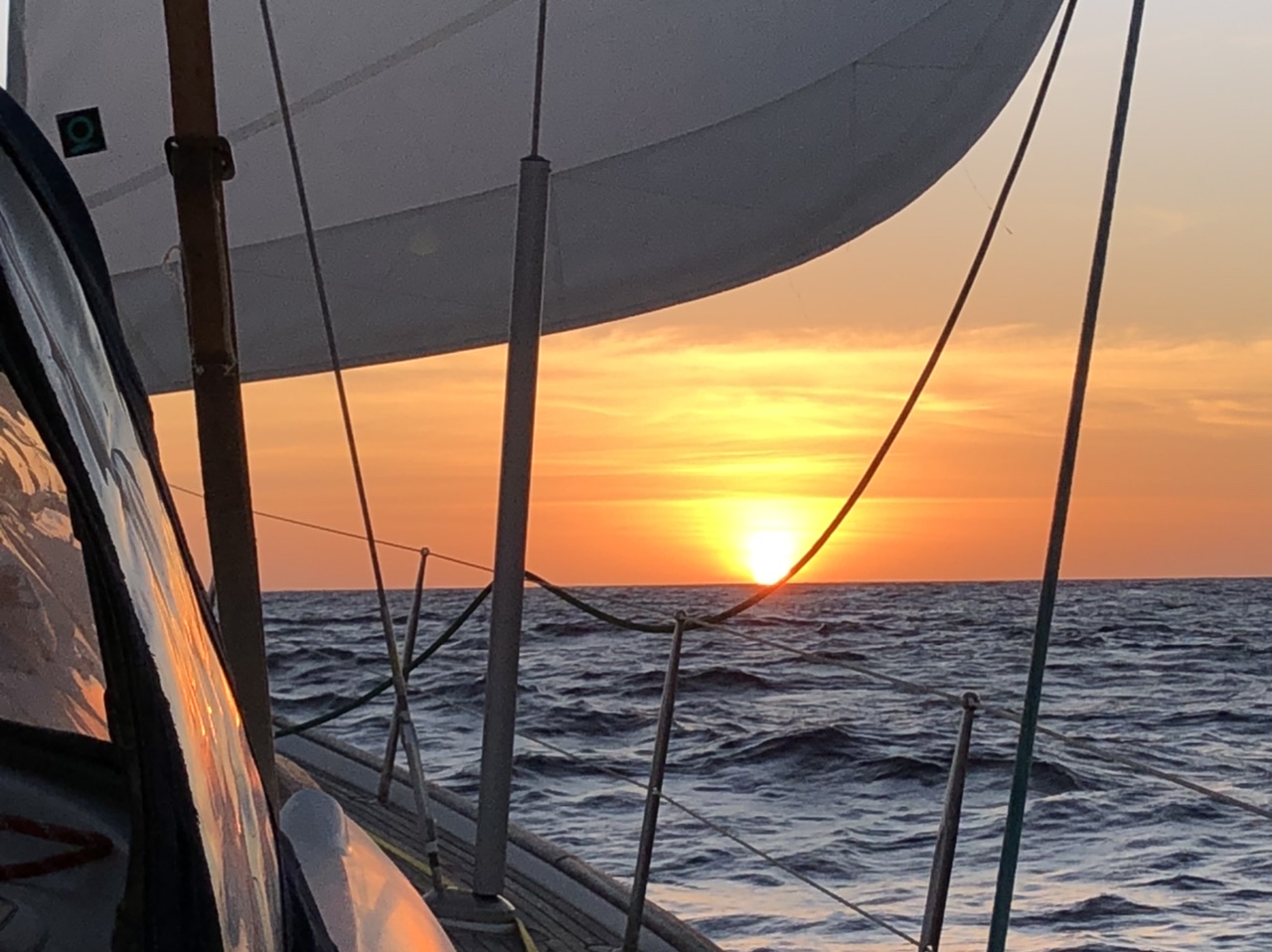
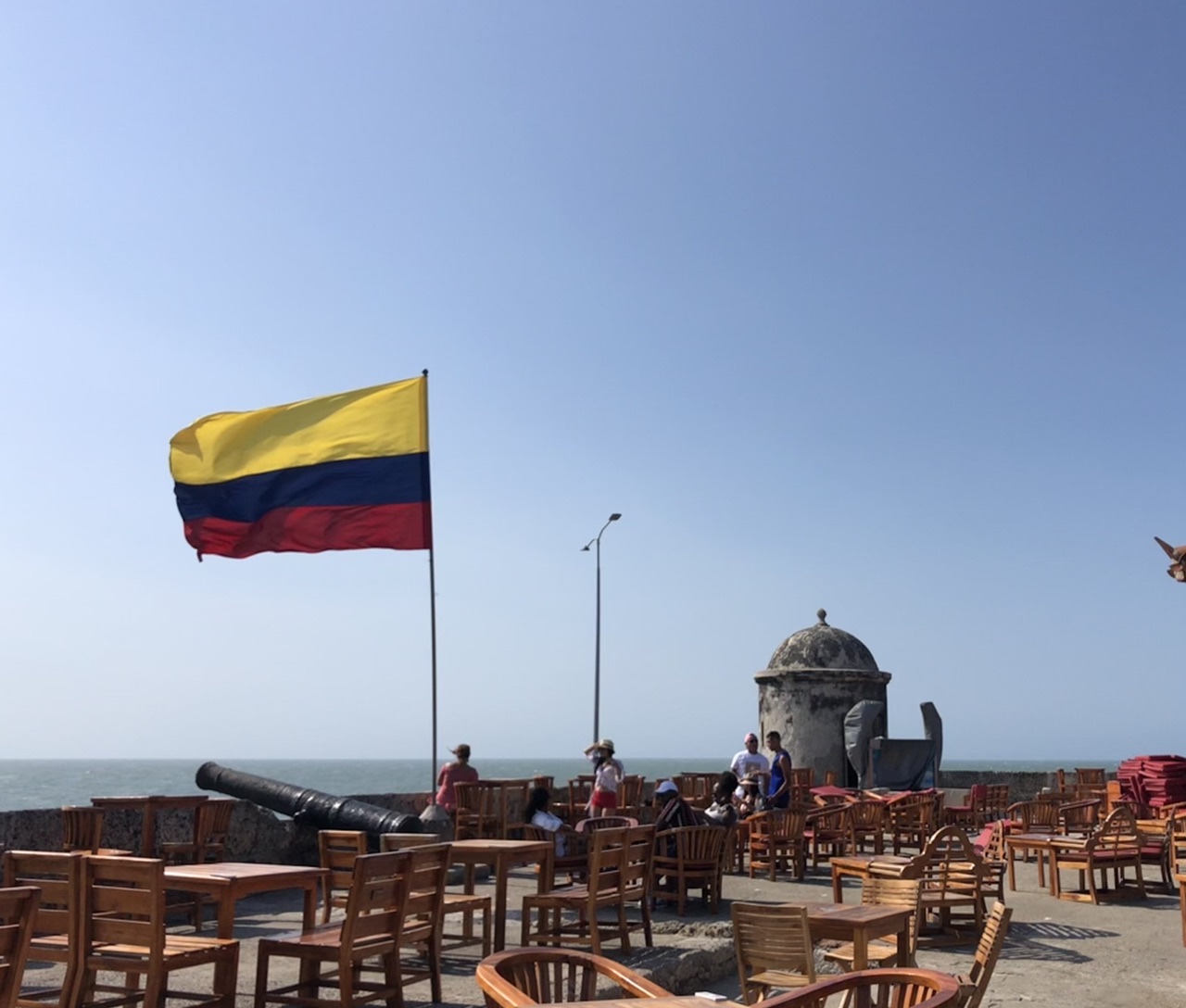
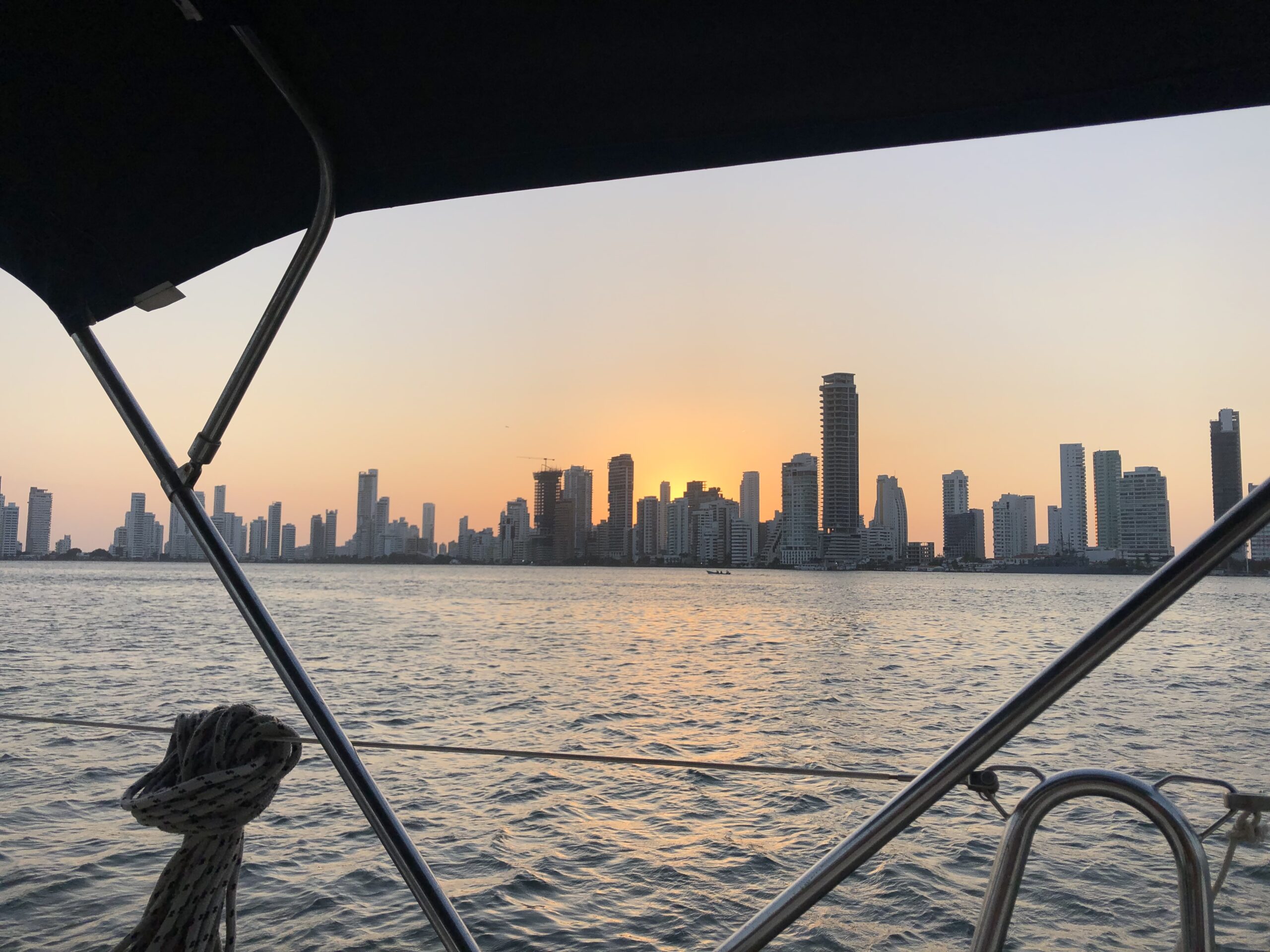

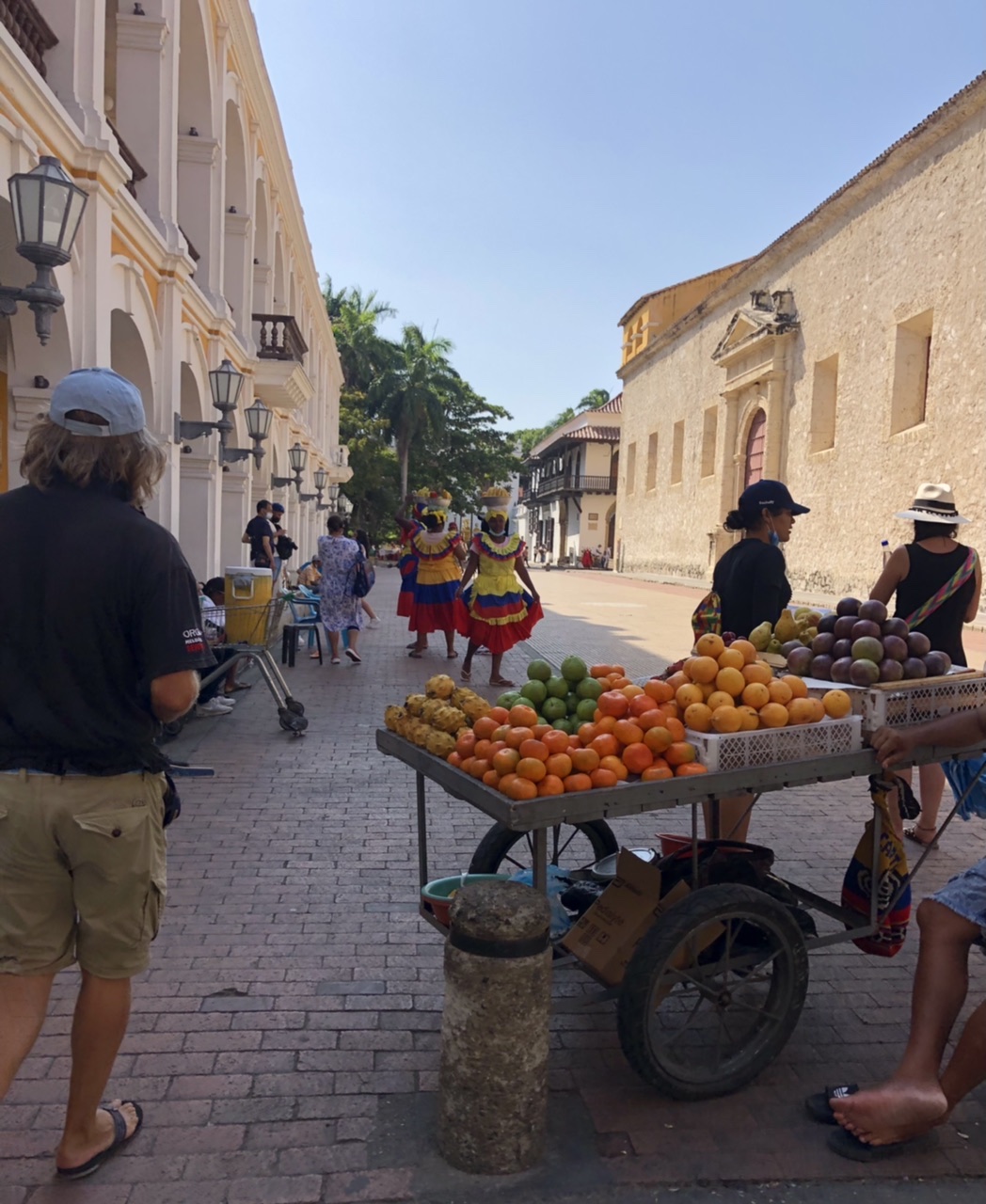
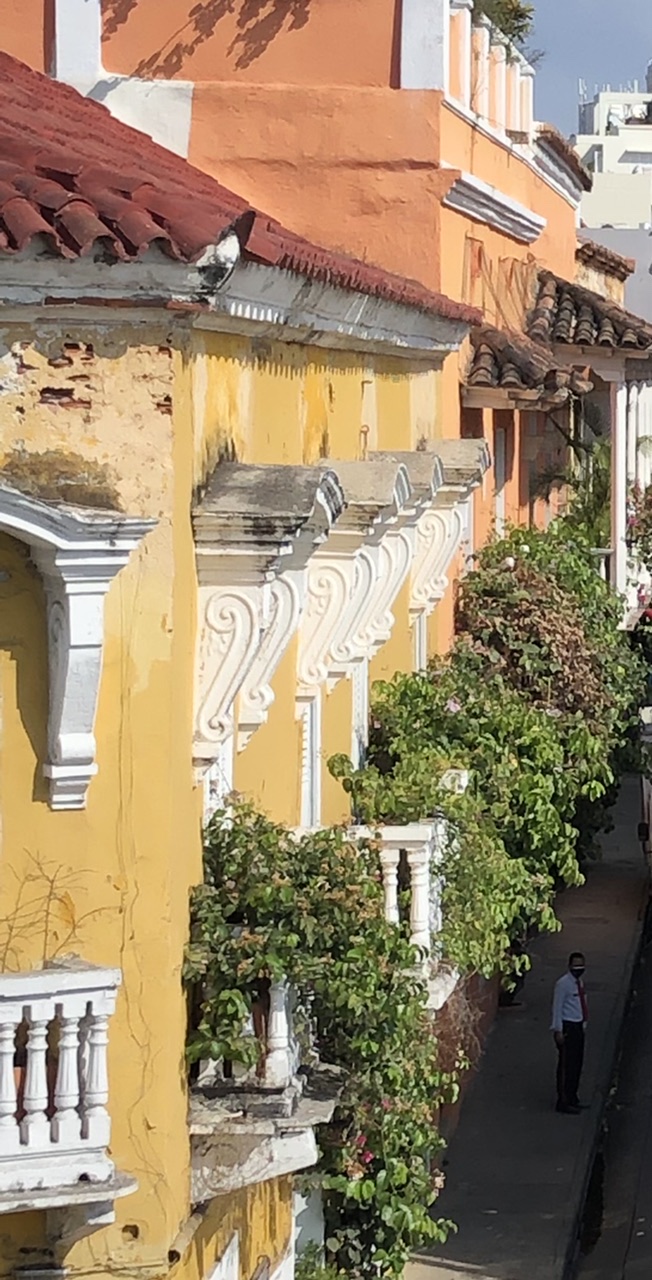
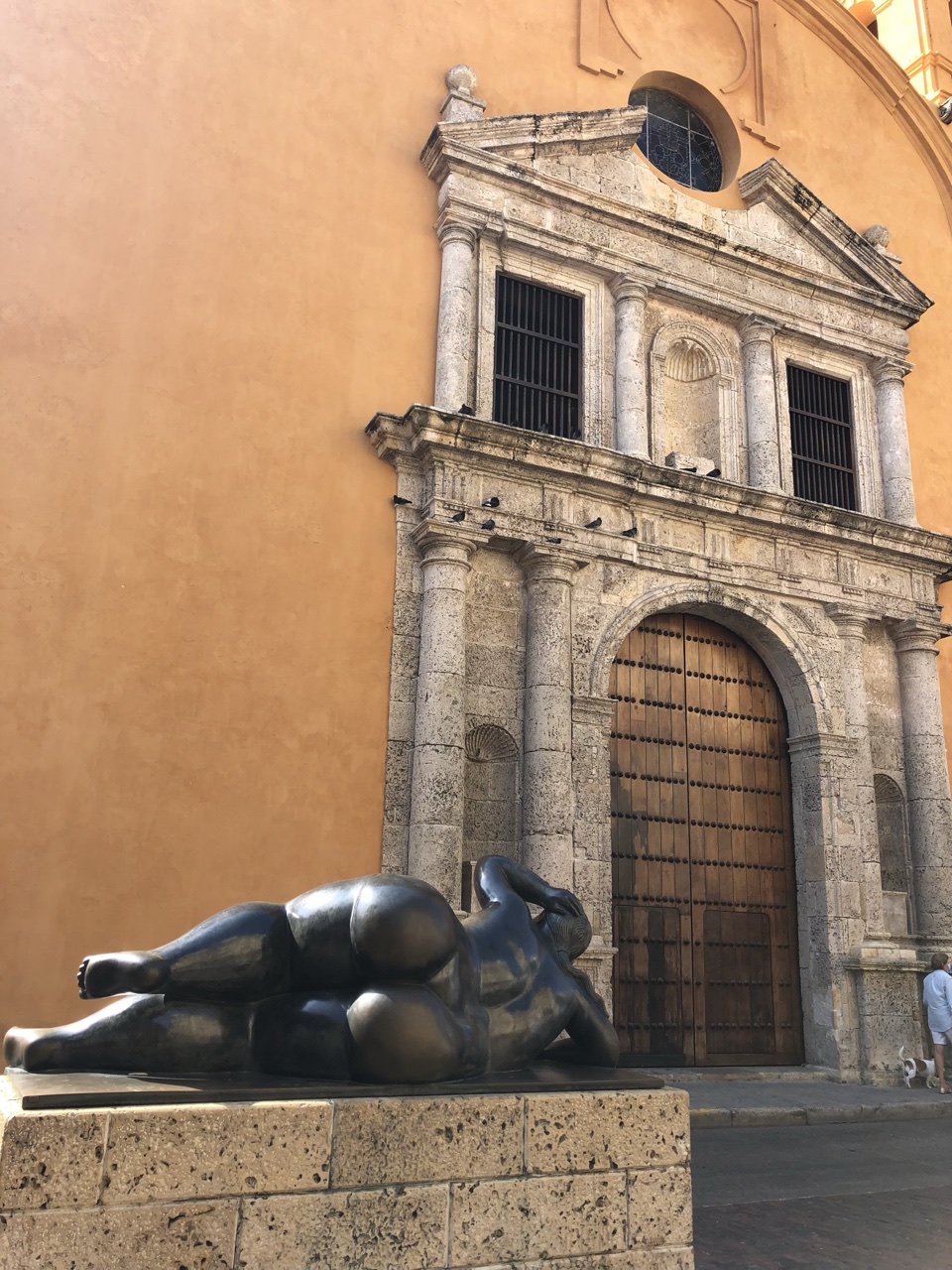

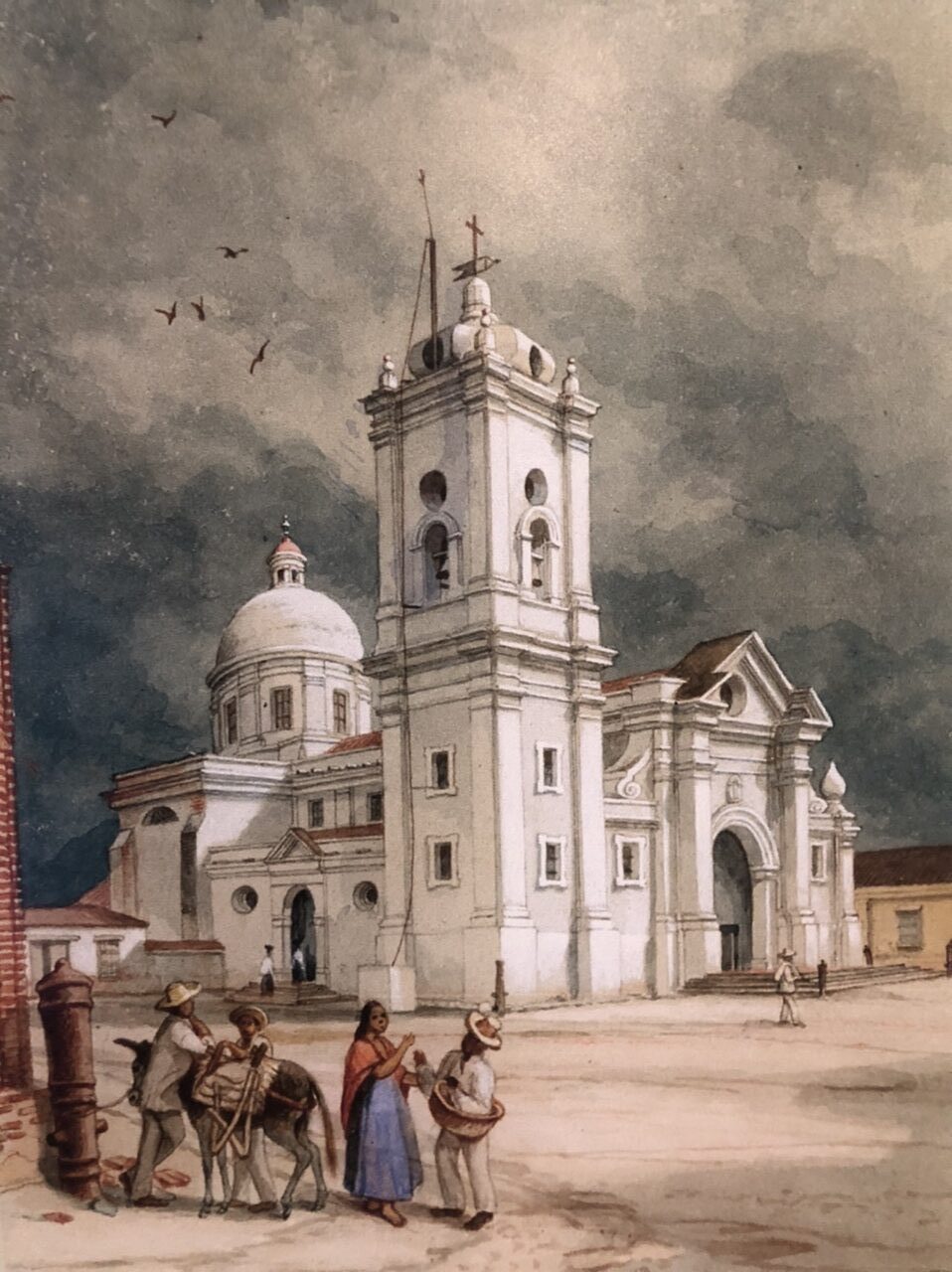
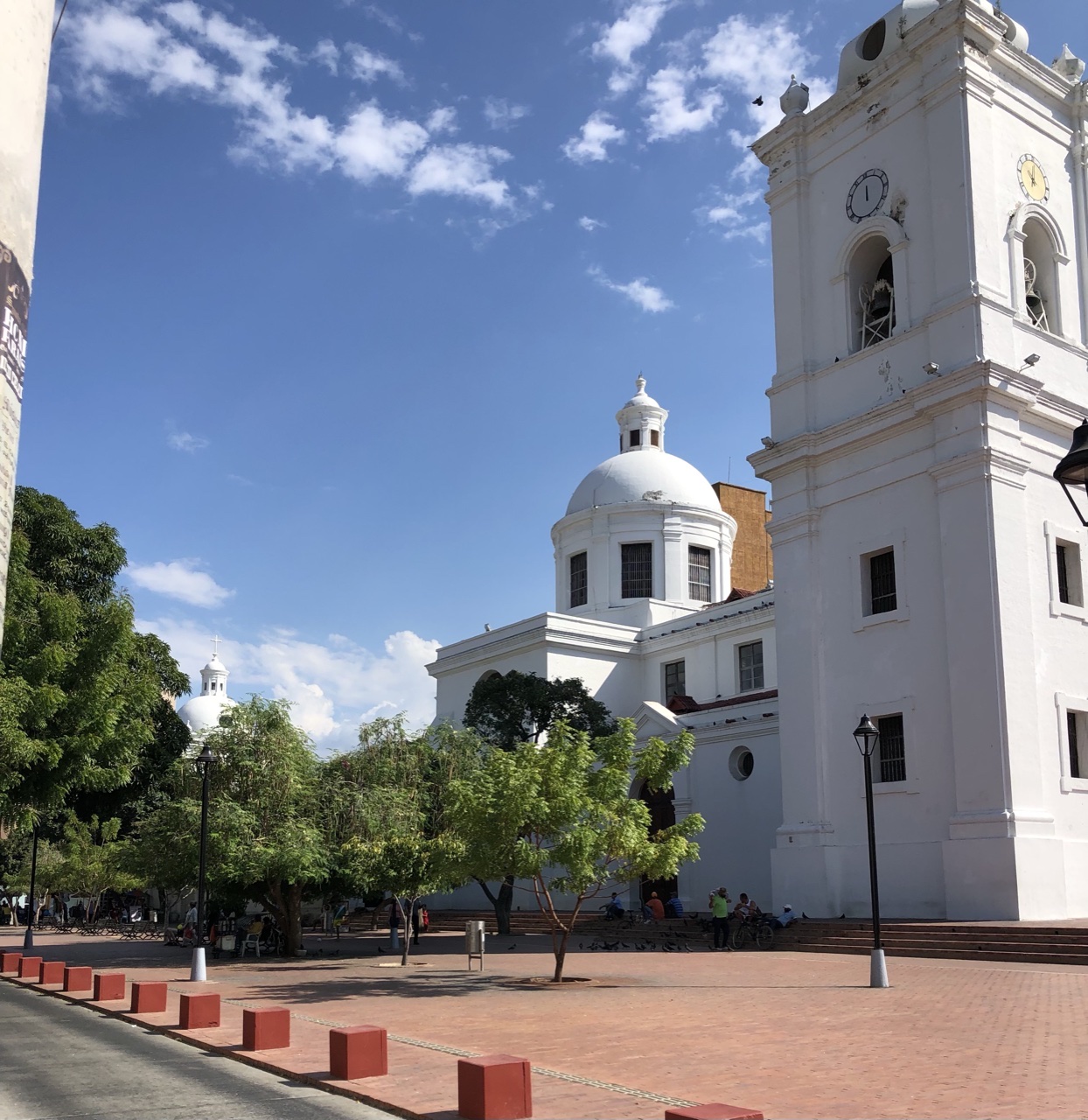
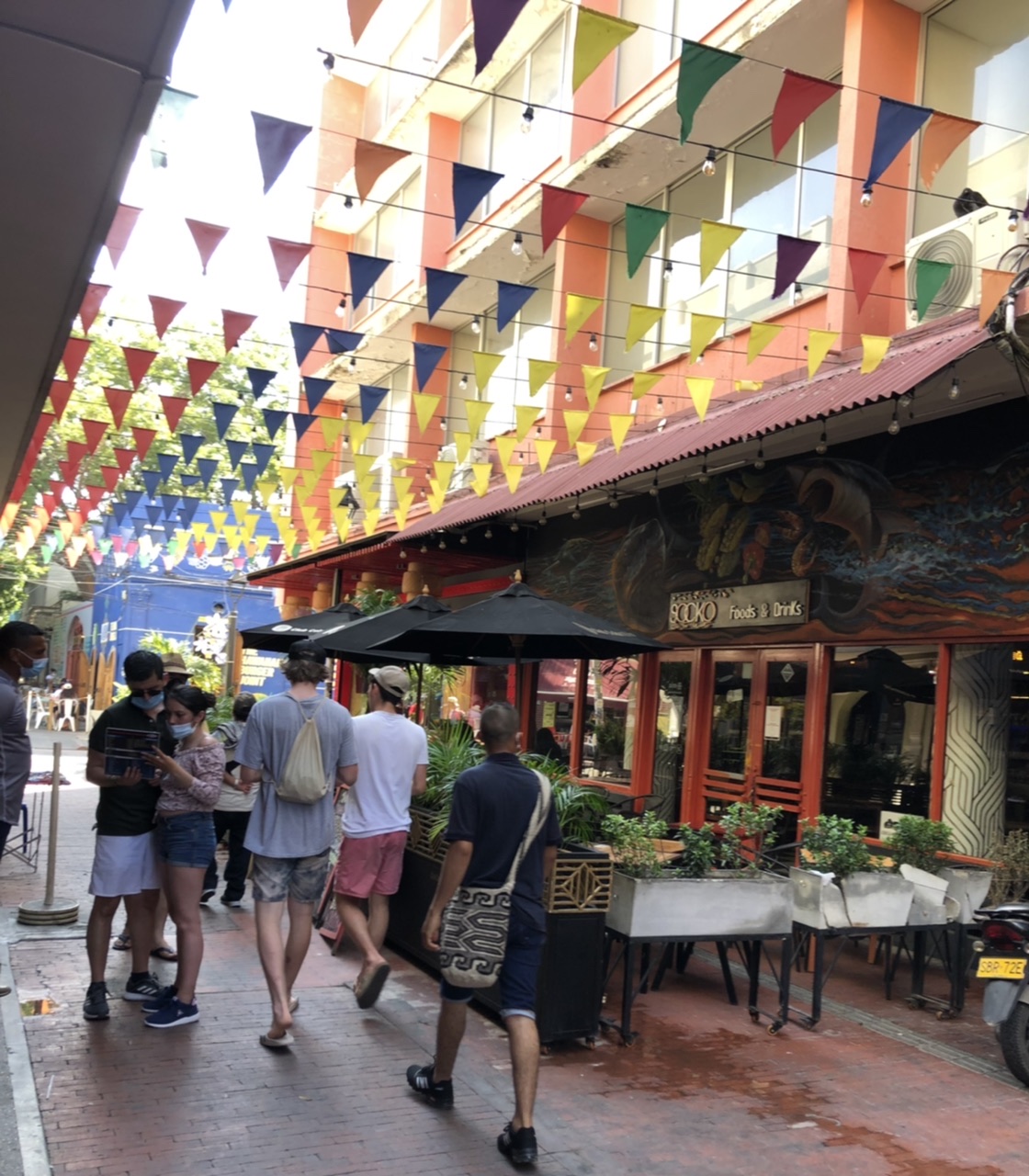
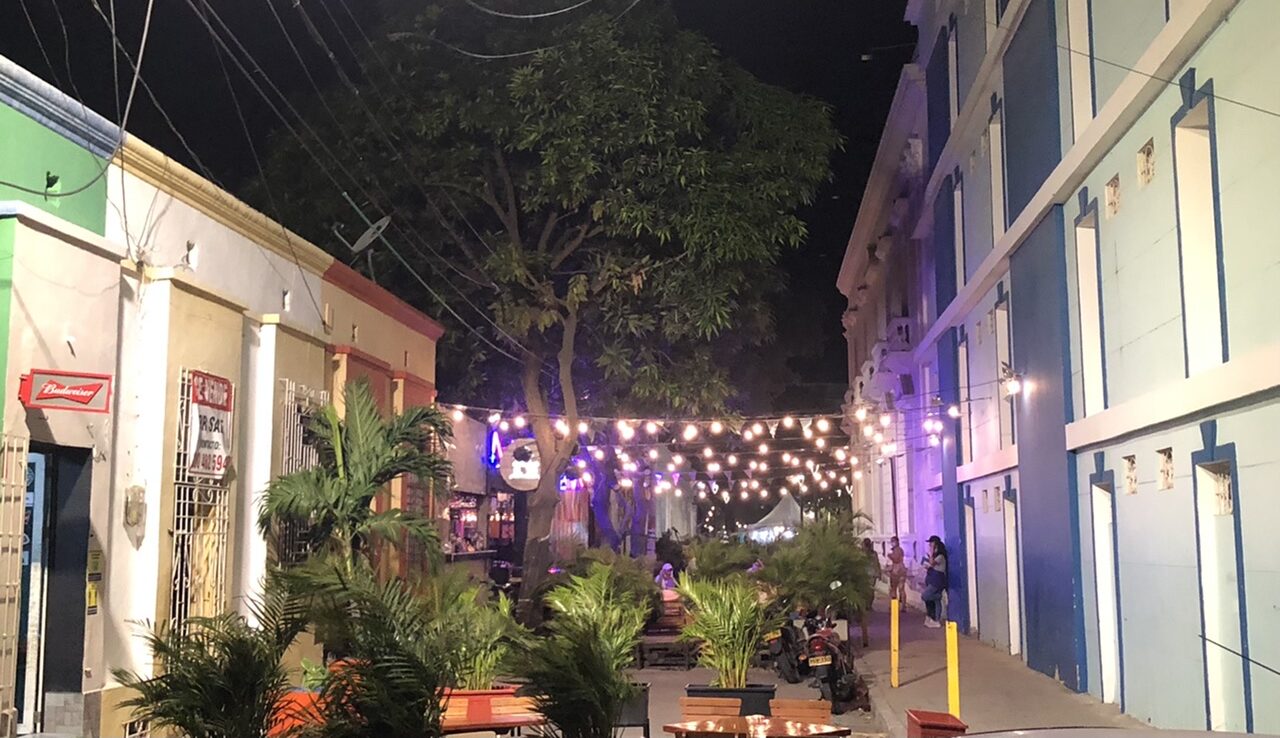
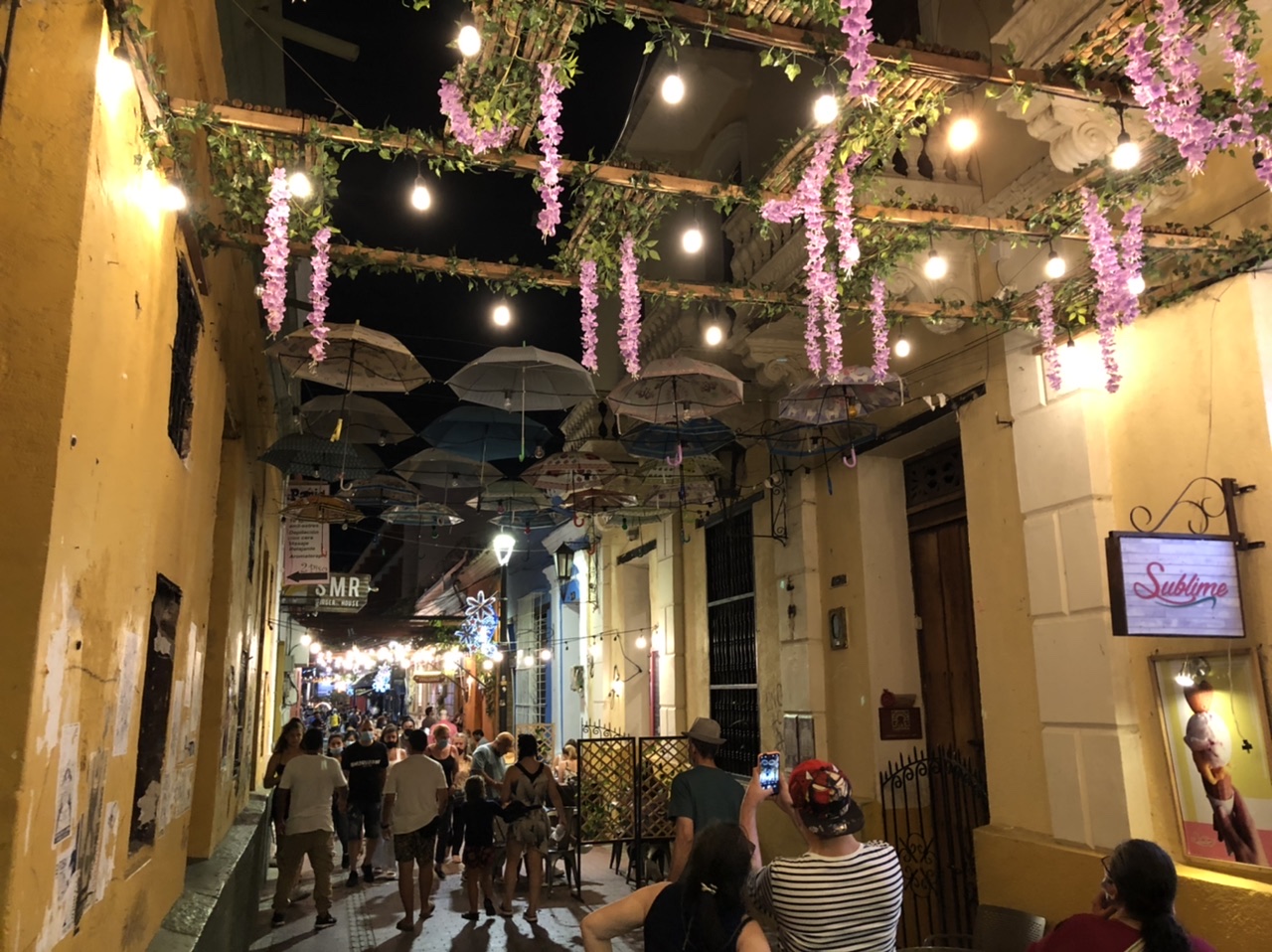
SOME NEW EXPERIENCES:
- Riding shotgun on a scooter, or “moto” in Spanish. For three days we risked life and limb, mixing it with the big boys on the road and shaking our teeth out on rough tracks. Our little red steed enabled us to venture further afield than our legs could manage in a given time. As a bonus, it built my tricep strength markedly, as I held myself off the seat for about 9 out of 11 kms on a particularly rough piece of track. The destination in Tayrona National Park was well worth it however, and my technique improved for the return trip. We also took the scooter up into the hinterland above Santa Marta, and were pretty taken with the lushness of the verdant vegetation along the roadsides, which occasionally opened up to sweeping views down to the sea, including the sprawl of Santa Marta in the valley below.
- Anchoring in 30+ knot winds. Although we are pretty adept at anchoring by now, we have not anchored in such strong winds before. We were convinced that our anchor was truly set after the heavily armed Colombian Coastguard tied up alongside our boat to pay us a visit. (Meaning their boat was also hanging on our anchor!) Two of the team of four boarded us and checked we were doing the right things. One young coast guard spent his time taking selfies on Almazul, while another dealt with us, often phoning a friend to help with translation. The howling wind did not assist the already difficult communication. We are not really sure of the details of the result, but after a short tour of the boat, and exhorting us to phone to the control tower (who didn’t respond then or later) the four young men sporting flack jackets and guns bid us good day. All the while our trusty Manson Supreme held fast, dispelling any doubts about how well it was set!
- Learning about how coffee is graded. We visited a coffee plantation and learned that here, the coffee beans are classified by how well they float! However, we were also a bit surprised to learn that if you want to buy world renown Colombian coffee, you need to buy it outside Colombia, as all the first class coffee is exported. We were lucky to sample some of the good stuff at the plantation in the hinterland above Santa Marta, where we enjoyed an informative tour, after a long bumpy ride in from the main road. (Actually this time it was impossible to stay on as a passenger, so a walk was in order – but all part of the fun!)
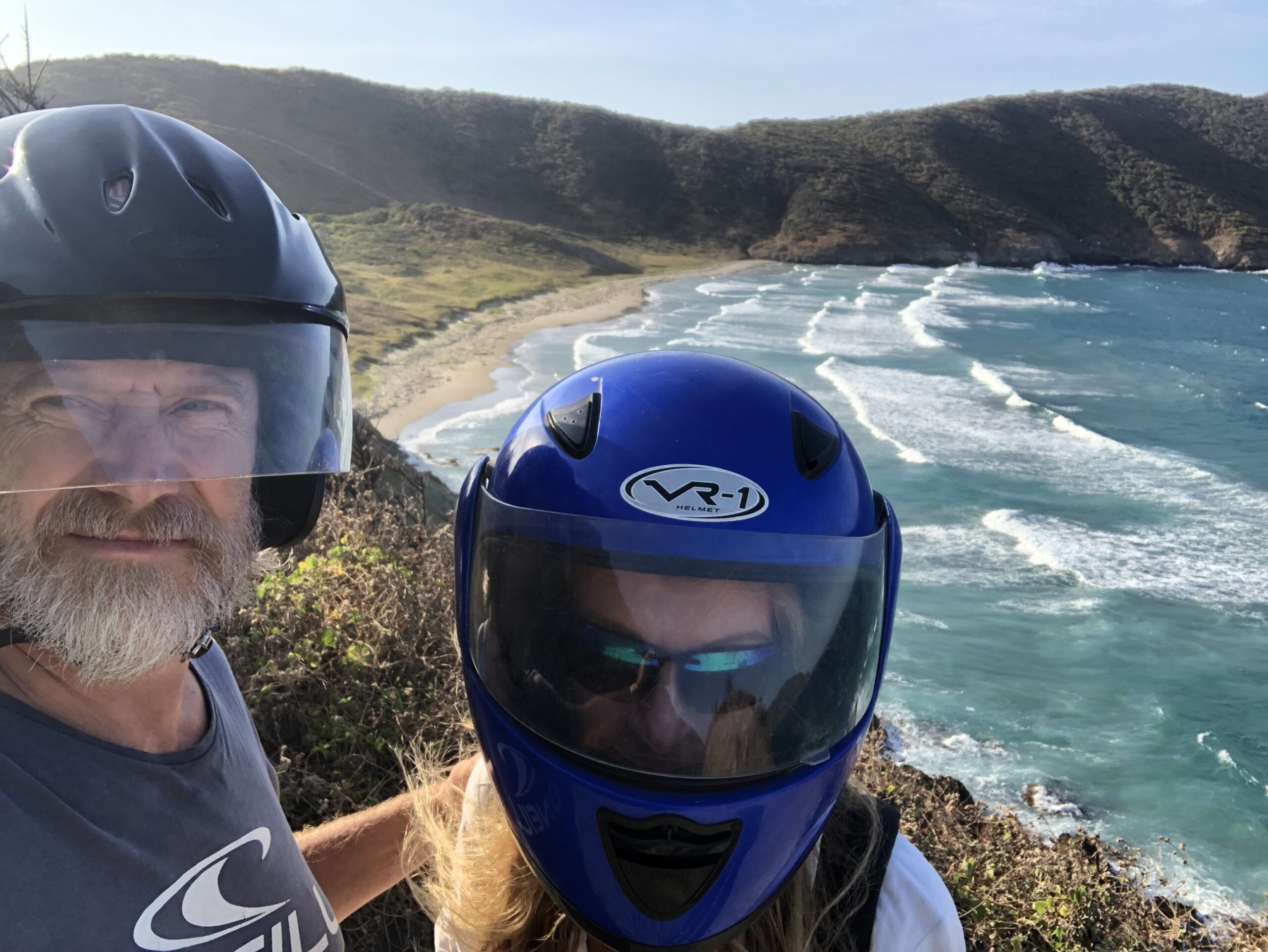
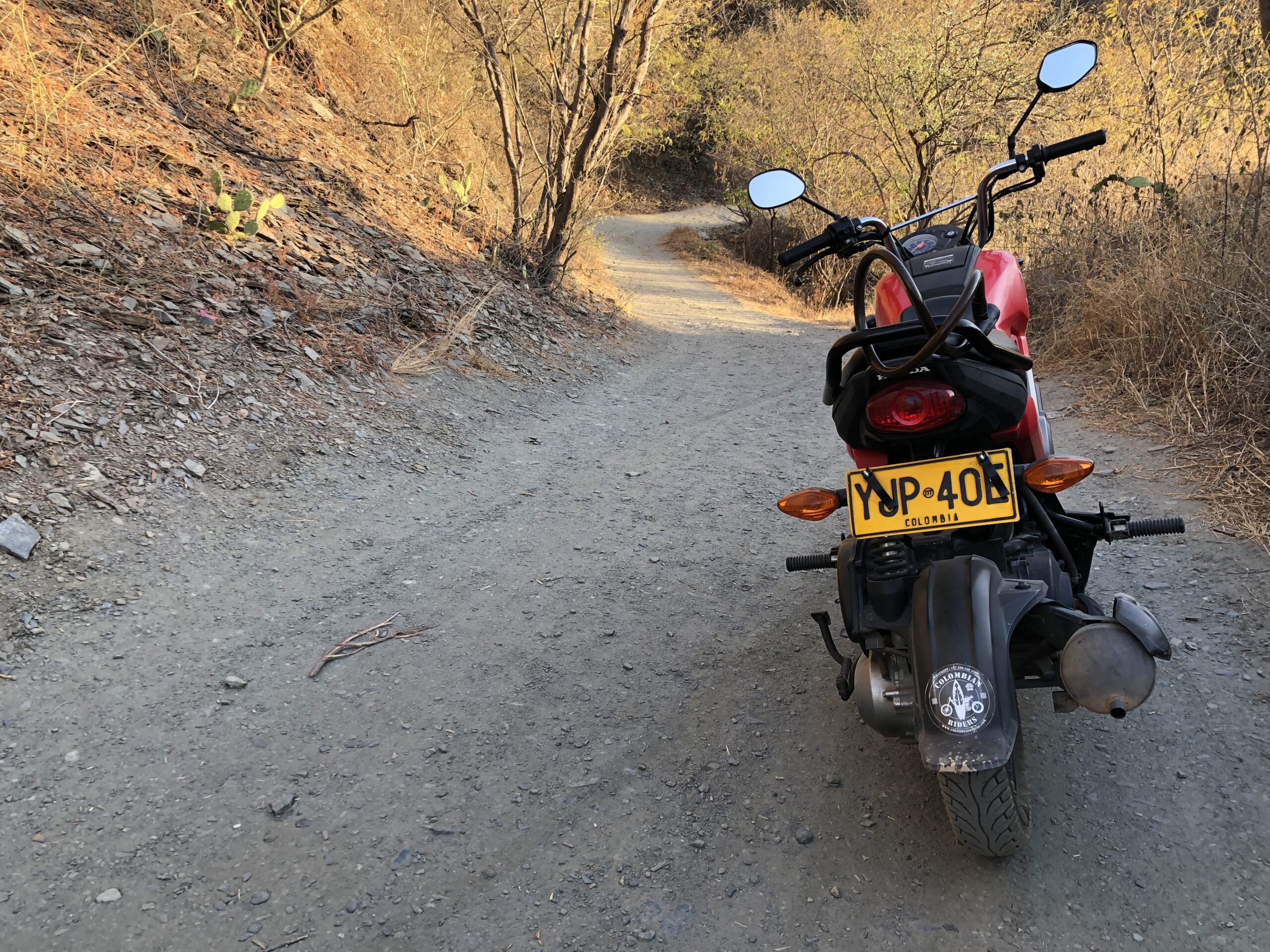
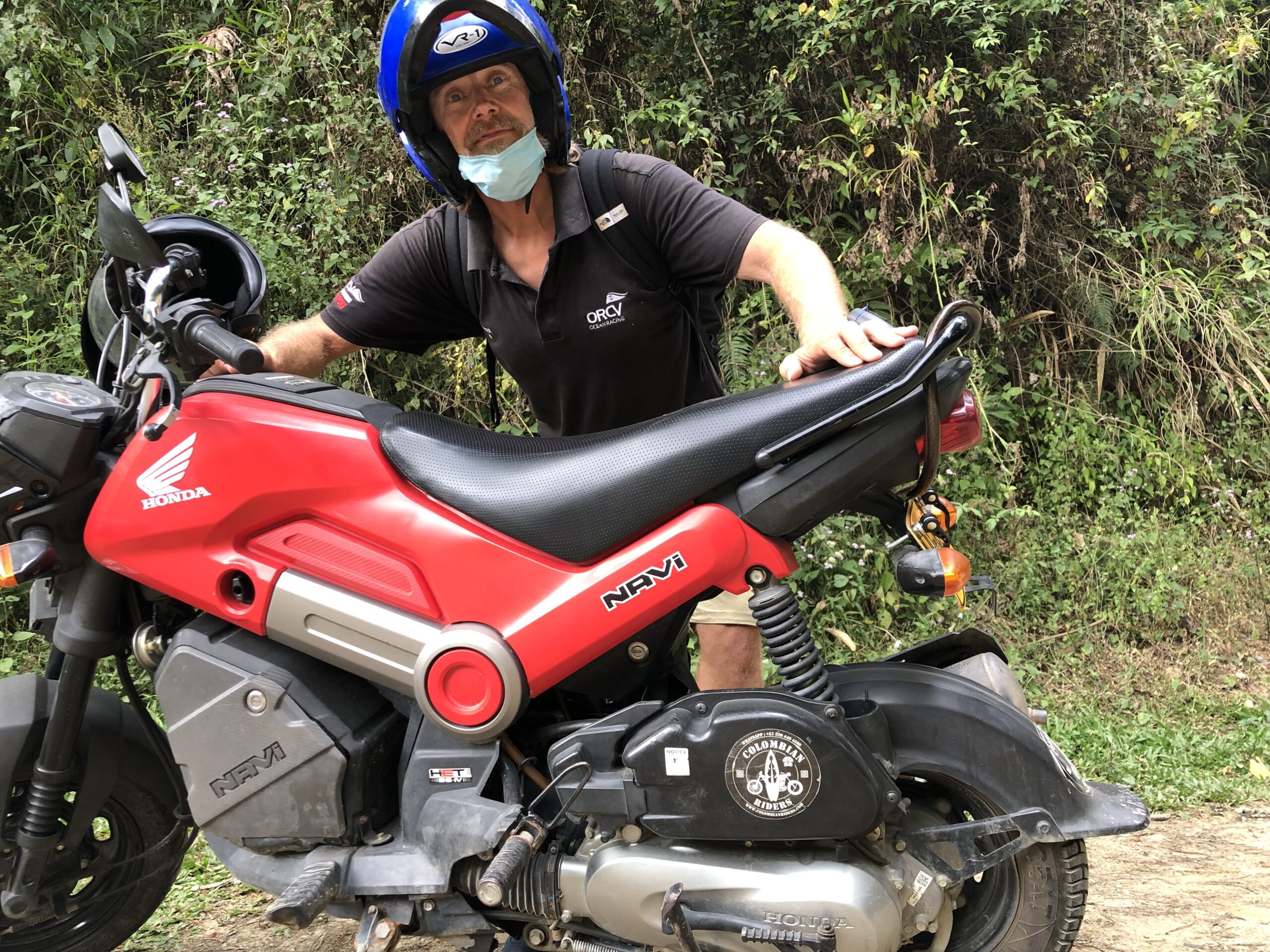

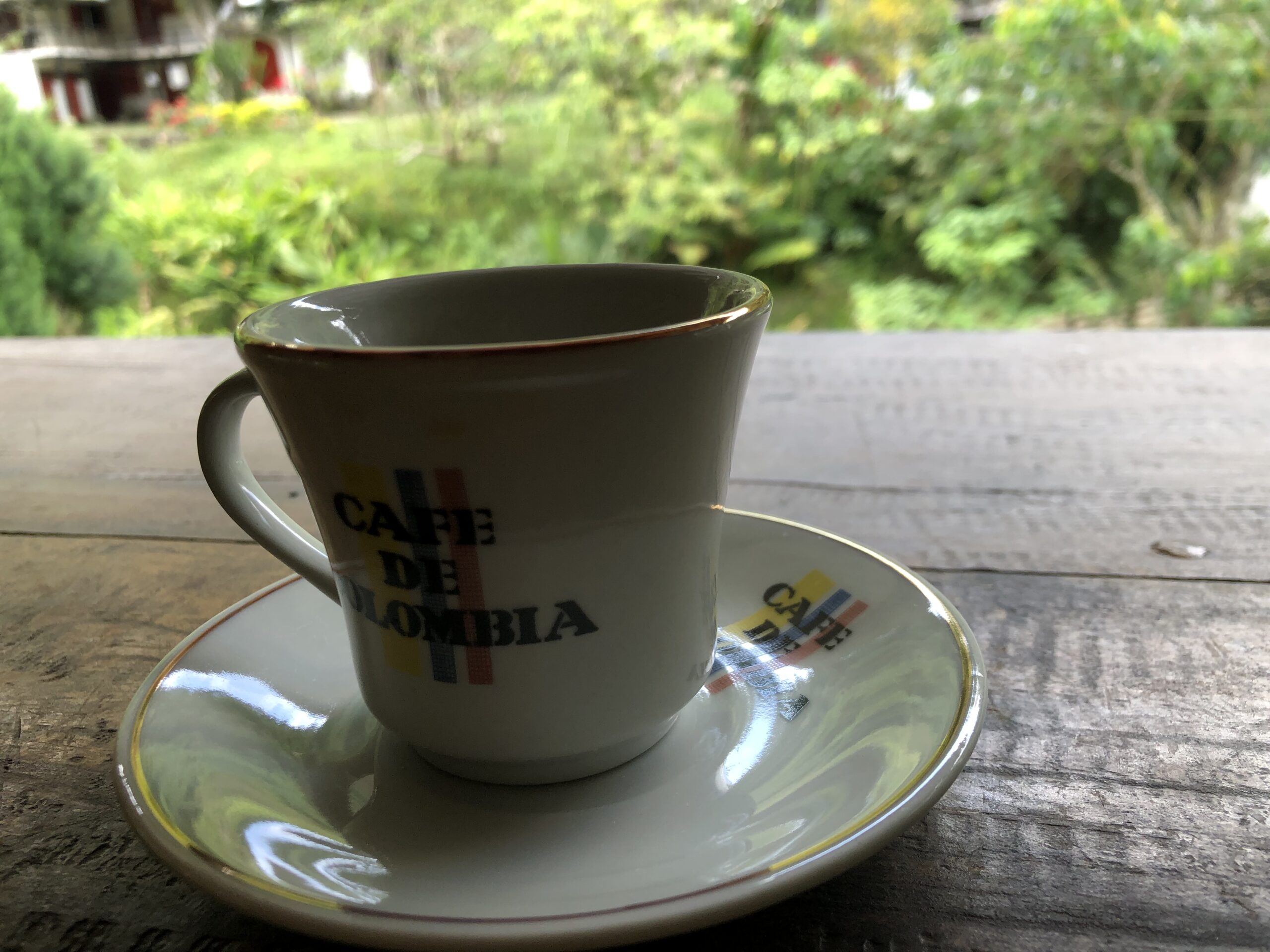
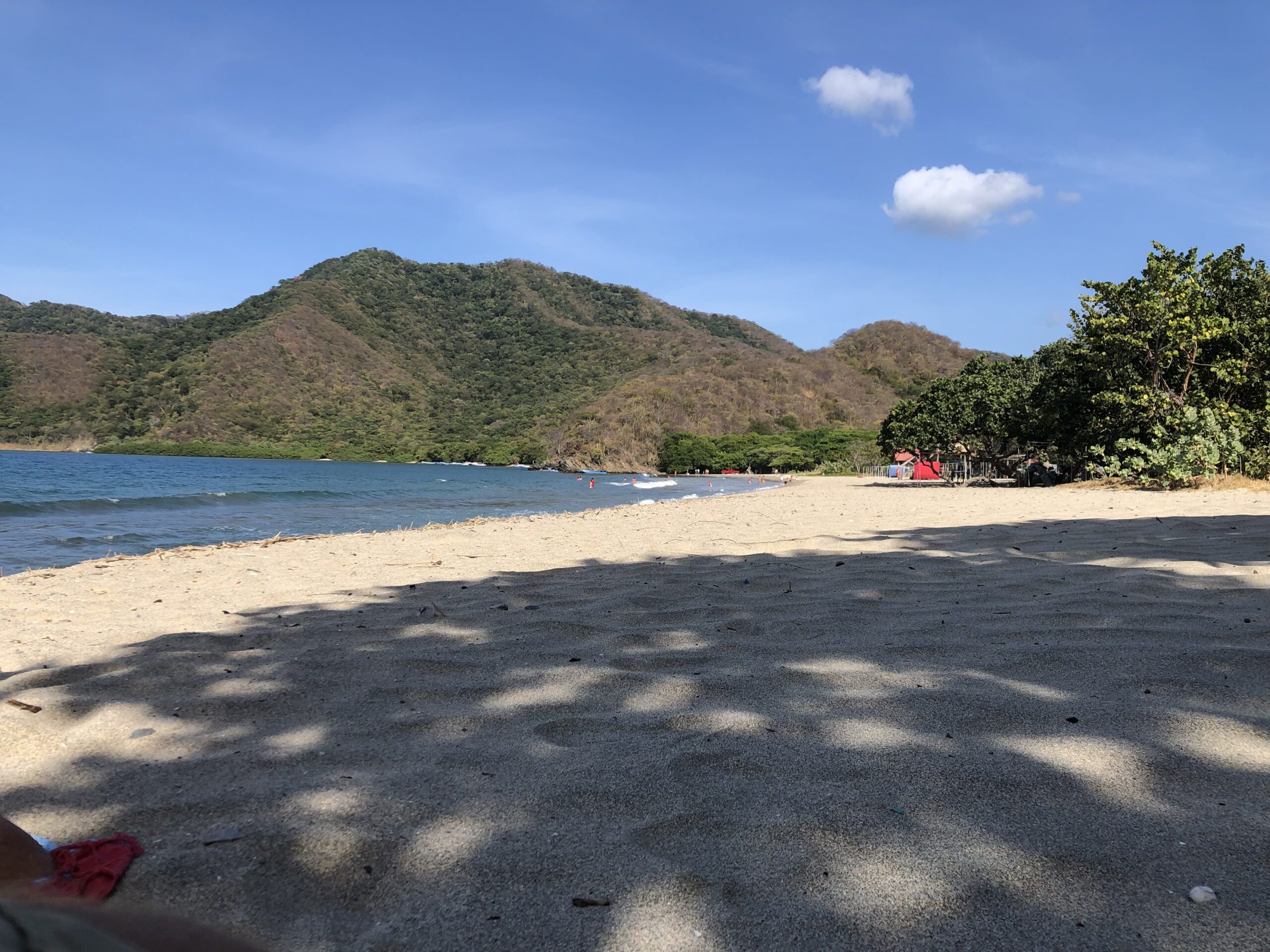
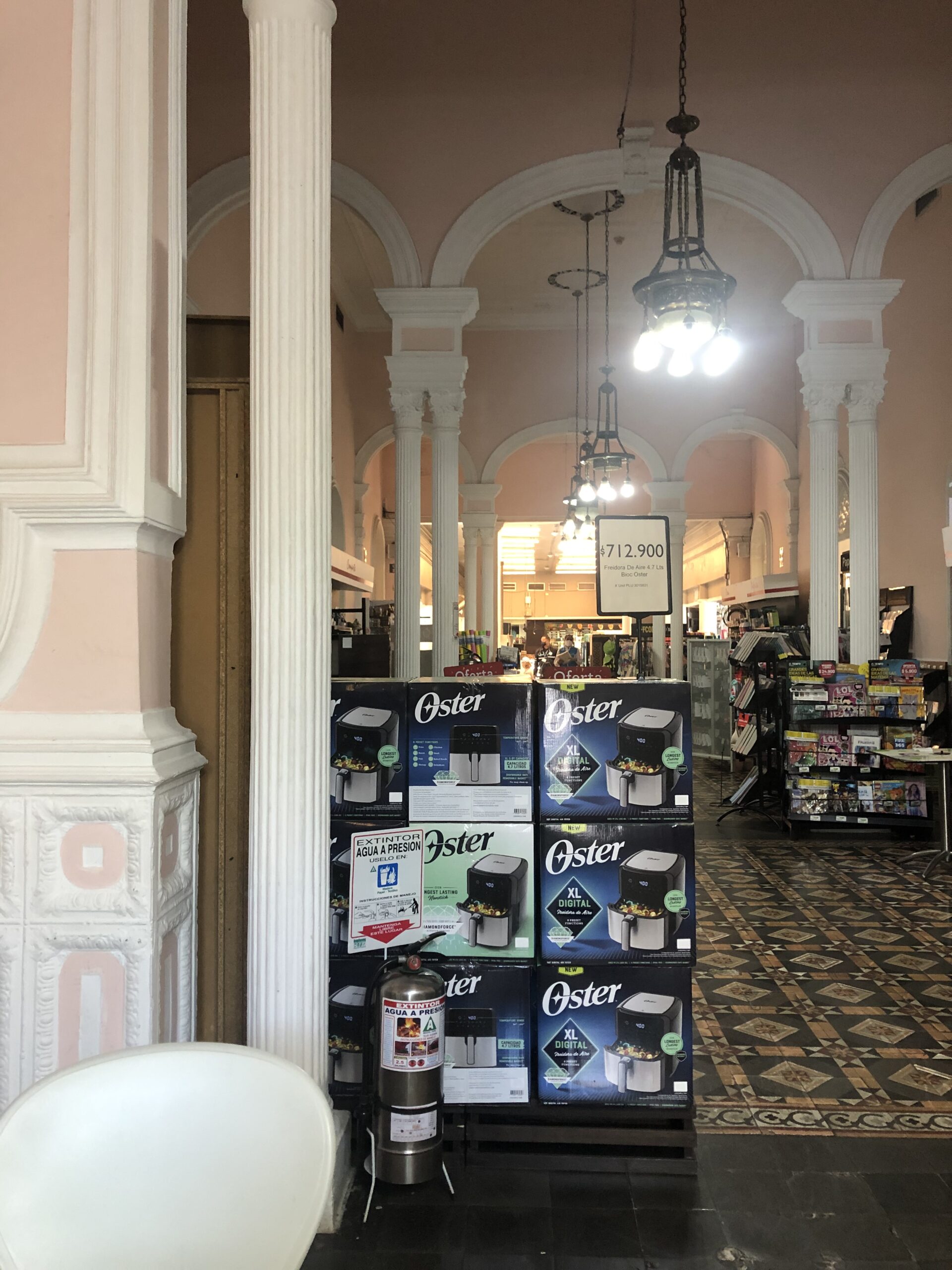
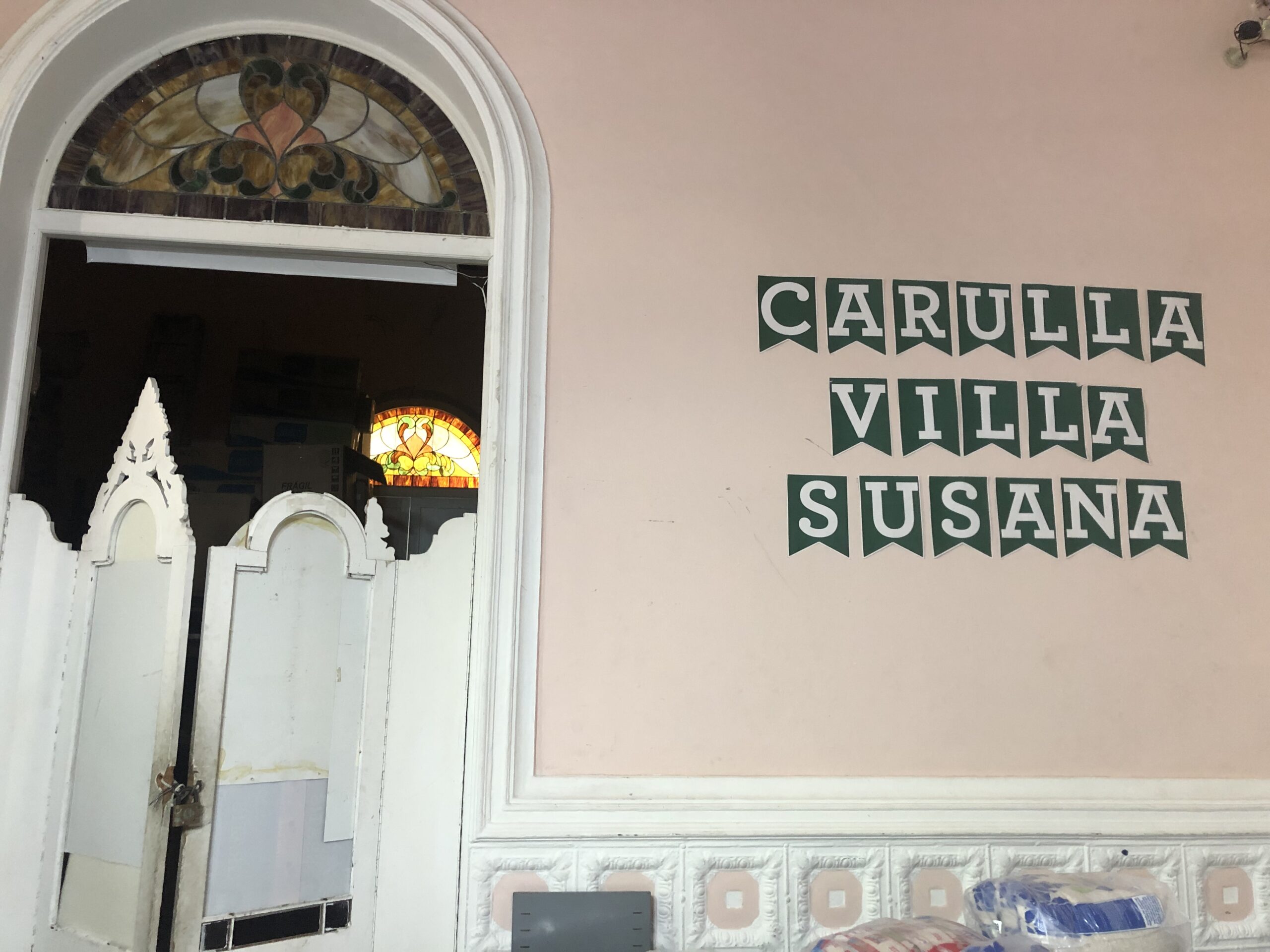


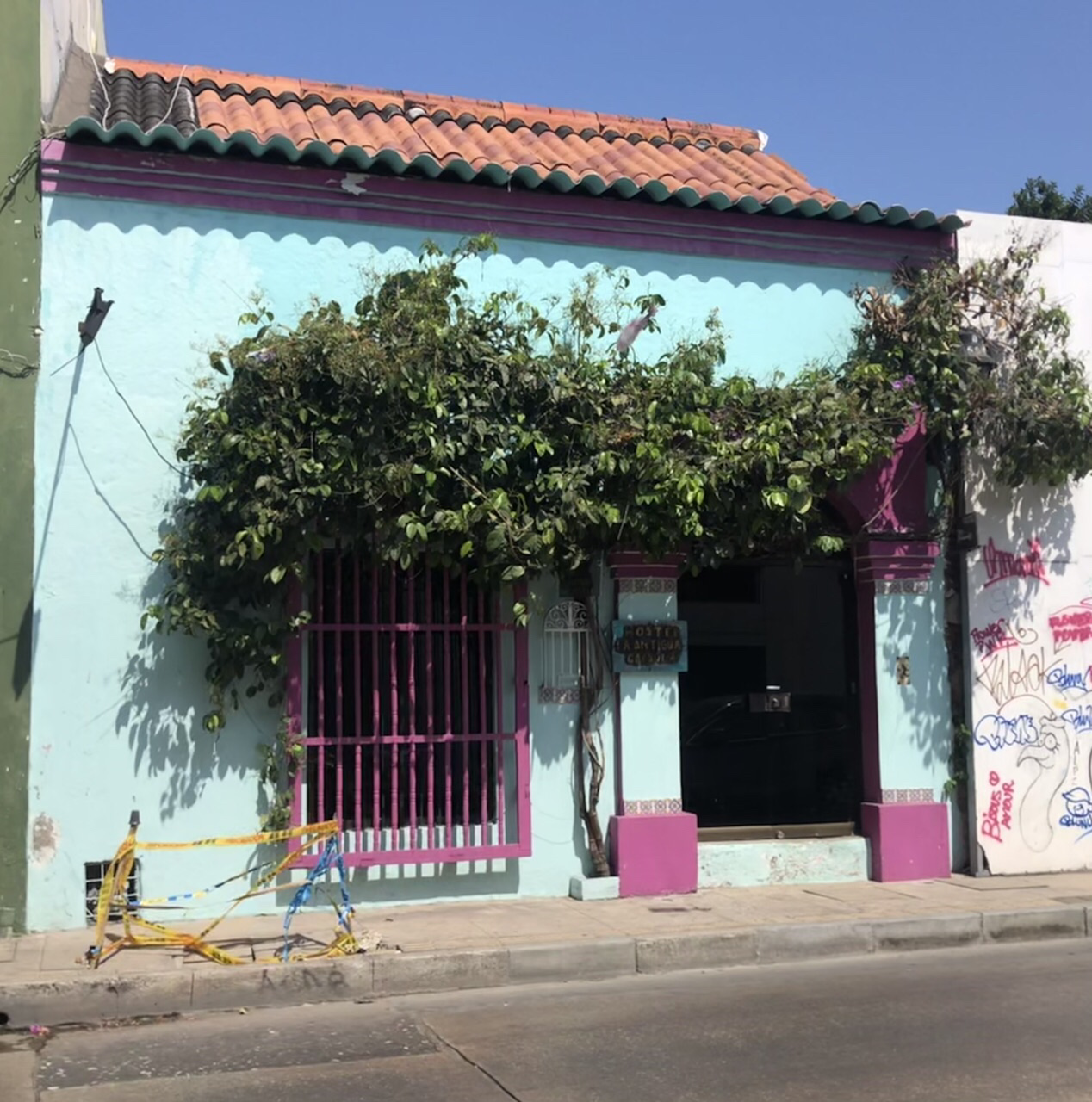
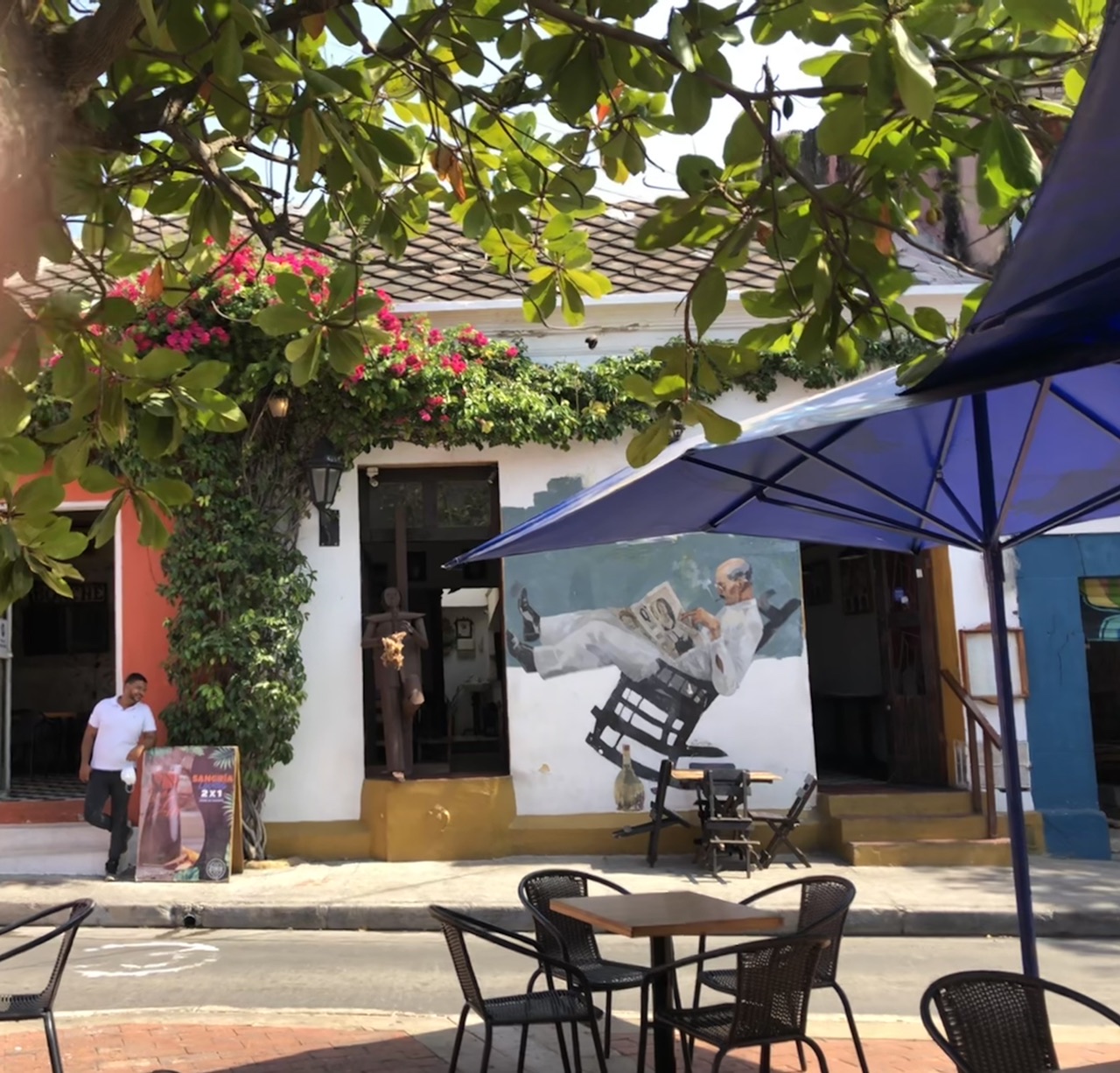

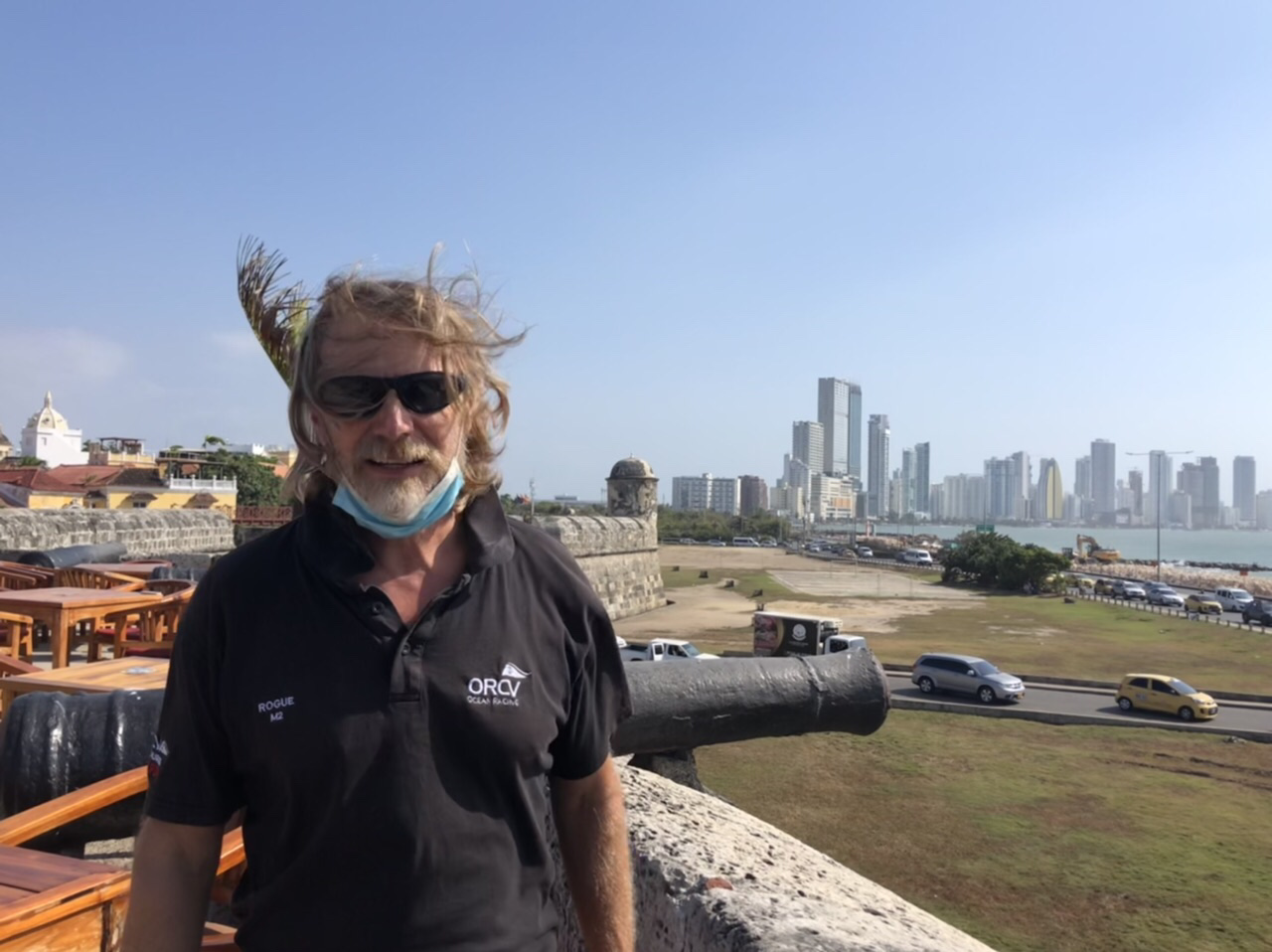
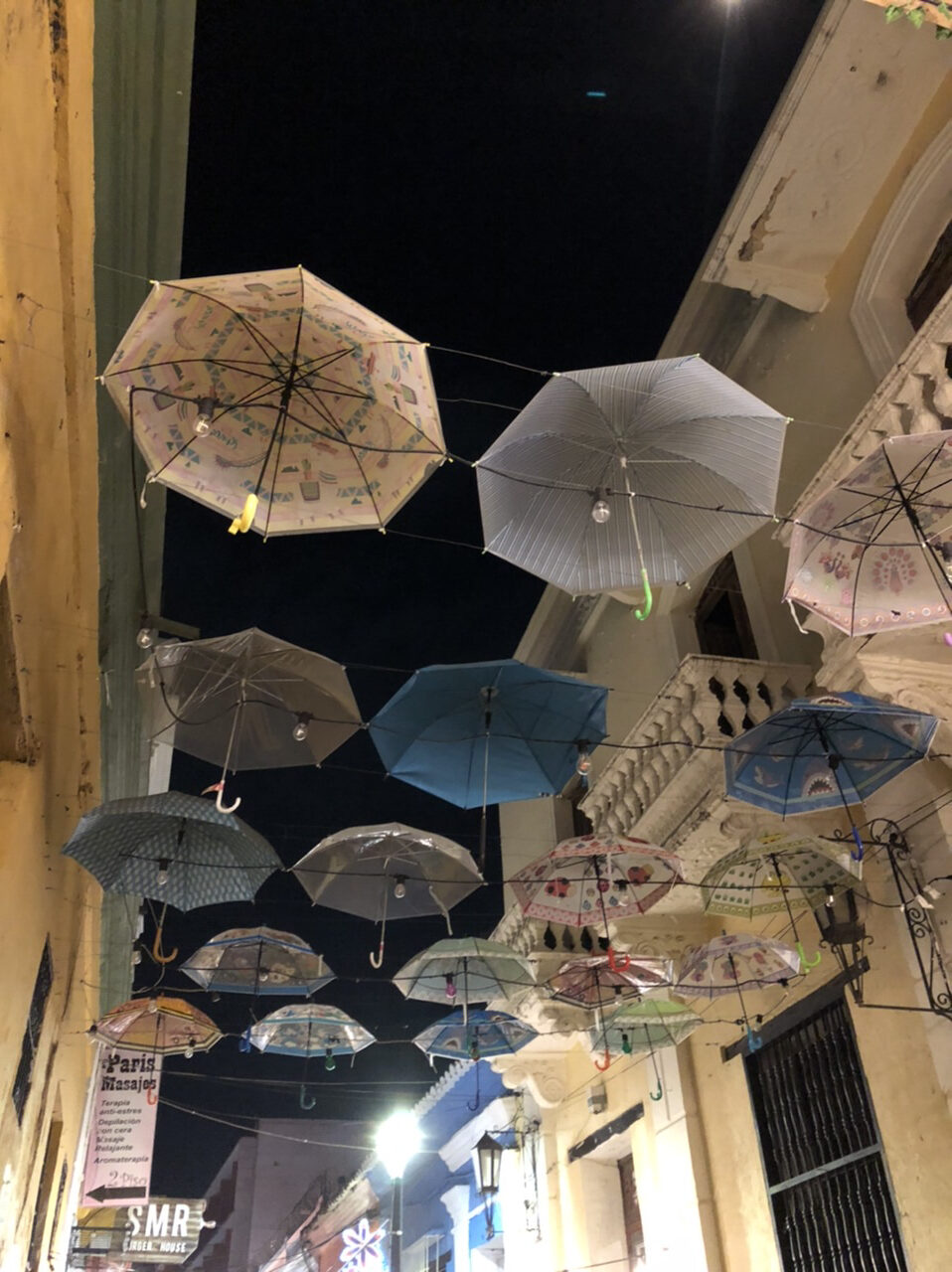
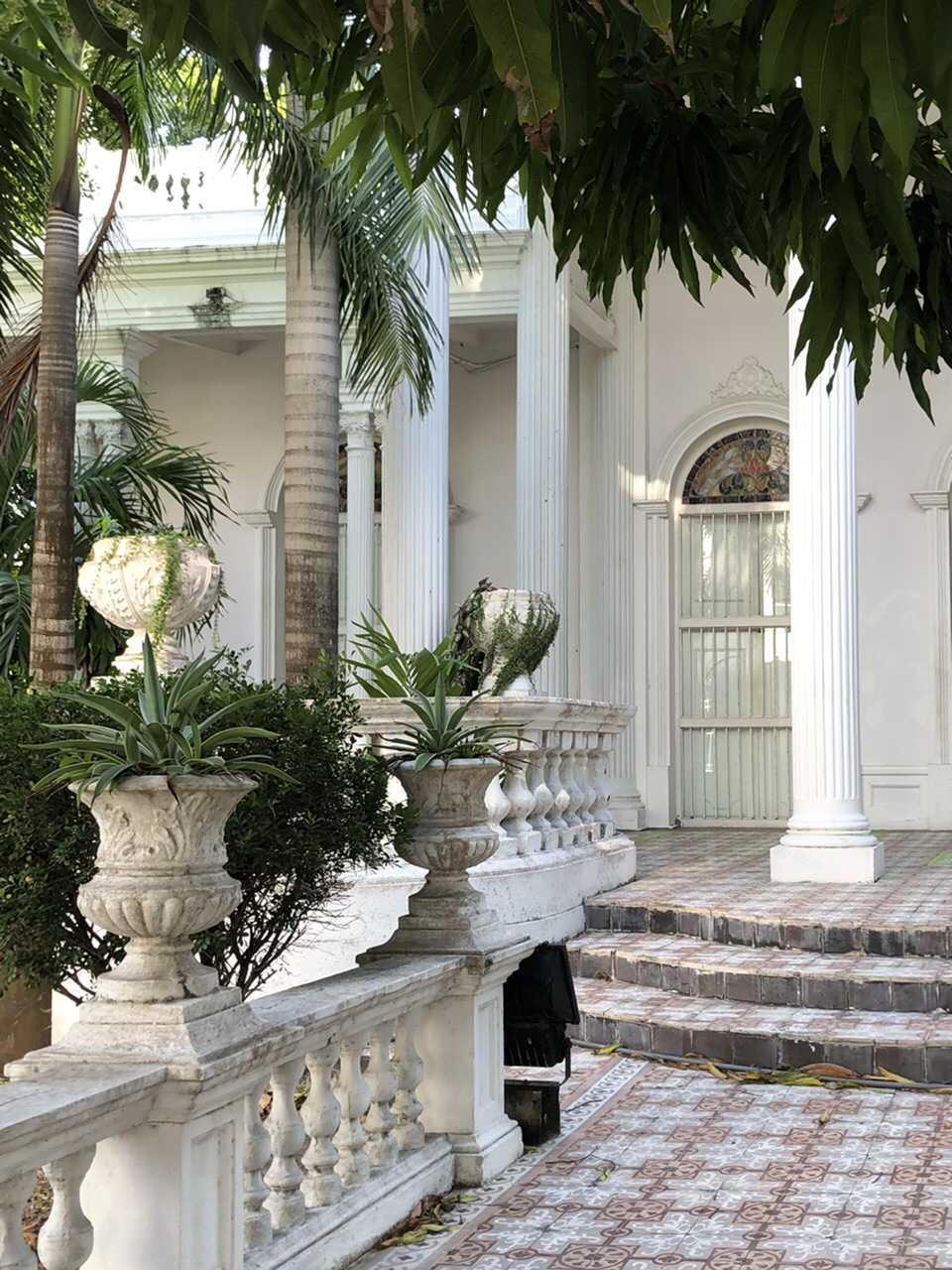
HIGHLIGHTS:
BEST:
- Wandering the streets of the old towns in both Santa Marta and Cartagena, sometimes just us, and at other times in good company. On our first evening in Santa Marta (a Monday BTW) we went for a walk, straight into the thick of life there. Music was everywhere, there were people everywhere, and anything you could wish to buy was laid out on small stalls that jockeyed for position on the footpath. The food for sale on street corners was fresh, delicious, and cheap. The pulse in the air was obvious even to us tired white tourists…a warm welcome indeed! On another evening we met up with a French boat couple that had been our neighbors in Curacao, who were now living and working in Cartagena. This was a lovely evening, mostly for the company, but also for the local tour of parts of the old city that we would never have found. Our first place of refreshment was an absolutely beautiful lush green interior courtyard of an old hotel, and the second a hidden rooftop cafe that also runs cooking classes, so the food was exquisite and ridiculously reasonably priced. (Aptly named Caffe Lunatico!?) The many tiny cobbled streets were framed by gaily painted buildings, with a backdrop of more sombre hues of ancient fortifications, interspersed with huge murals – and all together provided the setting for bubbling life on the street. I wonder if Cartagena is actually the city that never sleeps, forget New York!
- Watching street performers do their thing; dancers and musicians mostly. Some faves were a group of drummers, dressed in white with red sashes, whose beats almost forced parts of you to move, like it or not; and a dance troupe of young fellas, ranging in age from 12-20? Who knows, its hard to tell. They were fantastically strong and agile, sometimes handspringing in a handstand for at least a 10 seconds at a time! The best bit about watching them was that it looked like they LOVED what they were doing, and their joy was infectious. I hope all the street performers made enough money from their performances to survive! Another thing we found interesting was the common occurrence of young rap artists approaching people sitting to eat, and serenading them with a rap song. (Spanish, obviously.) At times it felt a little intrusive, with quite a lot of intense eye contact, much finger pointing and foot stamping. I wondered if it felt better if you could understand the lyrics? But overwhelmingly it was fantastic to be in the middle of such swarming life. So many talented people contributing to a life lived mostly in the streets.
- Visiting the breathtaking Sierra Nevada de Santa Marta. Steep, lush, and a world away from the dry rocky landscape at sea level. Some of the peaks here reach 6000 m, and the ancient Lost City (Ciudad Perdida) lies somewhere in these hills. It is believed to have been founded about 800 CE, much earlier than Machu Picchu. I would have loved to visit here, but alas, another time, as it involves a 4 day trek. However we did visit Pozo Azul, (Blue Well) which turned out to be a very complex series of pools connected by small waterfalls. The water was cool and refreshing, and must have been thought to hold medicinal properties or something, because it was absolutely teeming with people. On the 2 ish km walk in we passed large family groups of all shapes and sizes varying in age from 90 down, all making the long dusty trek to the water. There were plenty of motos offering lifts to the weary on the way back, but personally, considering our suspension less beast, I preferred to walk!
- The whole experience of hiring the moto was fantastic. The places we could go, but also seeing life from this angle! We were both amazed by the diversity of our companions on the road. From out precarious position on the moto, we shared the road with big honking trucks, buses, mini buses, many yellow taxis, normal cars, hundreds of other motos, and all variety of vehicles, tooting informatively, some coming towards us in the wrong direction, just when we least expected it! A pony and dray filled with bananas, mules pulling building materials, people pushing barrows, pulling barrows on bicycles, the occasional unperturbed pedestrian, you name it we were all on the road together. Magnus did a fabulous job navigating the intricacies of these trips it was always a blessed relief to arrive back at the marina, wild eyed but alive! We eased into the frenzied pace a little more each day, and I was struck by the blasé nature of other people on motos. There were whole families in shorts, T shirts, no shoes, let alone helmets. One family whizzed past us with mum, the three year old, and then the 10-year-old on the back. The 10-year-old was reading a book with two hands, not holding on at all. I was impressed, and had to relax my white knuckled grip on Magnus’s T-shirt a little bit! (However this did not stop me from almost expiring from the heat as I sat, fully covered in jeans, runners, a soft shell jacket AND helmet, in an effort to save some skin should an accident happen!)
- Learning a little about Colombia’s history. Eg, we visited a HACIEDNA! I love saying that word, especially with my crummy Spanish accent. It was called Quinto de San Pedro Alejandrino . This is also quite fun to say in a crummy Spanish accent! FYI a hacienda is, courtesy Wikipedia, “A hacienda , in the colonies of the Spanish Empire, is an estate (or finca), similar to a Roman latifundium. Some haciendas were plantations, mines or factories. Many haciendas combined these activities.” This particular one is where Simon Bolivar (AKA El Libertore) died, as a guest of the richest man in Columbia. Bolivar was not keen to visit because the man was Spanish, however he did spend his last days here. Obviously he was not keen on the Spaniards; he is credited with leading the countries that are now Colombia, Venezuela, Ecuador, Panama, Peru, and Bolivia to independence from the Spanish Empire. We learned these facts from an eloquent student volunteer who led us around the site with enthusiasm and useful information.
- We finally caught a tuna! The first fish of the year! We accidently let several get away, and so relished this one. We ate it lightly fried, as sashimi, and in a ceviche. About time!
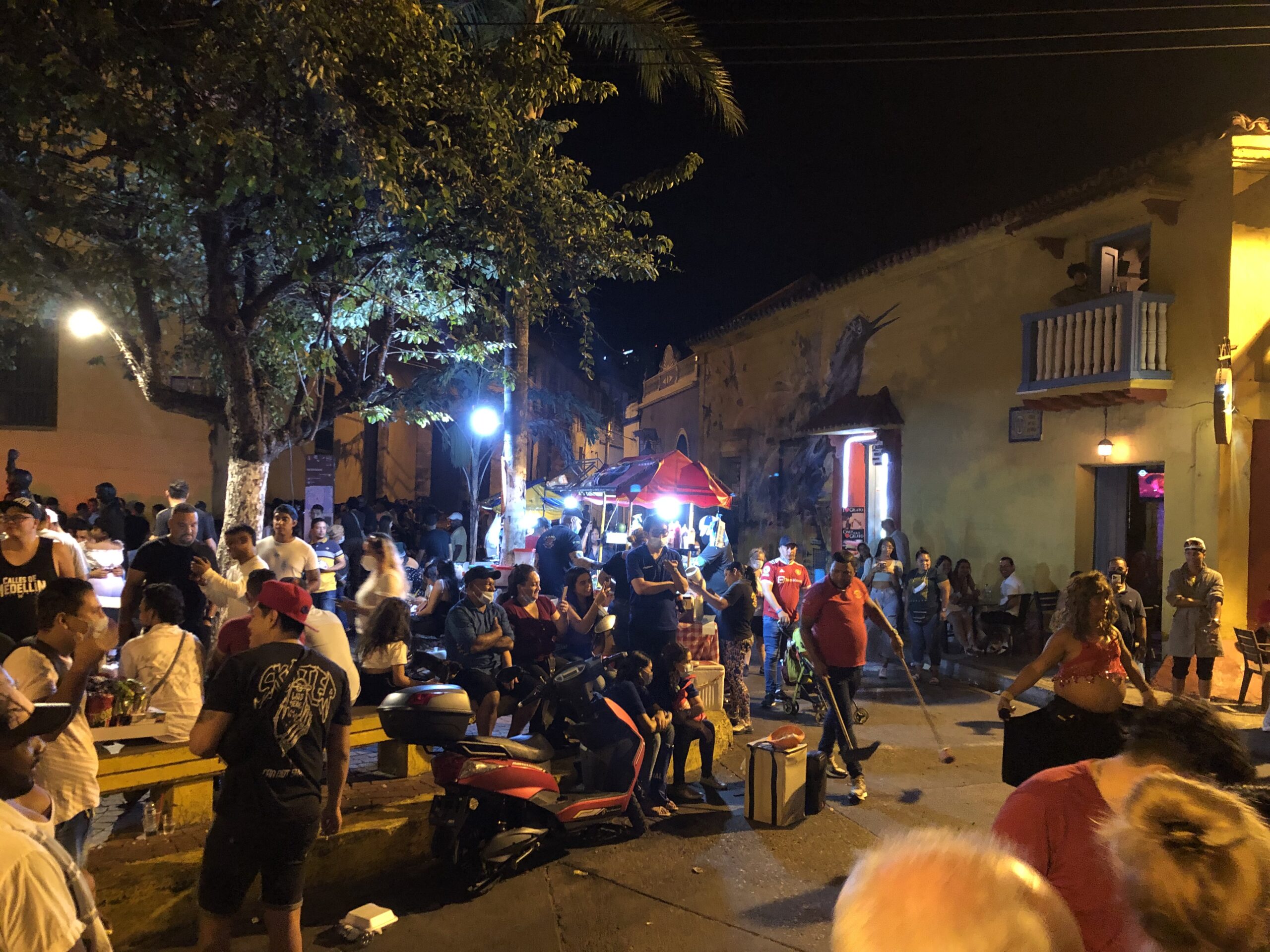
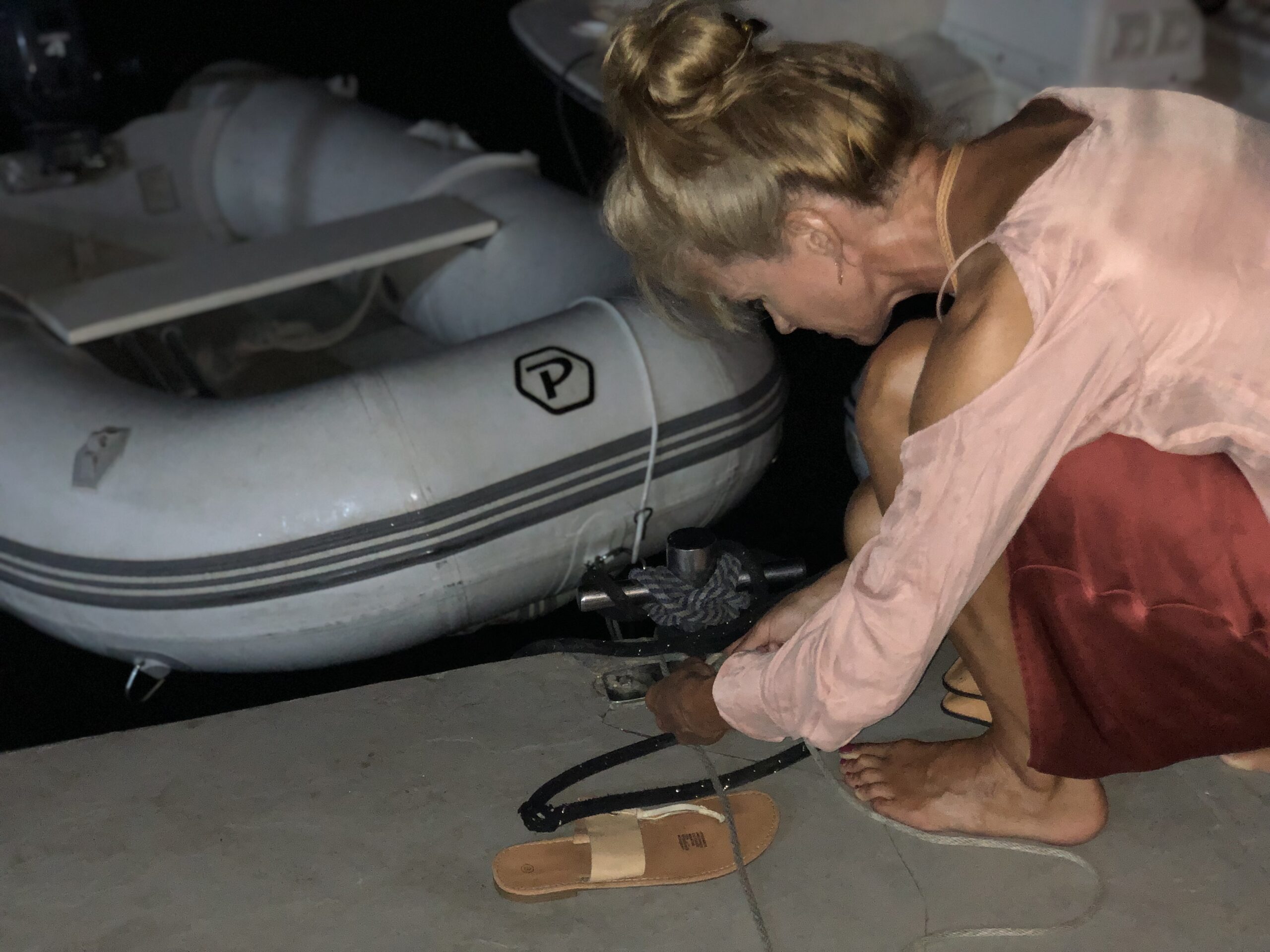
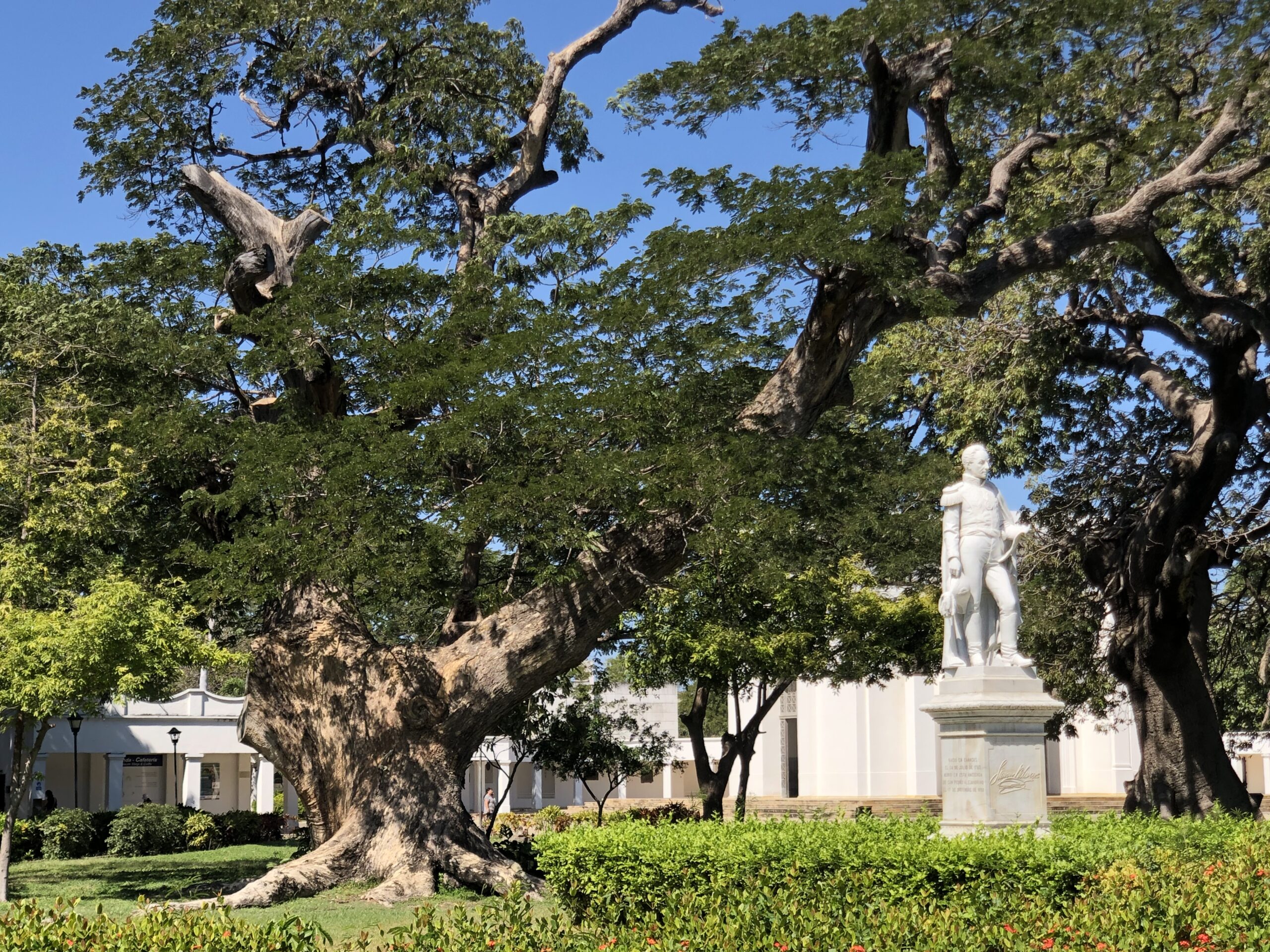
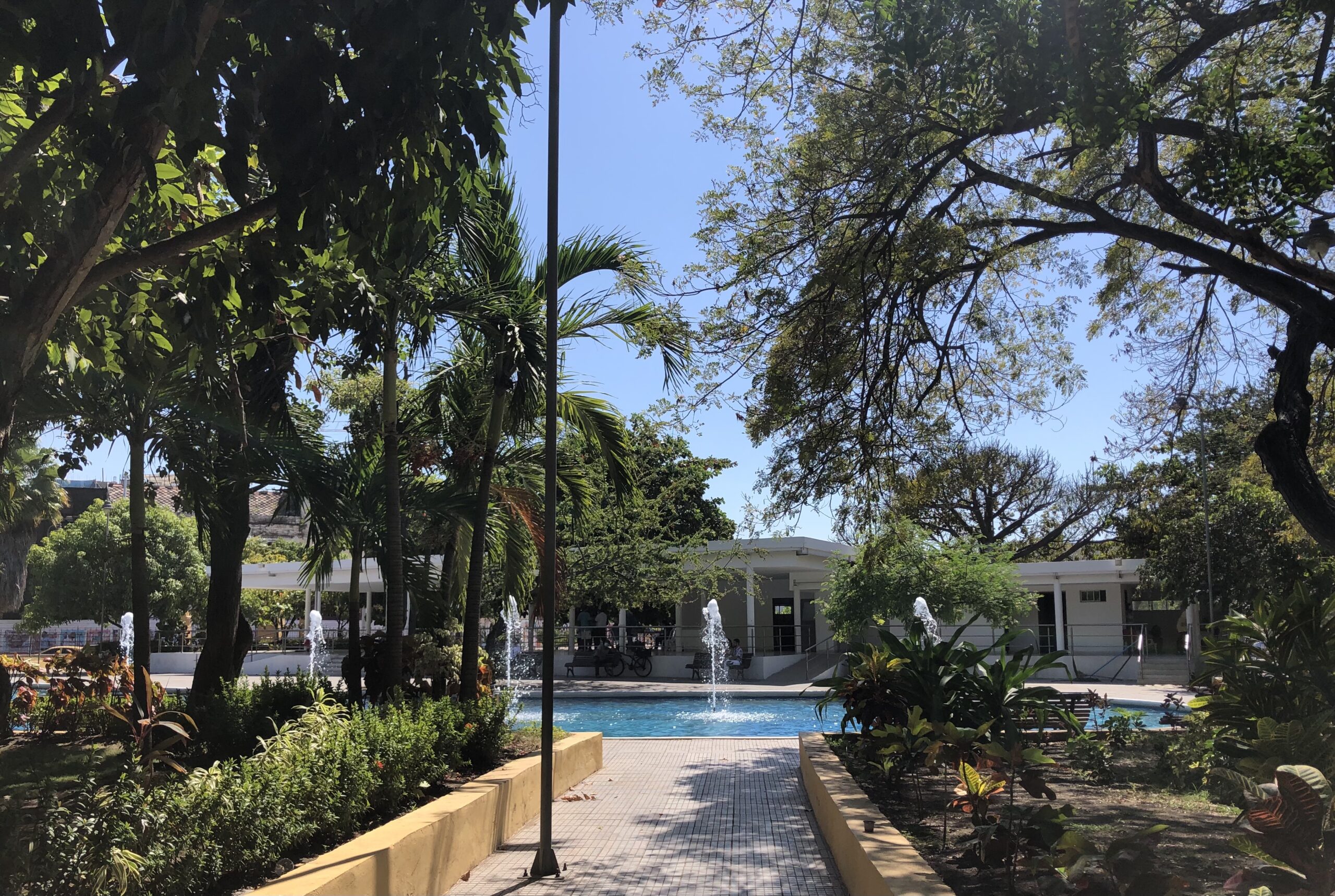
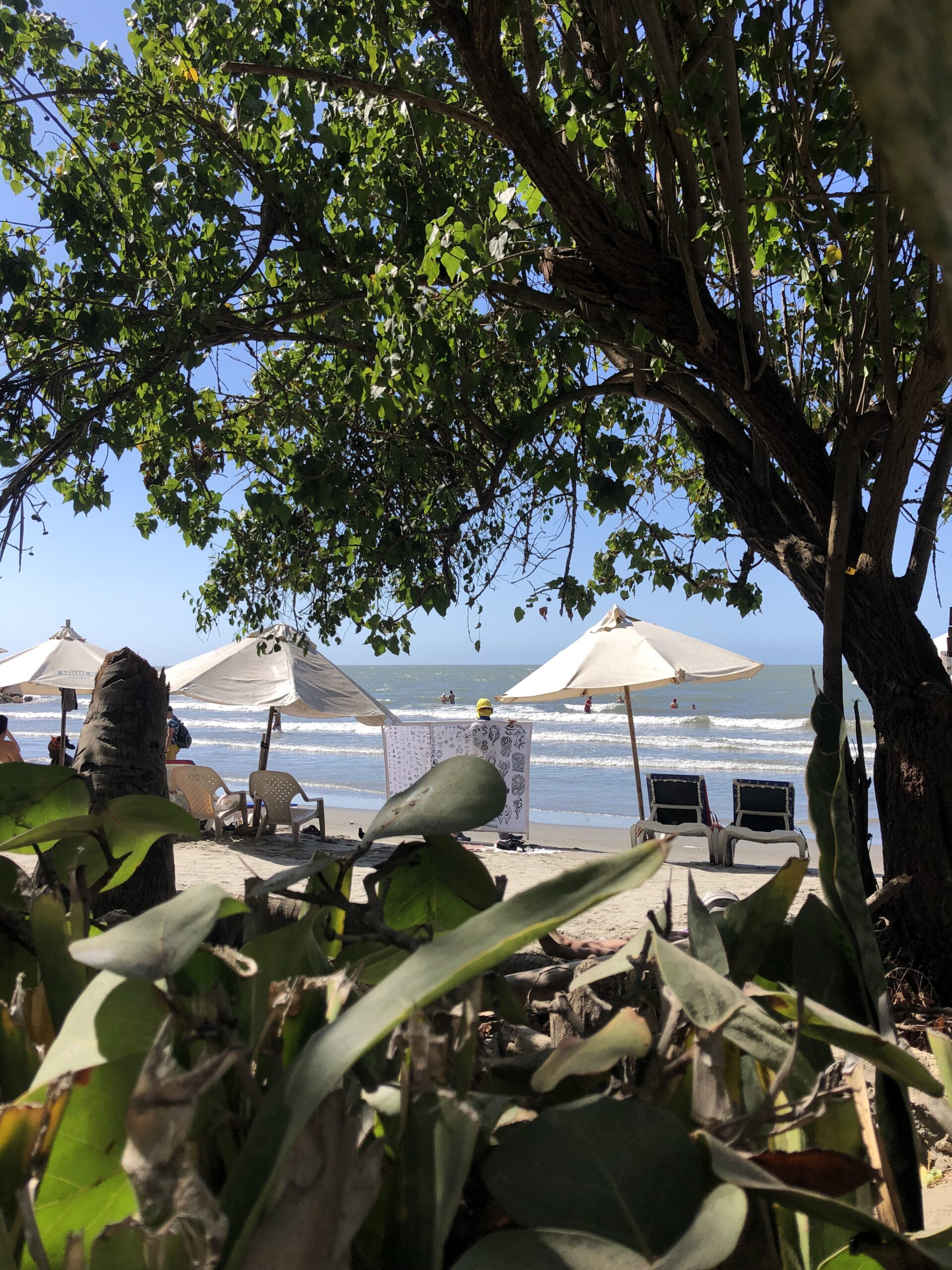
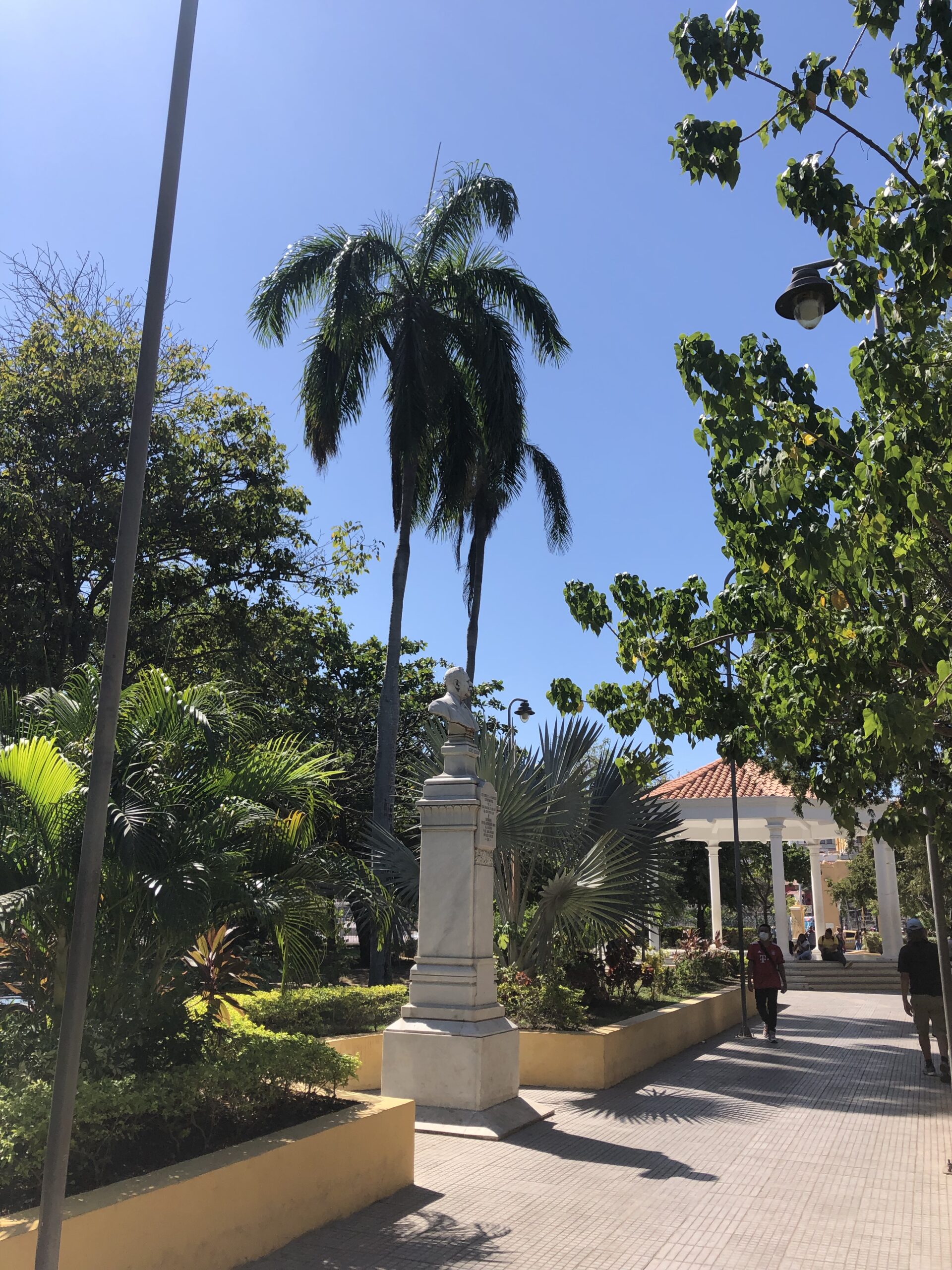

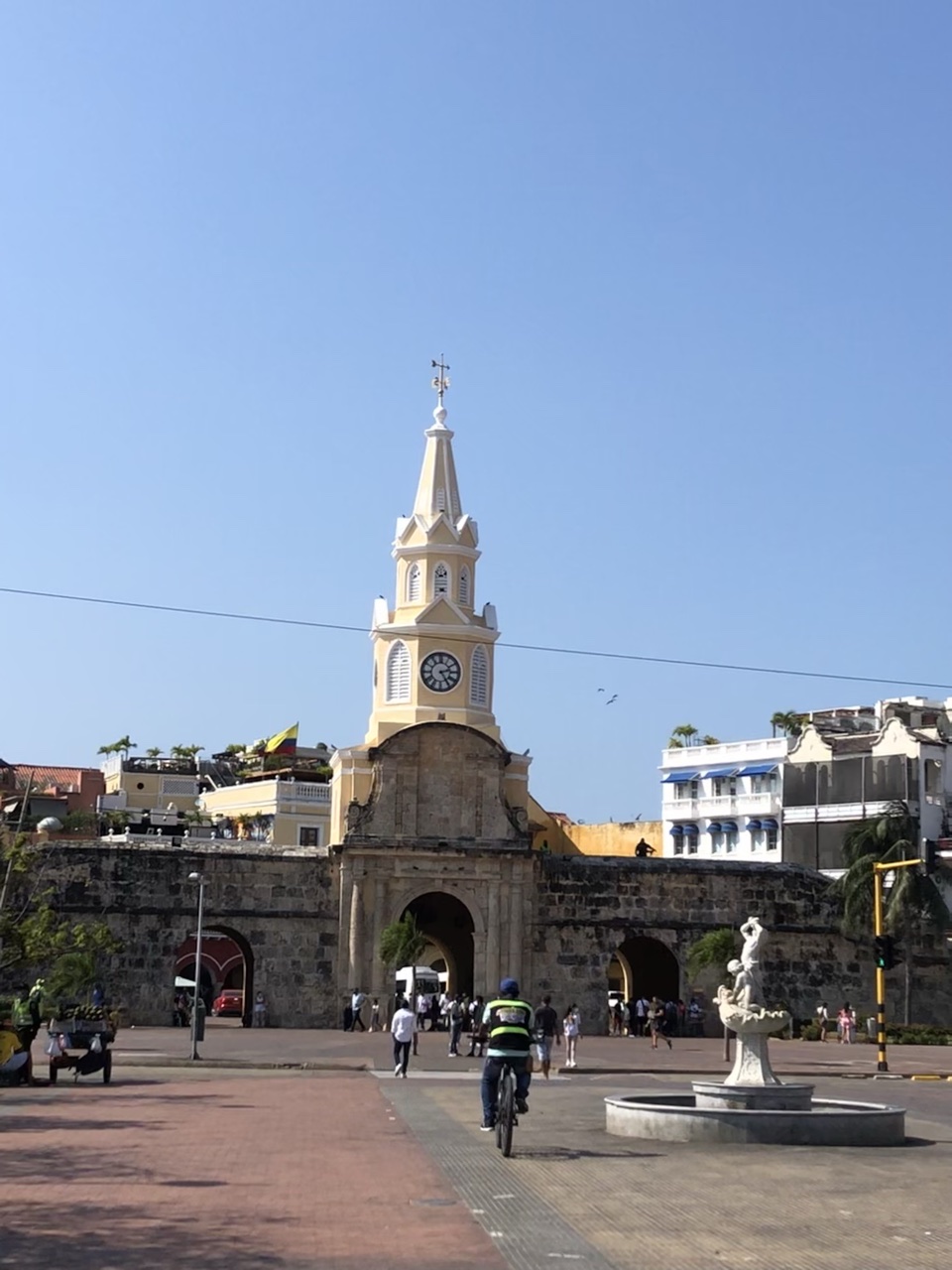

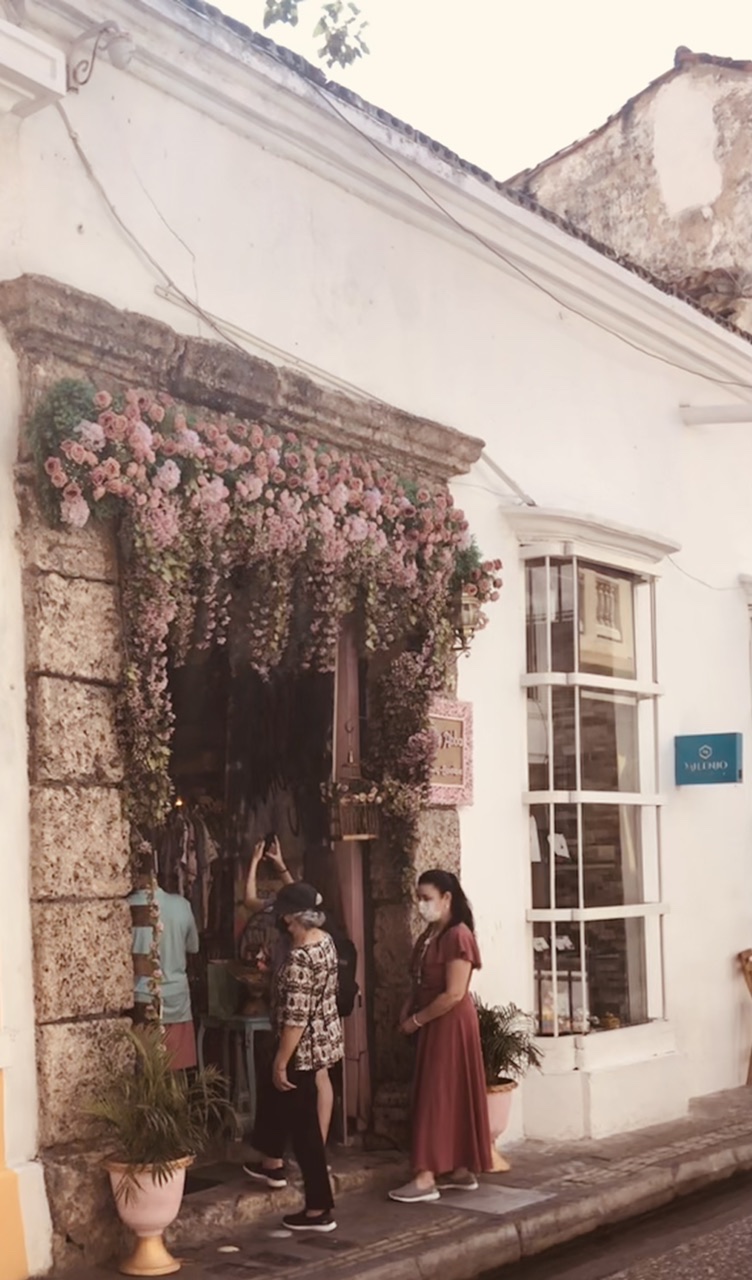



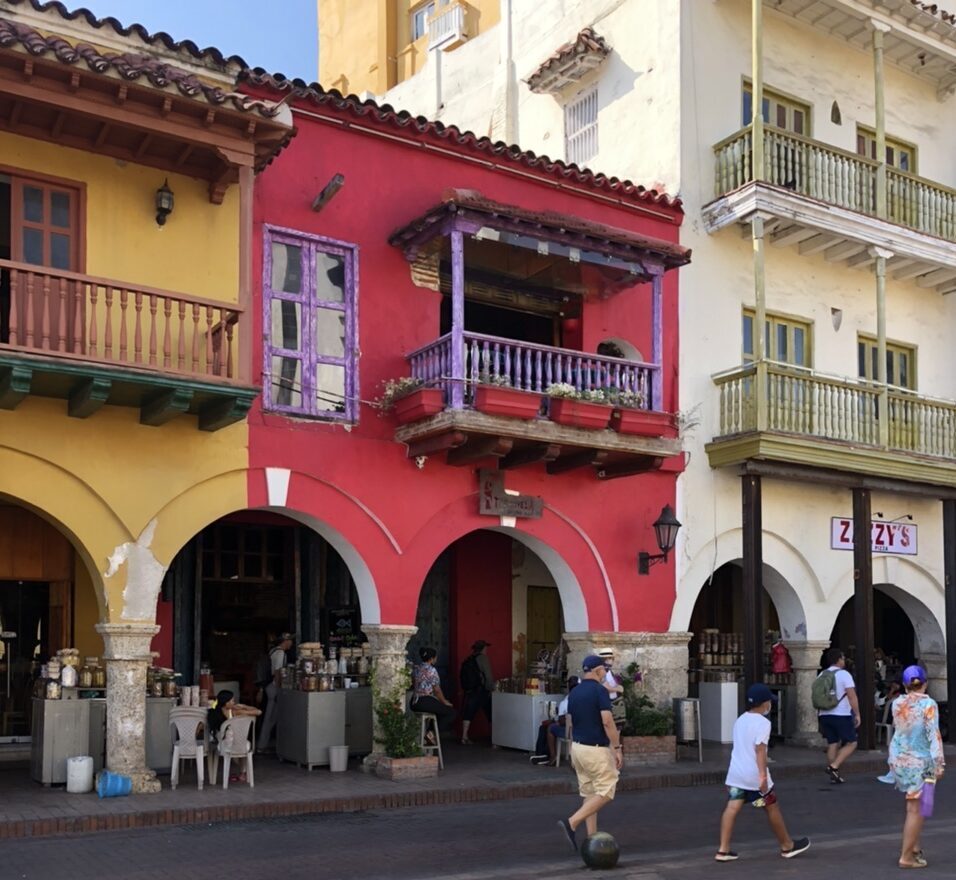
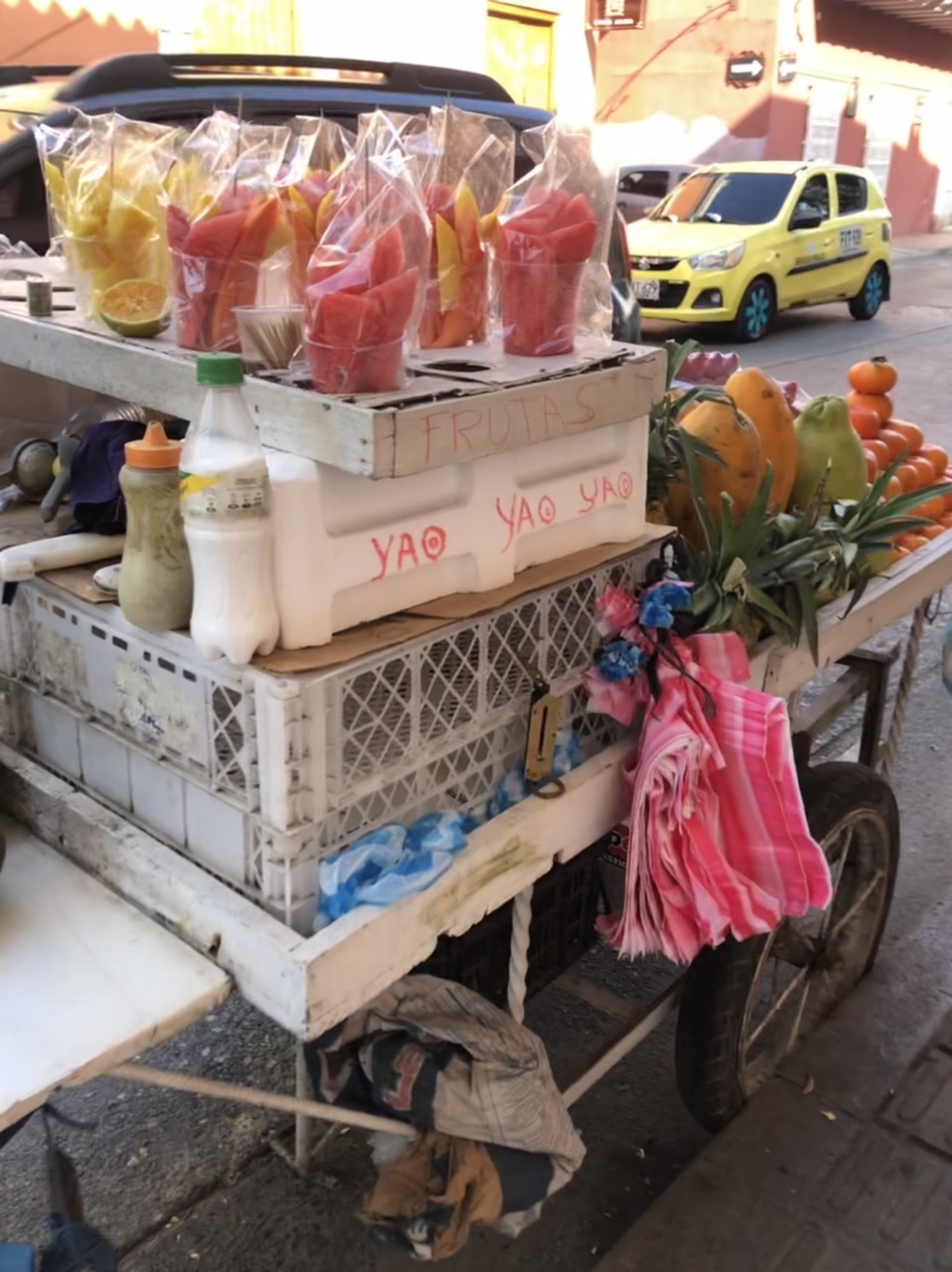
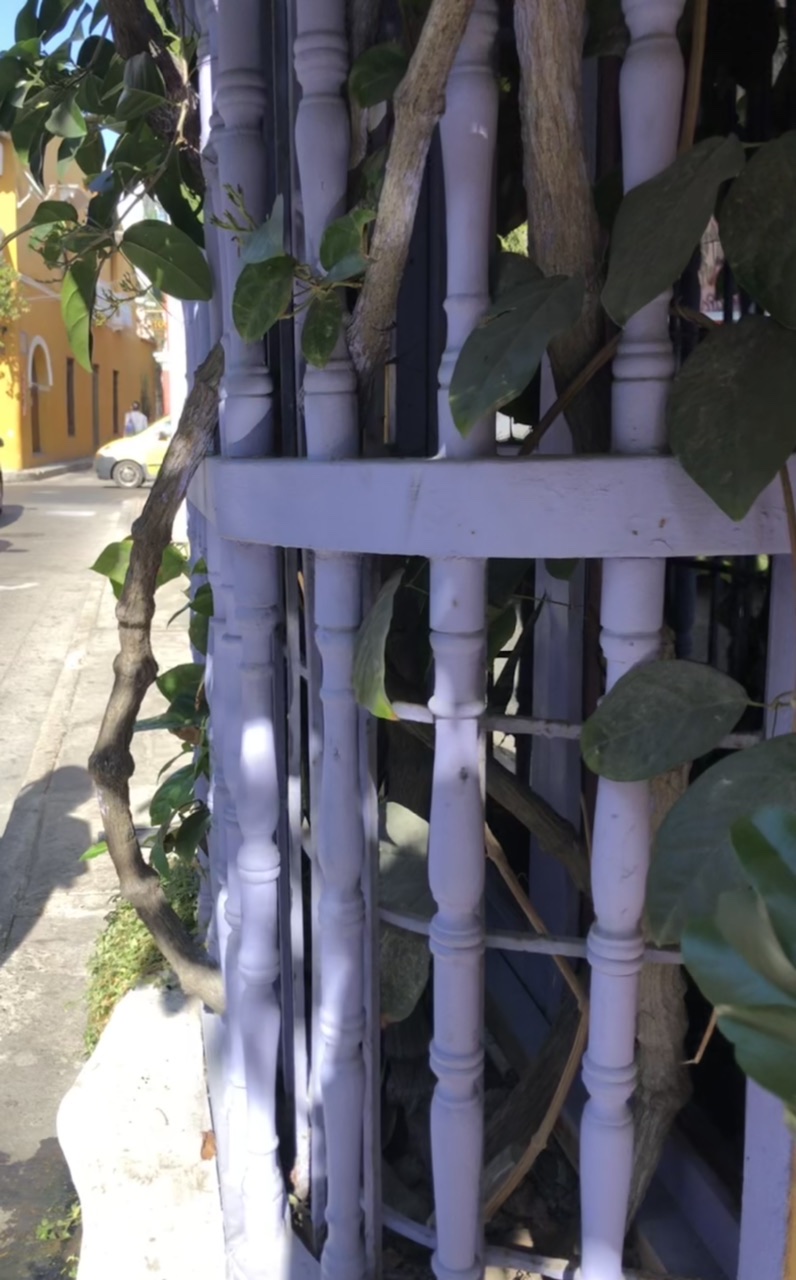
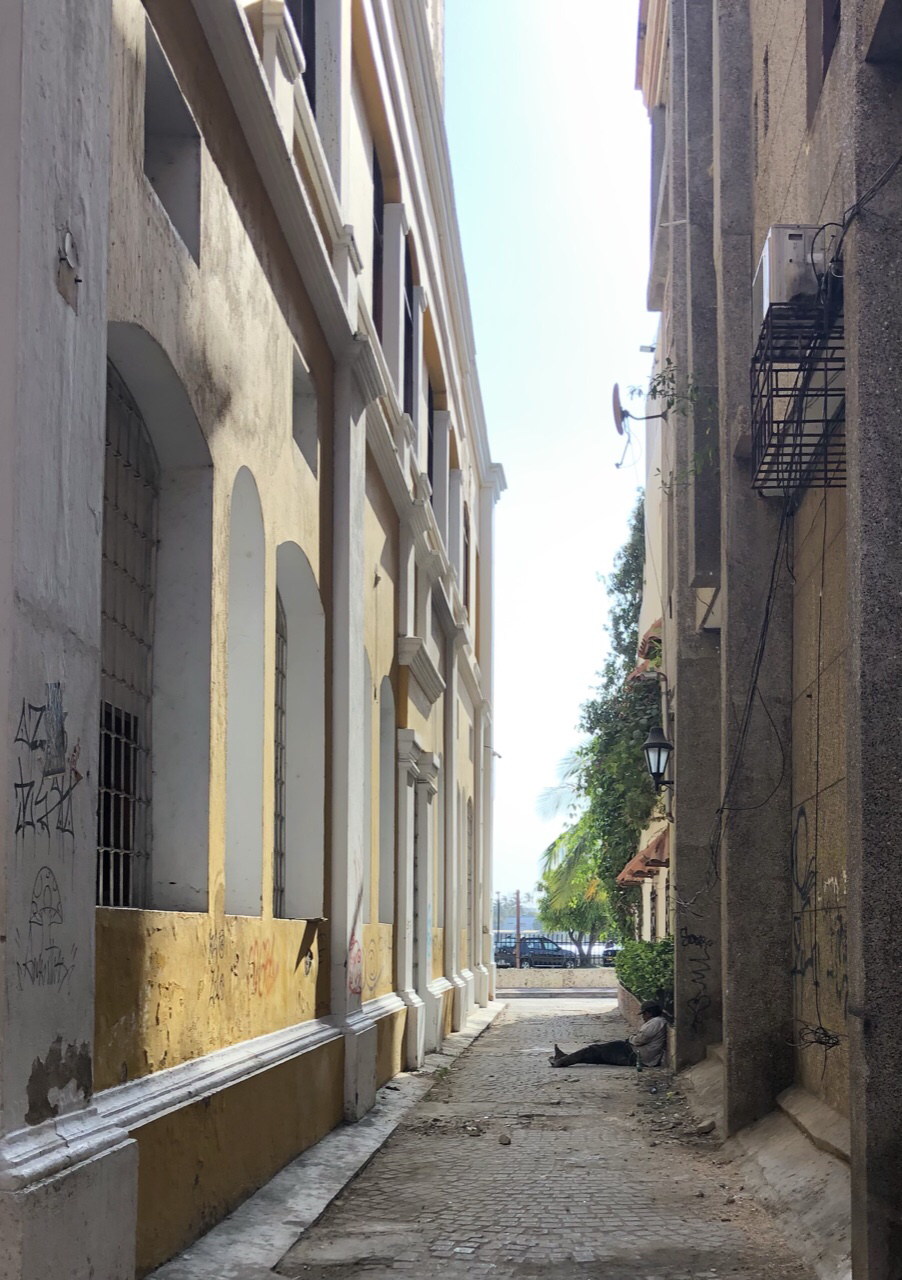
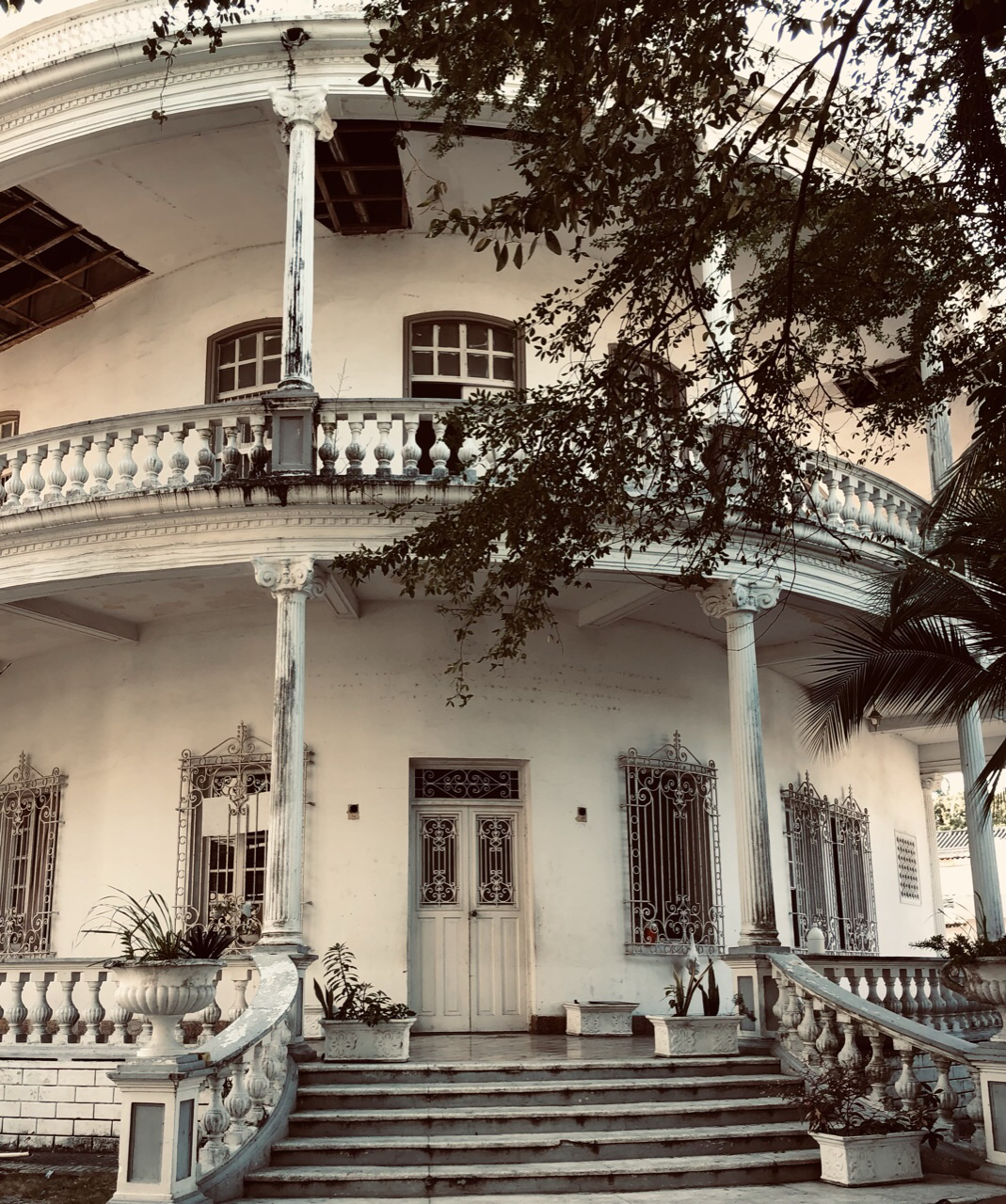
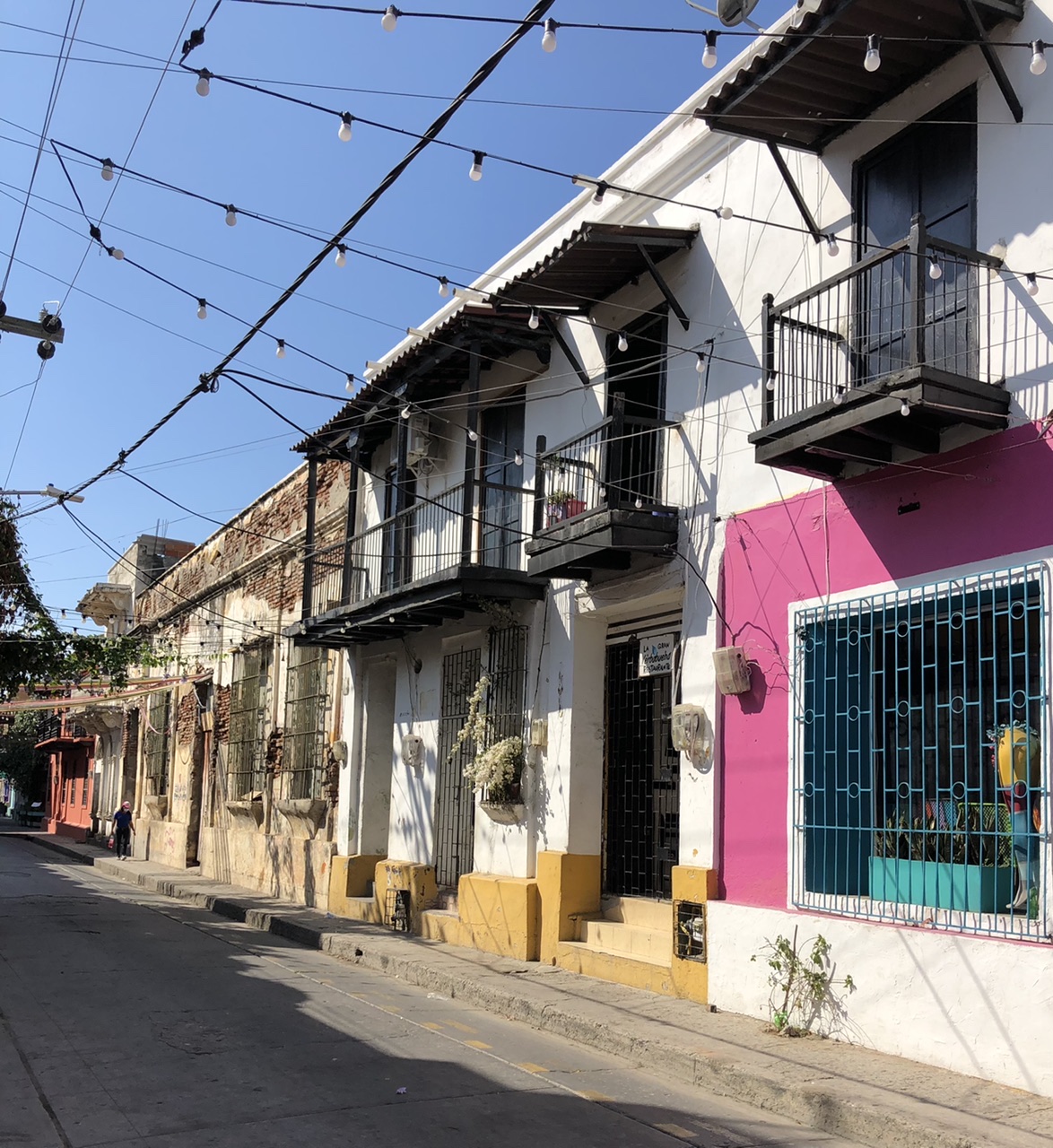
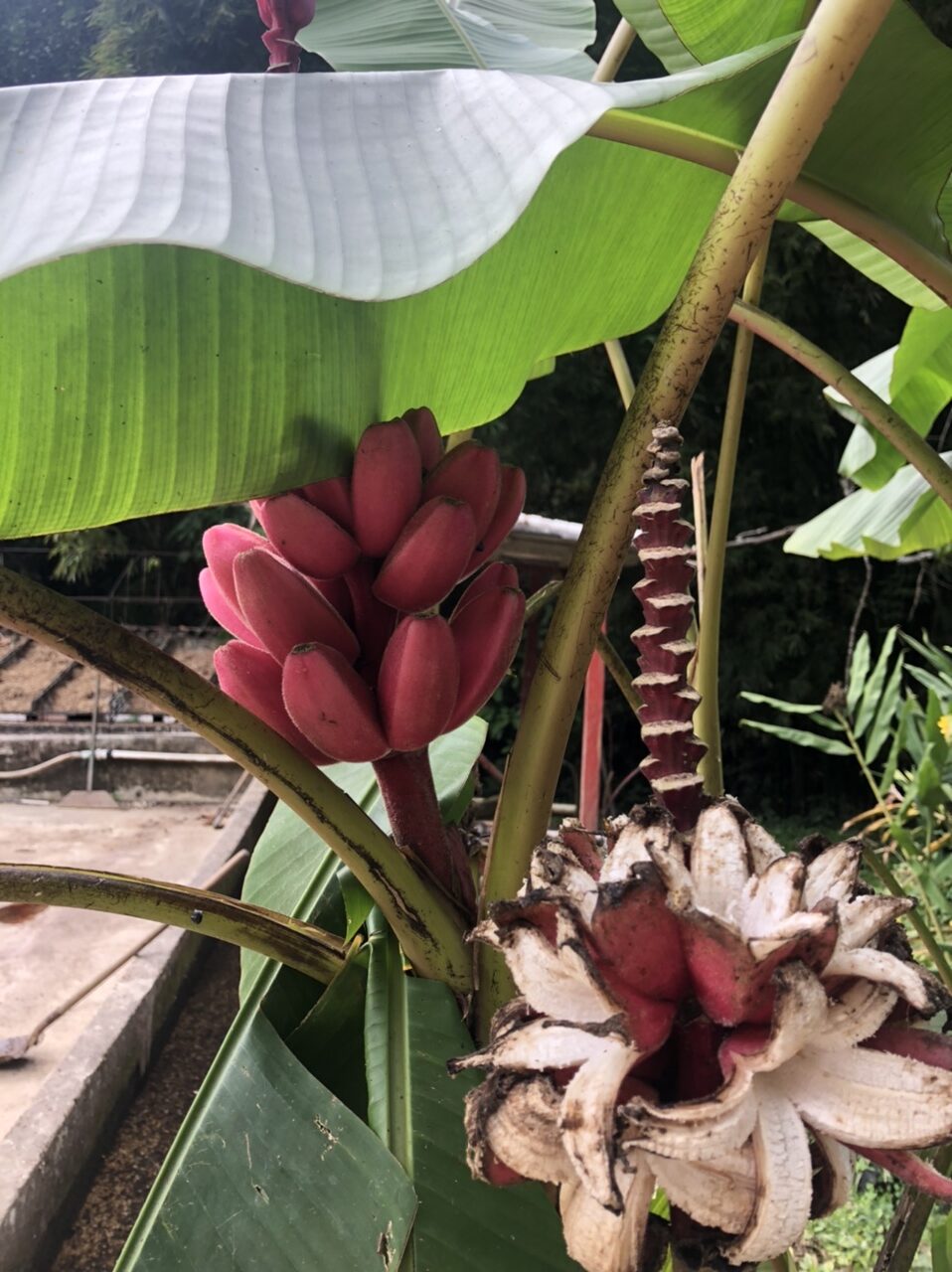
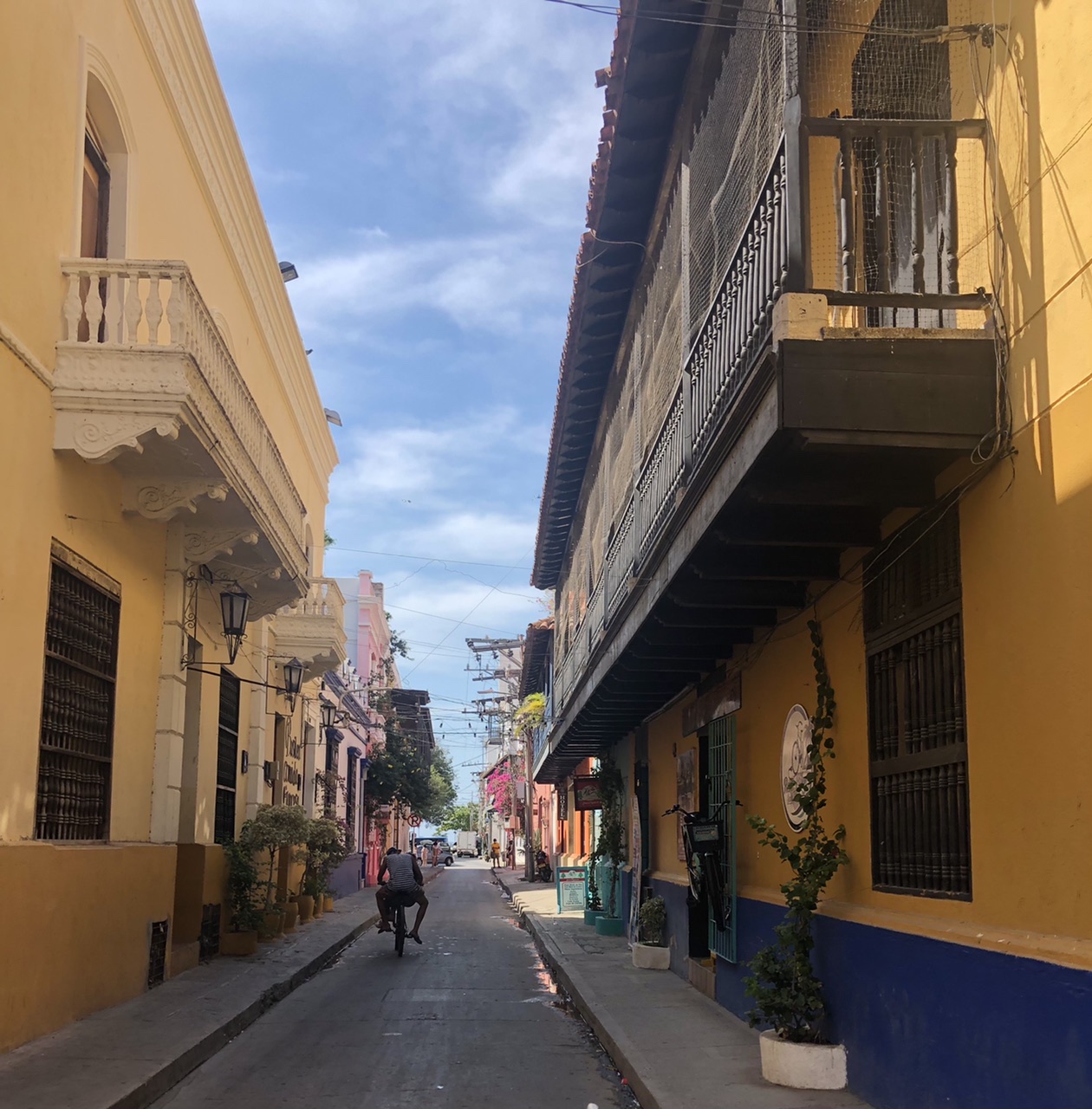
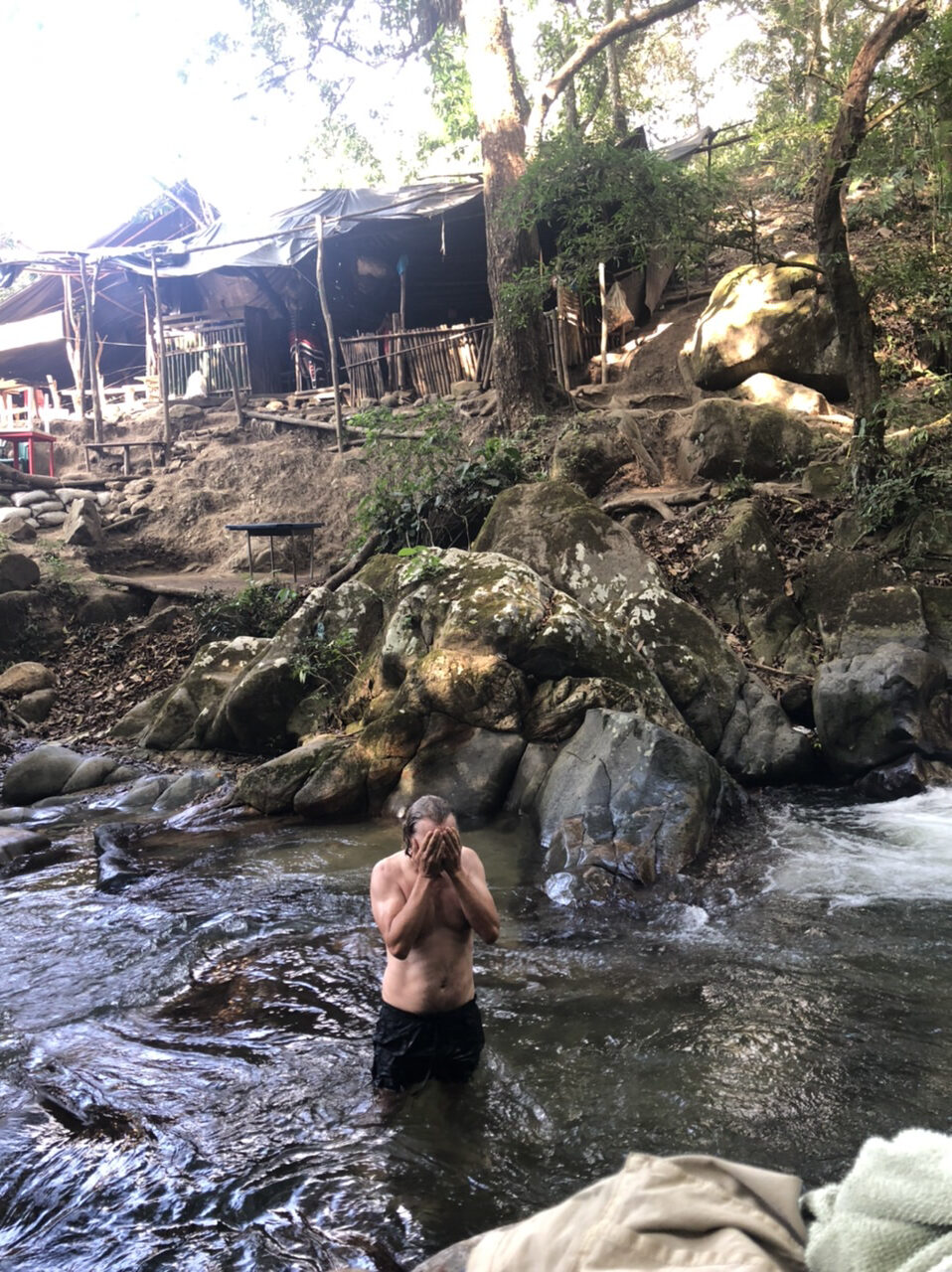
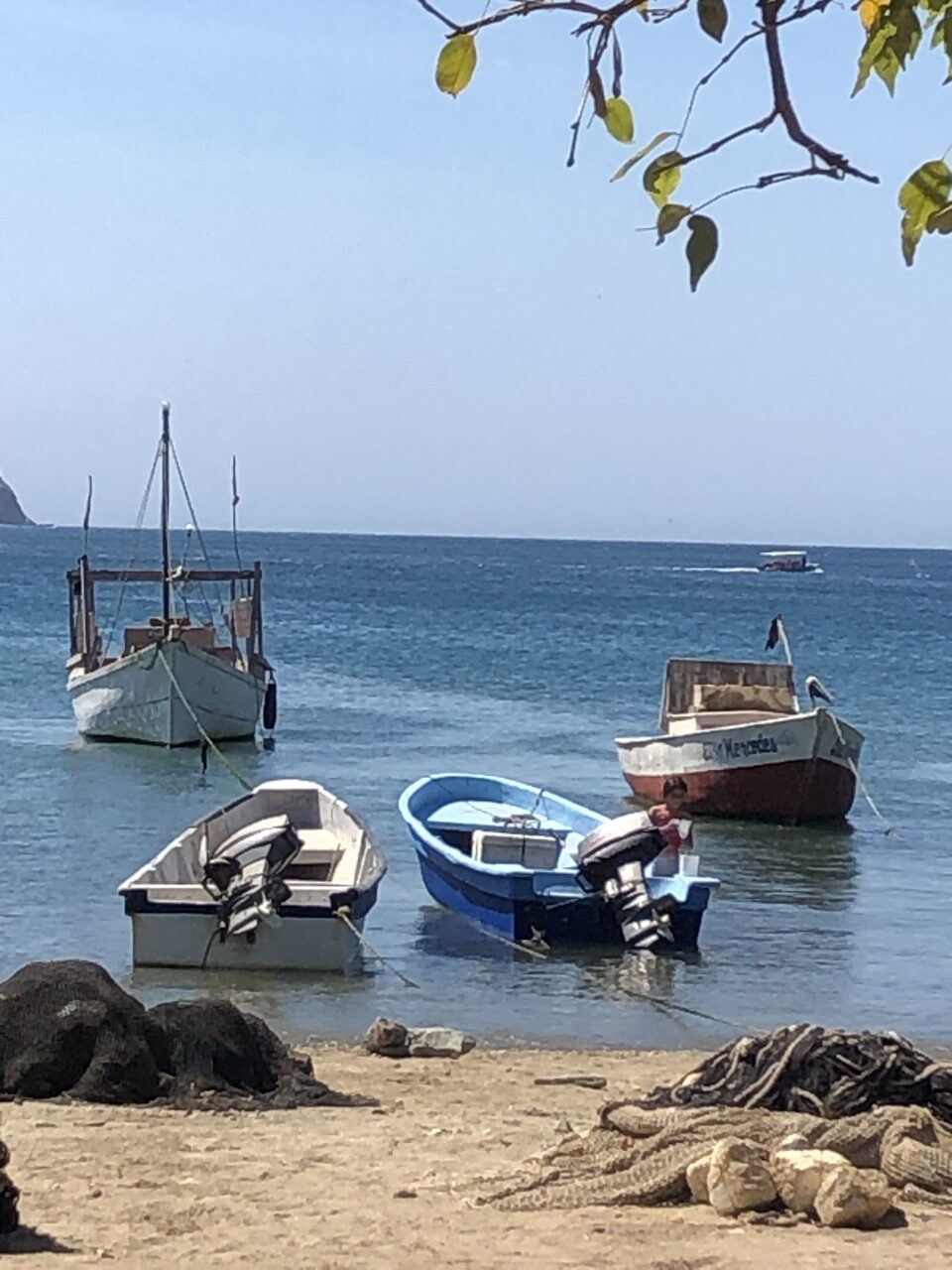
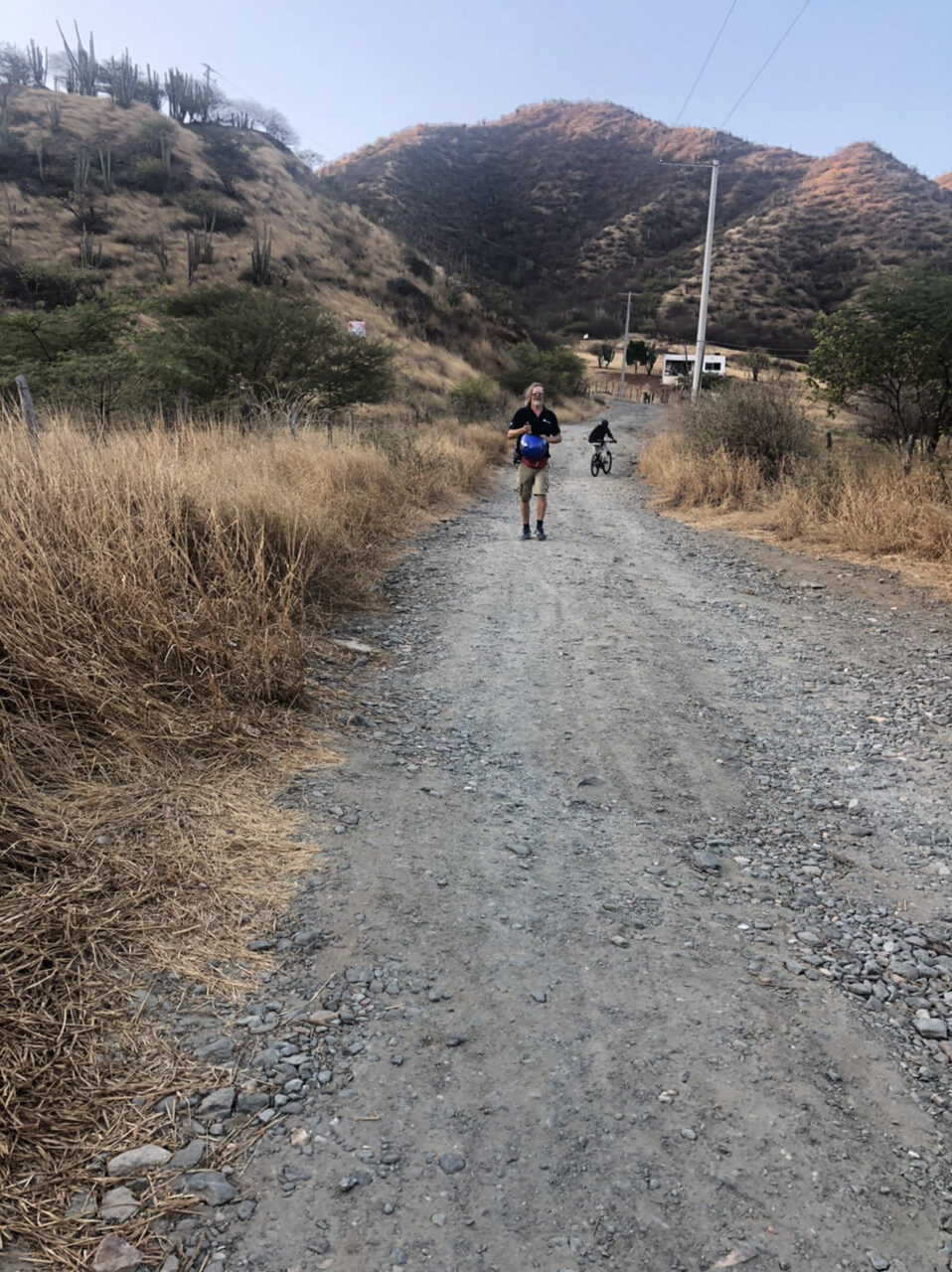

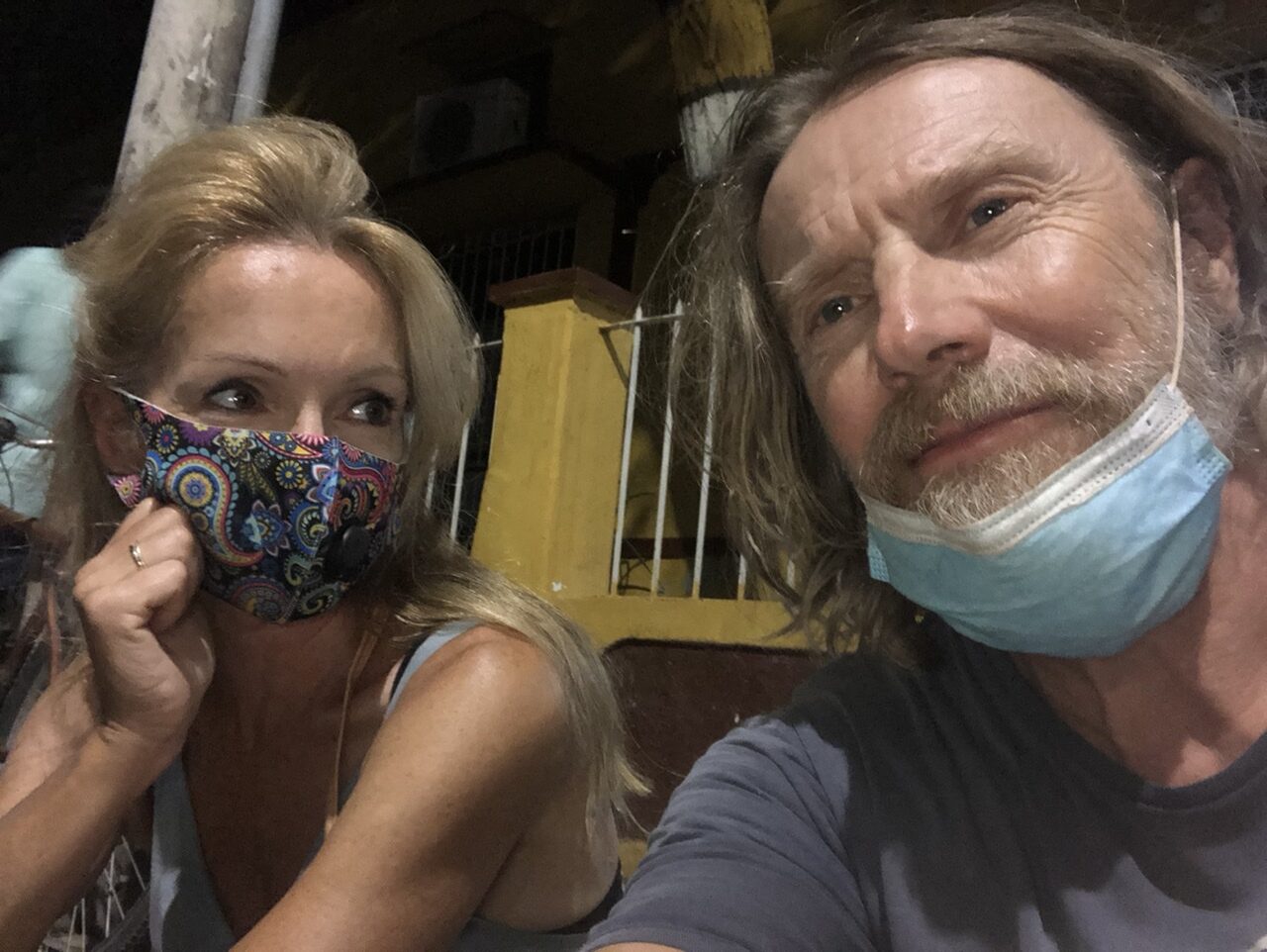
WORST:
Its usually hard to find things to describe as the “worst” because, let’s face it, we are sailing in the Caribbean. But this month a couple of things hit me pretty hard.
- One day, as Magnus and I sat on the kerb sharing an arepa from a street vendor we noticed a man staying close, and were half expecting him to approach us asking for money. But no, when he noticed we were finished, and looking around for a bin for the paper serviette and small scrap of bread, he gestured to ask that instead we give it to him, and he ate hungrily our meagre scrap. It still makes me extremely uncomfortable. Next time should we buy an extra to give to someone in need? The problem of abject poverty nestled within the bustling life of many cities is bigger than we can solve, but how do we make a small difference to some one, even that one man, face to face. On other days we, like everyone else, stepped around men as they lay in the street, asleep or unconscious. It helps to remember that we support charities from home – but it is still hard to see distress and not act to help then and there.
FUNNIEST
- Magnus’s failed attempt at casually kicking his flip flop/thong from the cockpit into the dingy. It missed, and landed in the water, which was moving rapidly. He heroically jumped into the secured dinghy in an effort to reach it, and I helpfully threw him the VERY POINTY fishing hook, in the hope that he could reach the fast disappearing thong with it. He couldn’t, and luckily the fishing hook didn’t sink the dinghy on the short excursion Magnus then made in a fruitless search of the Bay of Cartagena. Some fresh Havaianas have filled the void, and all is well with the world.
- Many conversations conducted entirely via google translate, with us passing the phone back and forth to our conversational partner in a variety of situations. One of the funniest was at a large supermarket whilst stocking up for our imminent visitors. Provisioning is a four hour supermarket expedition, three trolleys and two lists of apparently extremely rare and elusive items, two refreshment breaks at the on-site cafeteria, and this time finishing with a prolonged but warm and friendly transaction at the checkout requiring literally 26 google translated messages between the checkout assistant and us! Most of them were pragmatic, but one was her wishing us an enjoyable time in Colombia!
- The care and concern shown to us by our Immigration Agent, who facilitated our re entry to Colombia. He had come with a good recommendation but still, handing our passports over to a young Colombian man we did not know felt somewhat counter intuitive. We quickly learned that our discomfort was completely unwarranted, as he sent us concerned google translated tips on how NOT to get robbed blind whilst here! When I thanked him for his care and advice, his response was simply “I am here to guide you, and avoid bad times.” Bless him. He looked after us as if we were were babes in the woods, and we probably are. His concern was especially touching, as I think he was significantly younger than our children.
- Experiencing the busiest beach we have EVER seen. Playa El Rodredo is an absolutely over the top wild Colombian tourist mecca. The beach was like making your way down Bourke Street on New Year’s Eve, almost shoulder to shoulder. At this time the sun was on its way down, so I can’t imagine what it must have been like during the day. Cray cray, as people much younger than me might say.
- This was not funny until afterwards…. but 10 nautical miles offshore, on our way between Santa Marta and Cartagena, it appeared that we were rapidly approaching an enormous sandbar whilst under sail at a fair clip! The water abruptly changed from deep blue to a very light colour, exactly as very shallow water would look. Magnus dashed downstairs to recheck the chart, (a very good idea!) but I felt that as we shortly ran hard aground on the sandbar, I would be solely responsible for the ensuing disaster. Fortunately the crisis was averted by the 500 m of water below us, and we sailed on unharmed. The change in water was just disturbed water caused by the outlet of the River Magdalena. It was a surprise that the difference was so noticeable this far offshore. So, funny now, but not so much at the time. We have heard that there is generally a lot of debris carried out to sea here, and cows, trees, and fridges have been seen floating amongst it.
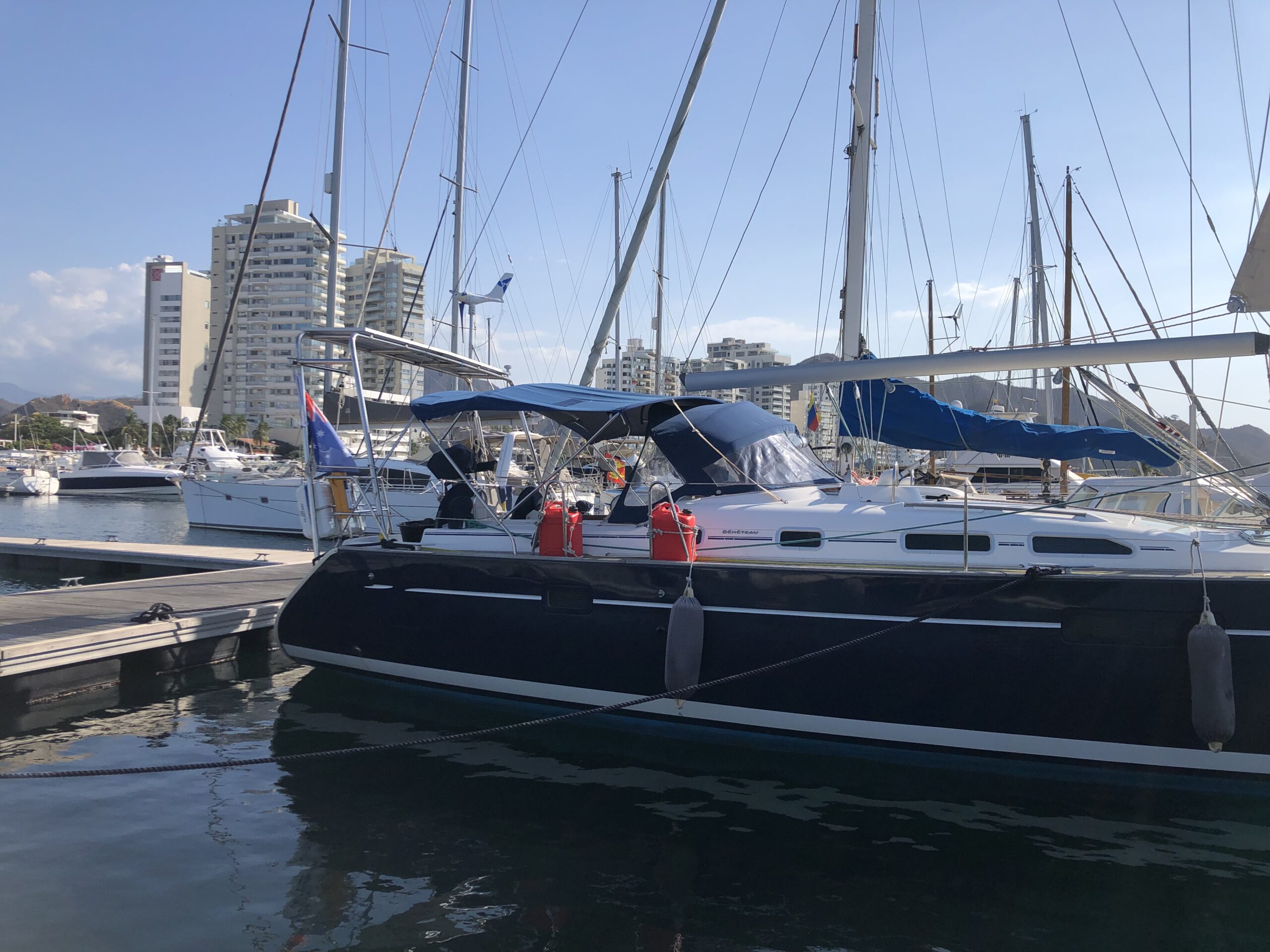


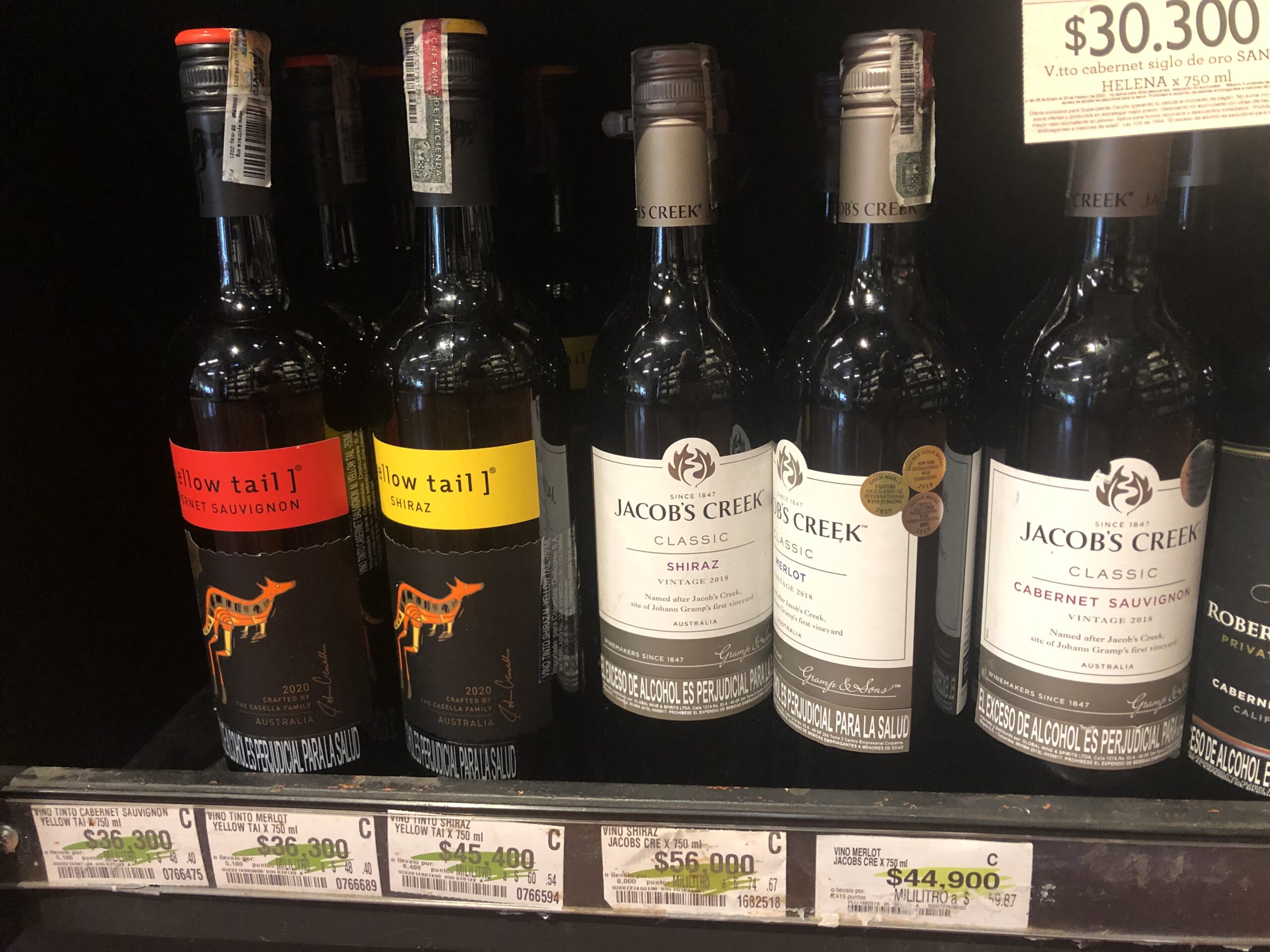
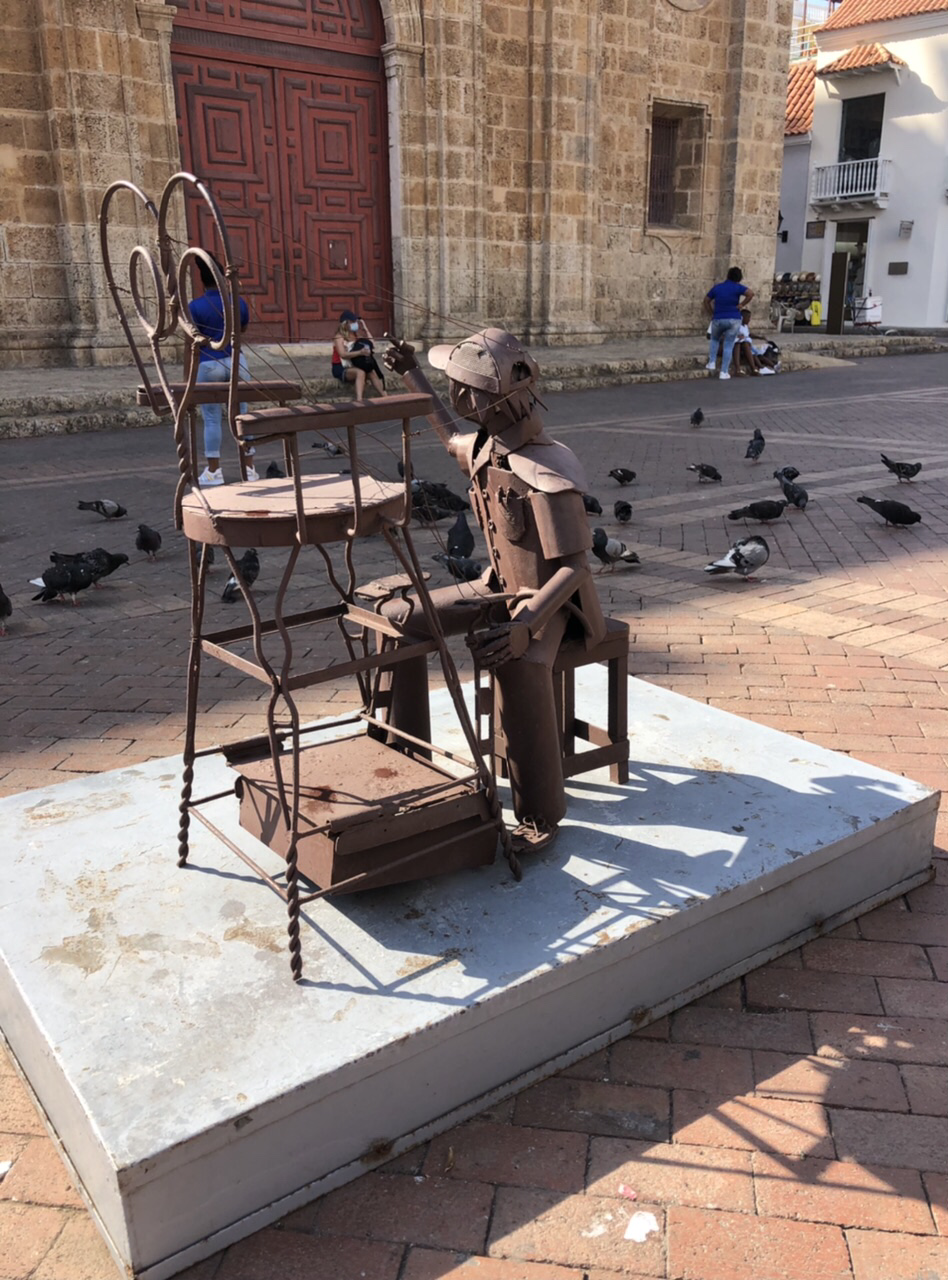
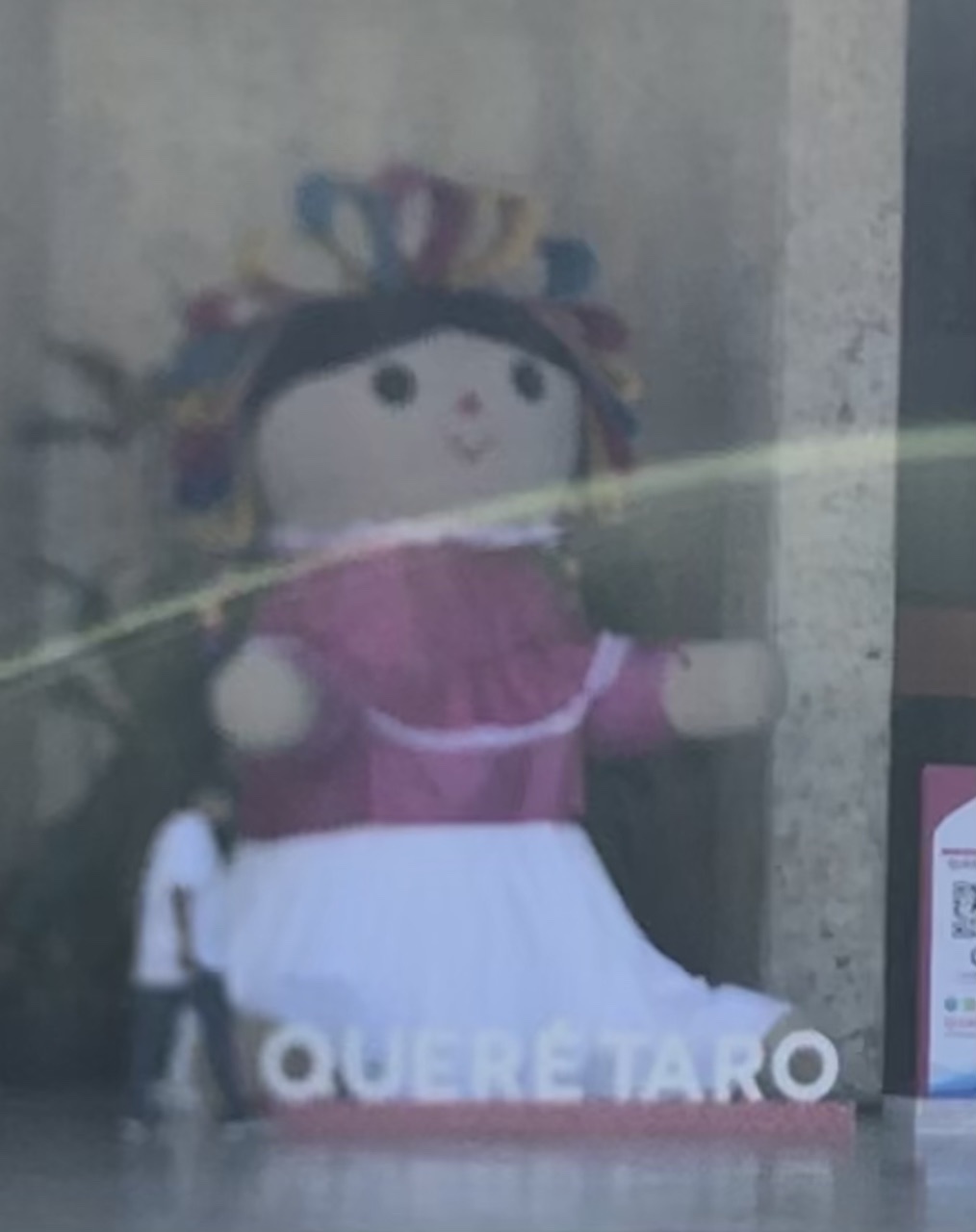

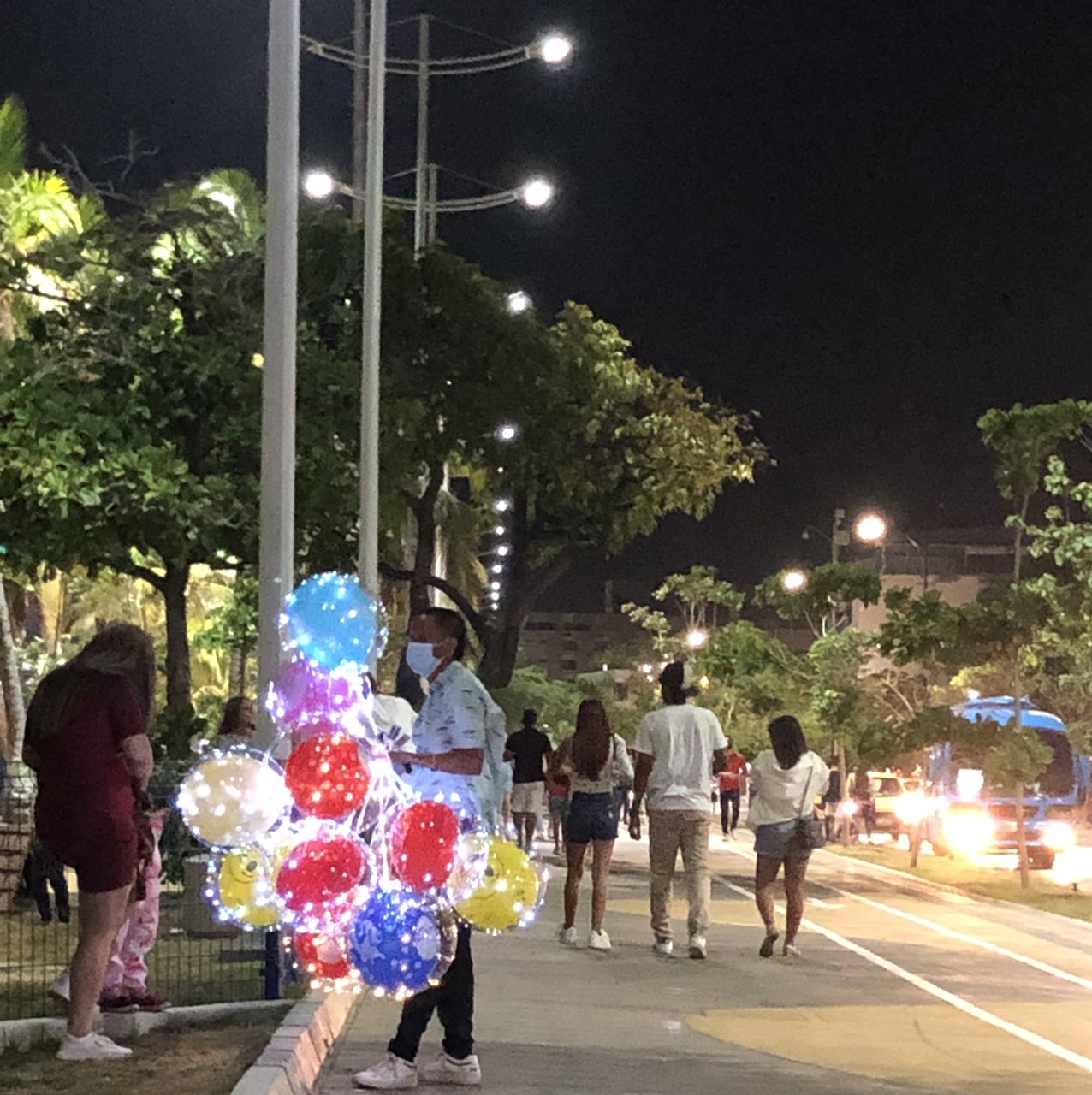
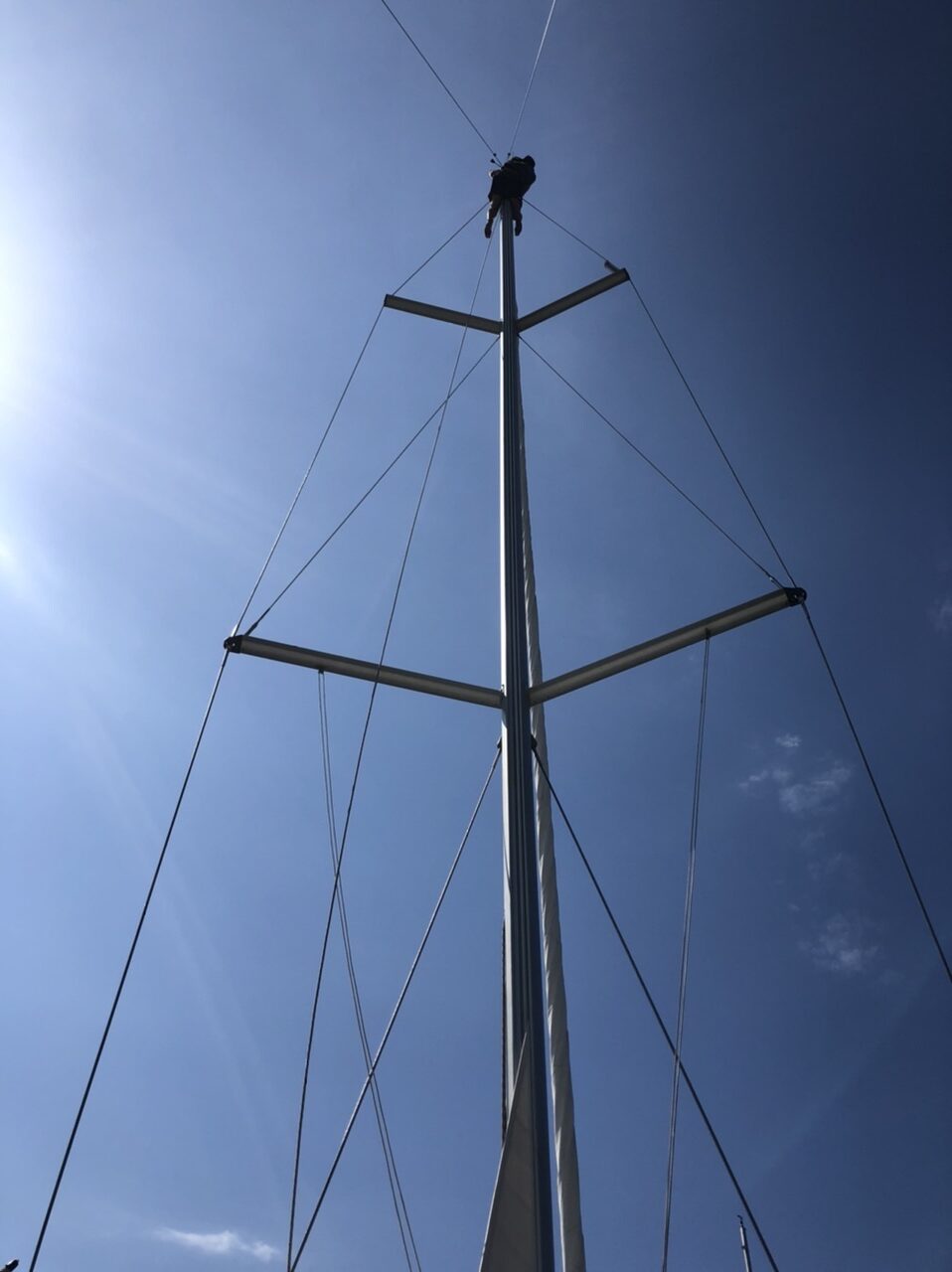

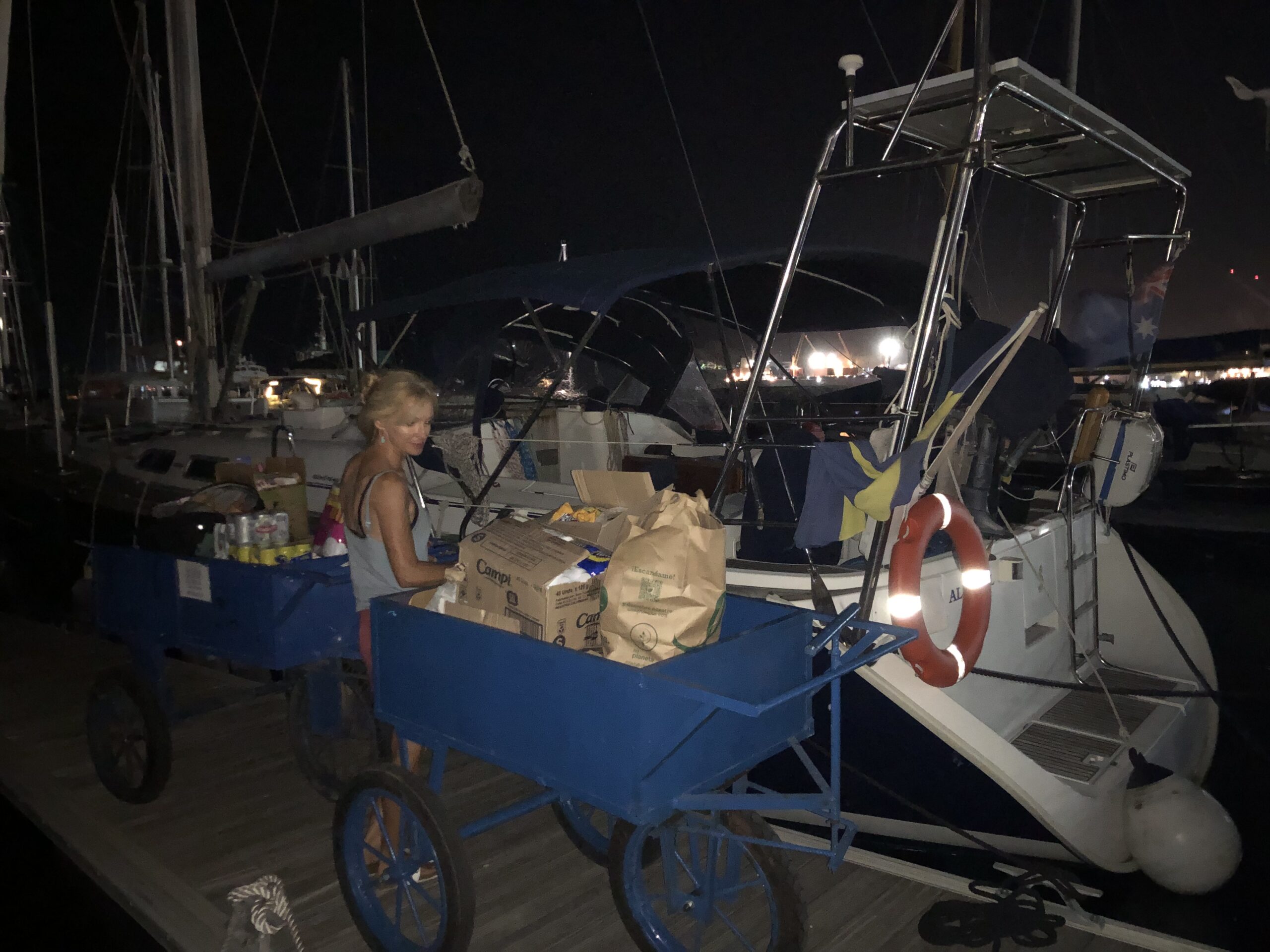
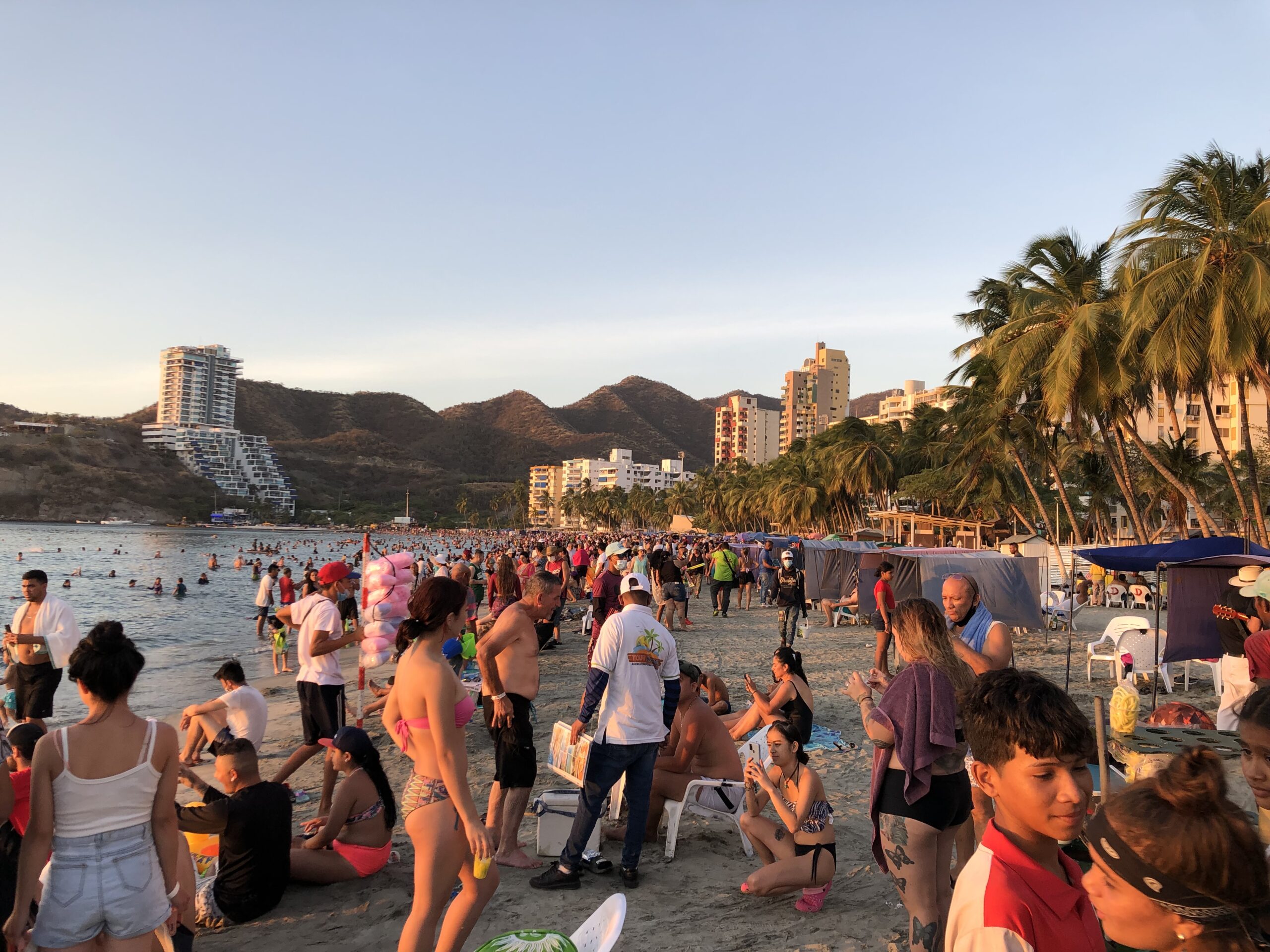
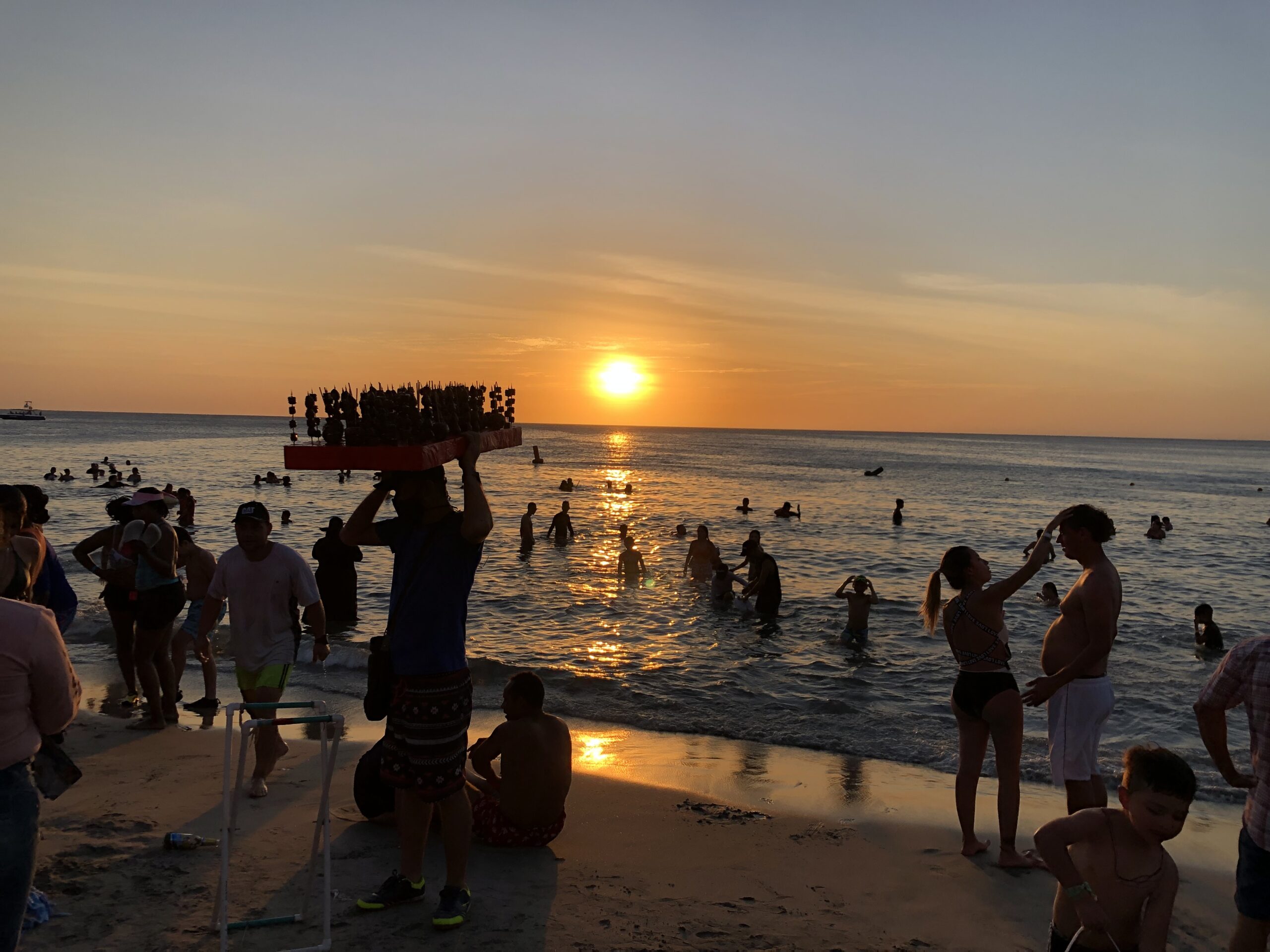
FOOD AND BEVVY HIGHLIGHTS:
Where do I start?!
- Street food! We could have gorged ourselves everyday with good food from street corners, and often did. I have put a link in case you want to have a look at some of the offerings. We have tasted many things but are nowhere near the end of the list! Some favourites were arepas; the quintessential and most ubiquitous street food in Colombia, made of deep-fried sweet cornmeal dough, and filled with whatever you like. Often some meat, and beans, and quesito. They were varied, filling, delicious, and straight off the roadside grill . At $1 AUD they were also good value. We also loved the fresh lime juice, 40c, hamburgers, churros, empanada, patacone, and salchipapa. We ate salchipapa sitting on the steps of Inglesia de la Trinidad. Our serving was certainly enough for two, and we had to take the hamburger we had also bought, home. The salchipapa is made of chopped sausage and potato and various other tasty things on a bed of finely shredded lettuce, or chips, (or whatever is available) topped with two tasty sauces, one creamy, one hot, and quesito. Quesito is a popular and common cheese, but a strange name I think. A cheese called “little cheese?” It seems to be added to many Colombian dishes, to great effect. See link for info.
- https://www.theunconventionalroute.com/best-colombian-cheeses/
- 22 Street Foods to Try in Colombia | kimkim
- Cerviche – both home made from the tuna we caught, and from a cafe specialising in it at Santa Marta. A fresh light dish that really showcases seafood; we made ours with lime, onion, coconut milk, and a few bits we had in the fridge. The bought one was sweeter, with a tomato lilt.
- Yucca gnocchi topped with chicarron, which is deep fried pork rind or belly. The fatty saltiness was perfect over the gnocchi.
- Fantastic beef, no more to say really.
- Discovering the “plato del dia” which generally comprised soup, a large main meal, and a drink. We fell over this first when we arrived at Santa Marta tired and dazed, and wandered into a supermarket to get out of the heat, and to try to locate some wifi. We found a surprisingly large and bustling cafe upstairs at the entrance to the carpark, and once we had established that they had wifi, we ordered what we thought was a drink and a small taste of something we could not identify by the Spanish name on the menu. We took our seat, connected to the wifi, and watched as the food arrived in a surprisingly lengthy procession. Two drinks arrived – ok maybe we accidently ordered two…. then two soups arrived, then two ENORMOUS plates, THEN the drink we ordered! The small thing we ordered was in fact, the plato del dia, not a little empanada-like treat! We have also learned that it must be counter intuitive , unimaginable or just plain rude for Colombians to serve food only to one person, so each time we order something to share, we end up with one each. I truly don’t think this is about money – most of the places this has happened are tiny cafes with only locals eating there, I think it is pure hospitality.
- Caipirinha sipped from a plastic cup in a packed plaza, sitting on chairs from the vendor’s loungeroom which had been carried out onto the street, including a wheeled office chair! The sparkling company of an Aussie couple, spontaneous street performances, friendly attention from street vendors, fascinating people watching and snatched conversations with neighboring tables between the thumping beats of competing bars apparently made this Caipirinha among the best Magnus has had. (And he has a had one or two before…)
- Dinner at Donde Chucho. A colourful, bustling and unassuming restaurant, reviewed as having nice local seafood. There, amongst other thing swe ate Cayeye- flattened then deep fried plantains served, of course, with quesito on top.
- A brekky of four Fritos (fried things). A bread ball, a kind of pastie a bit like a Samosa, (probably an empanada), another pastry filled with chicken and rice, and a fried thing filled with maybe lentils with a little centre of chicken. They were satisfying and yum. When ordering from a tiny cabinet on the footpath, we could only point and hold up fingers, and thought we had ordered two things, but, surprise surprise, four things arrived and were dealt with forthwith.


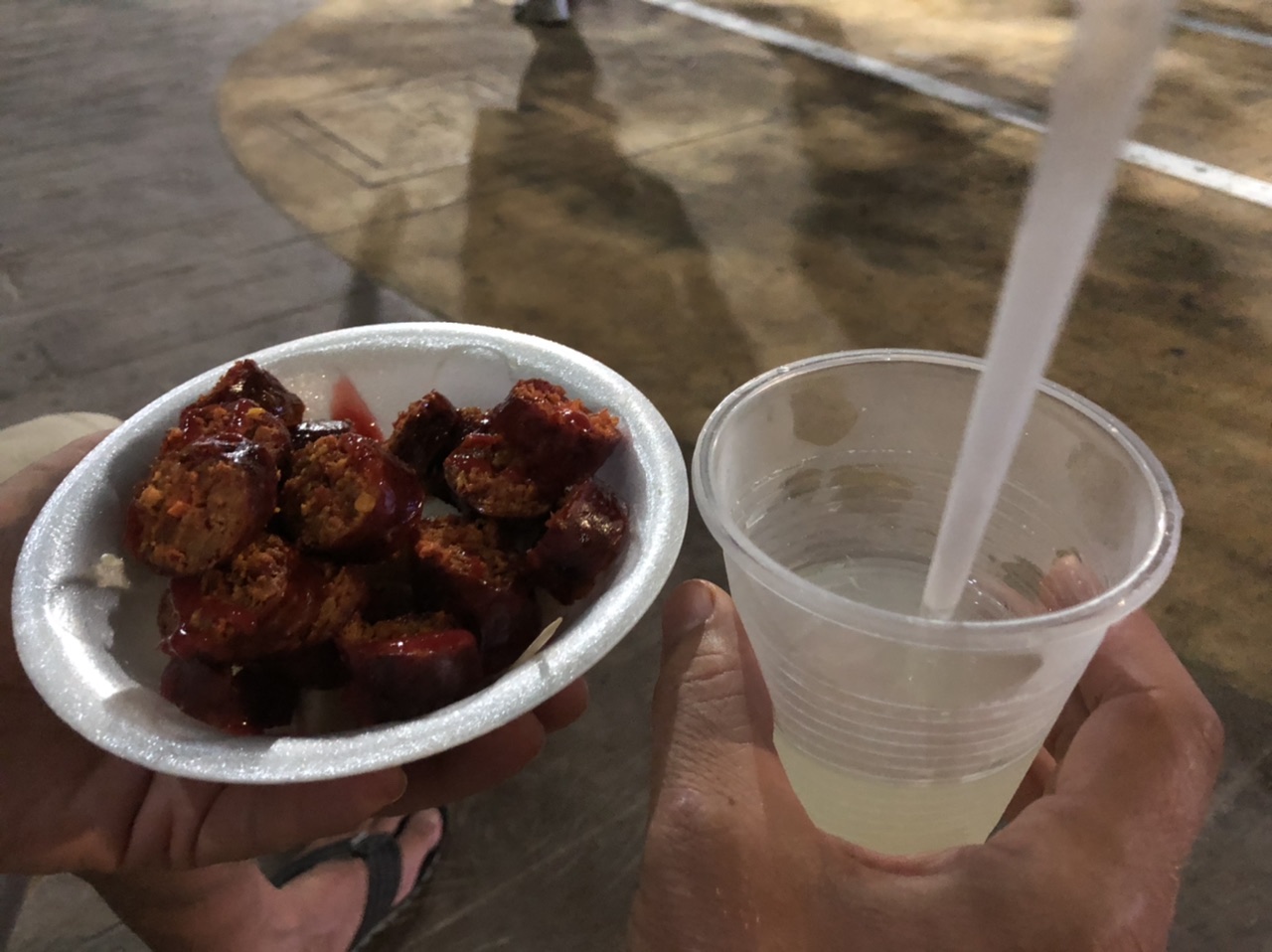
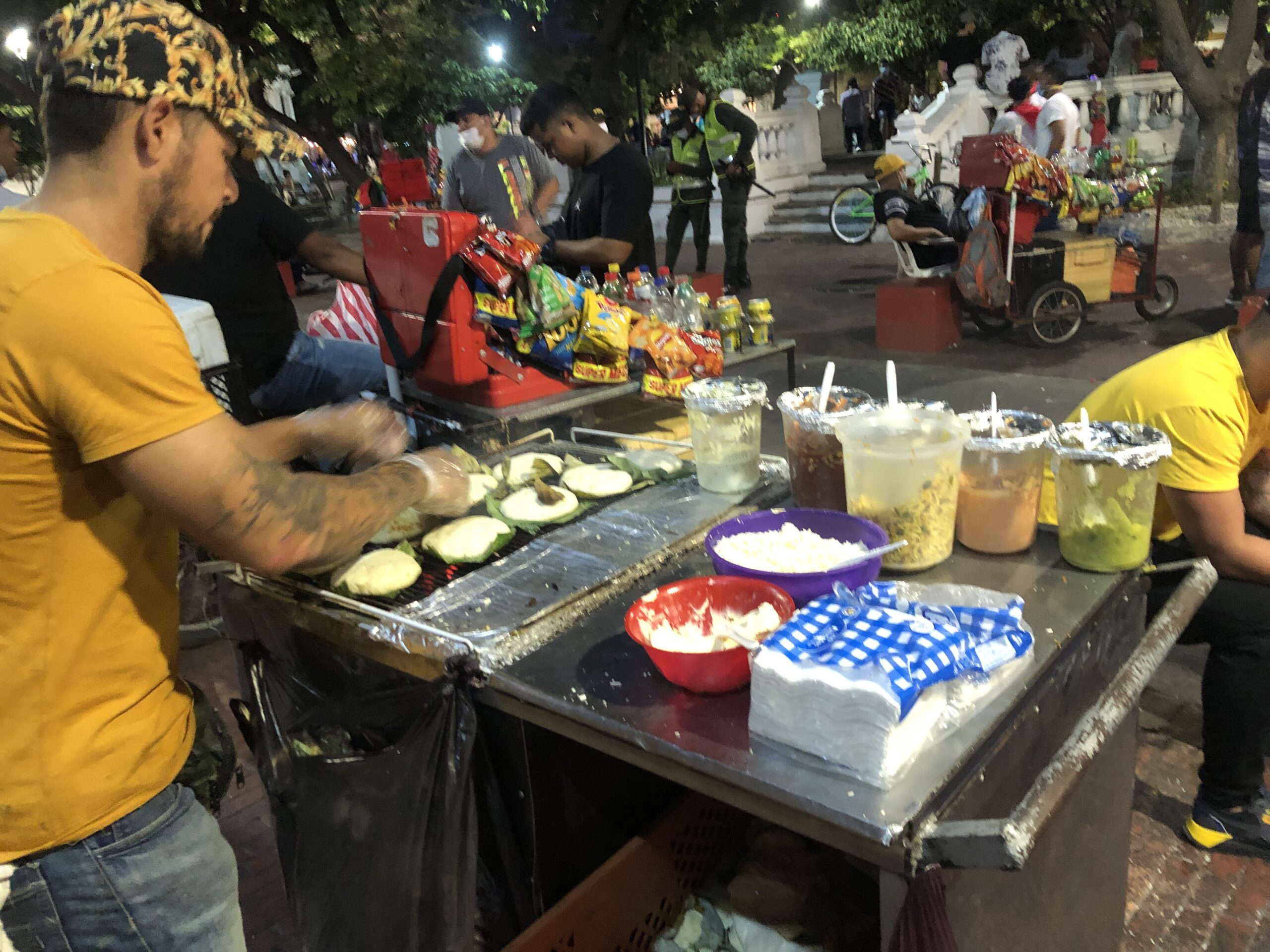
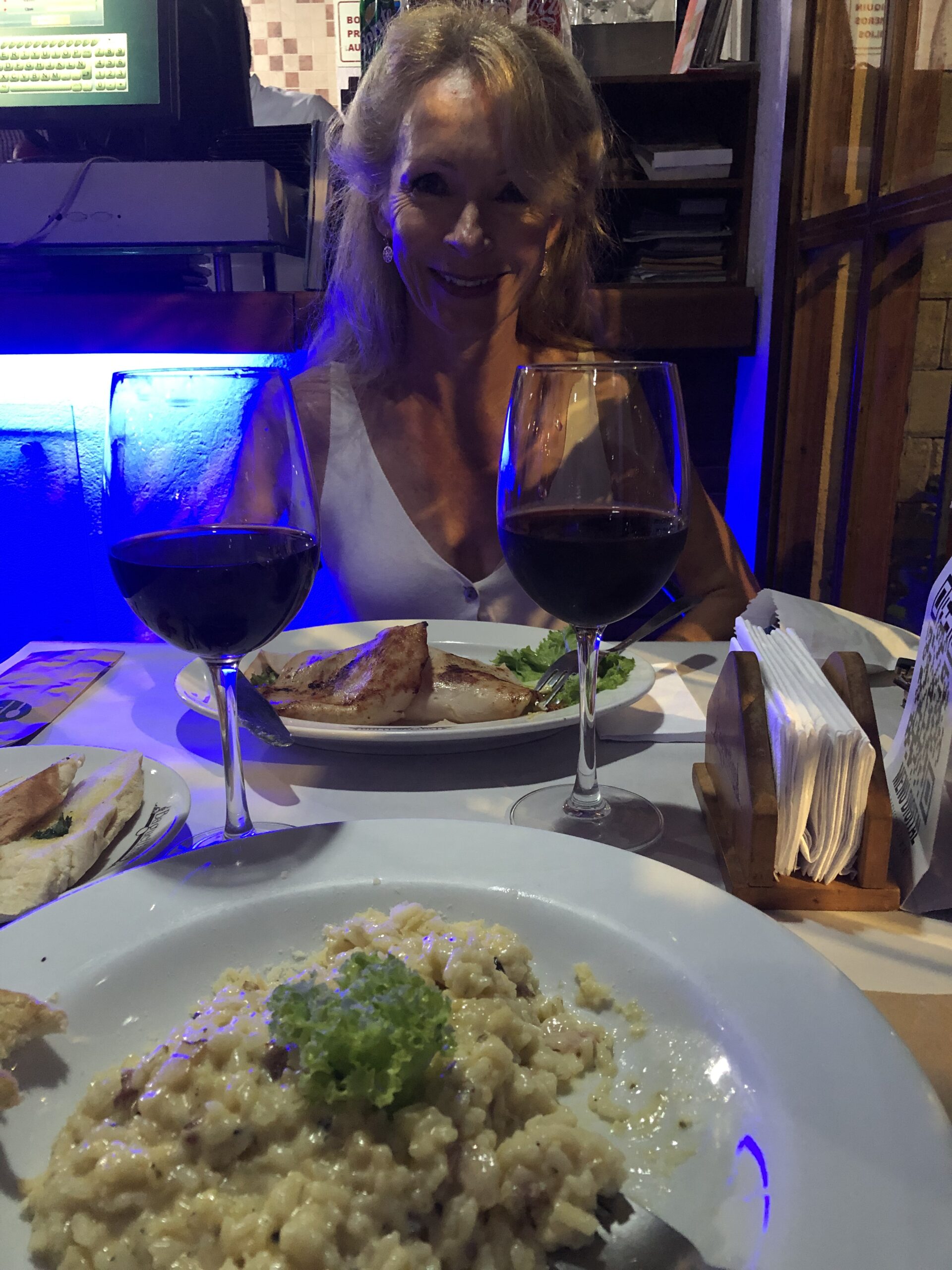
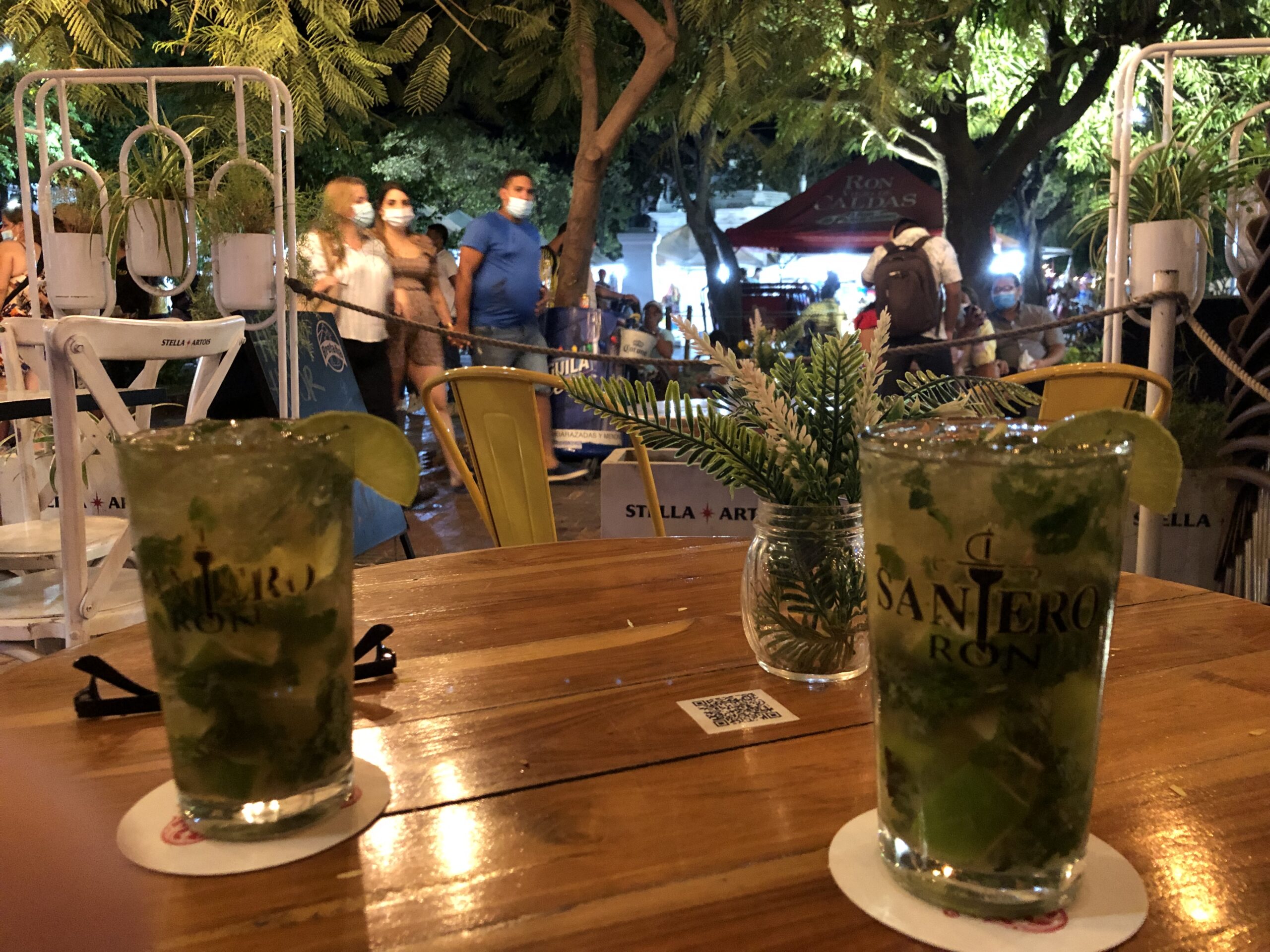


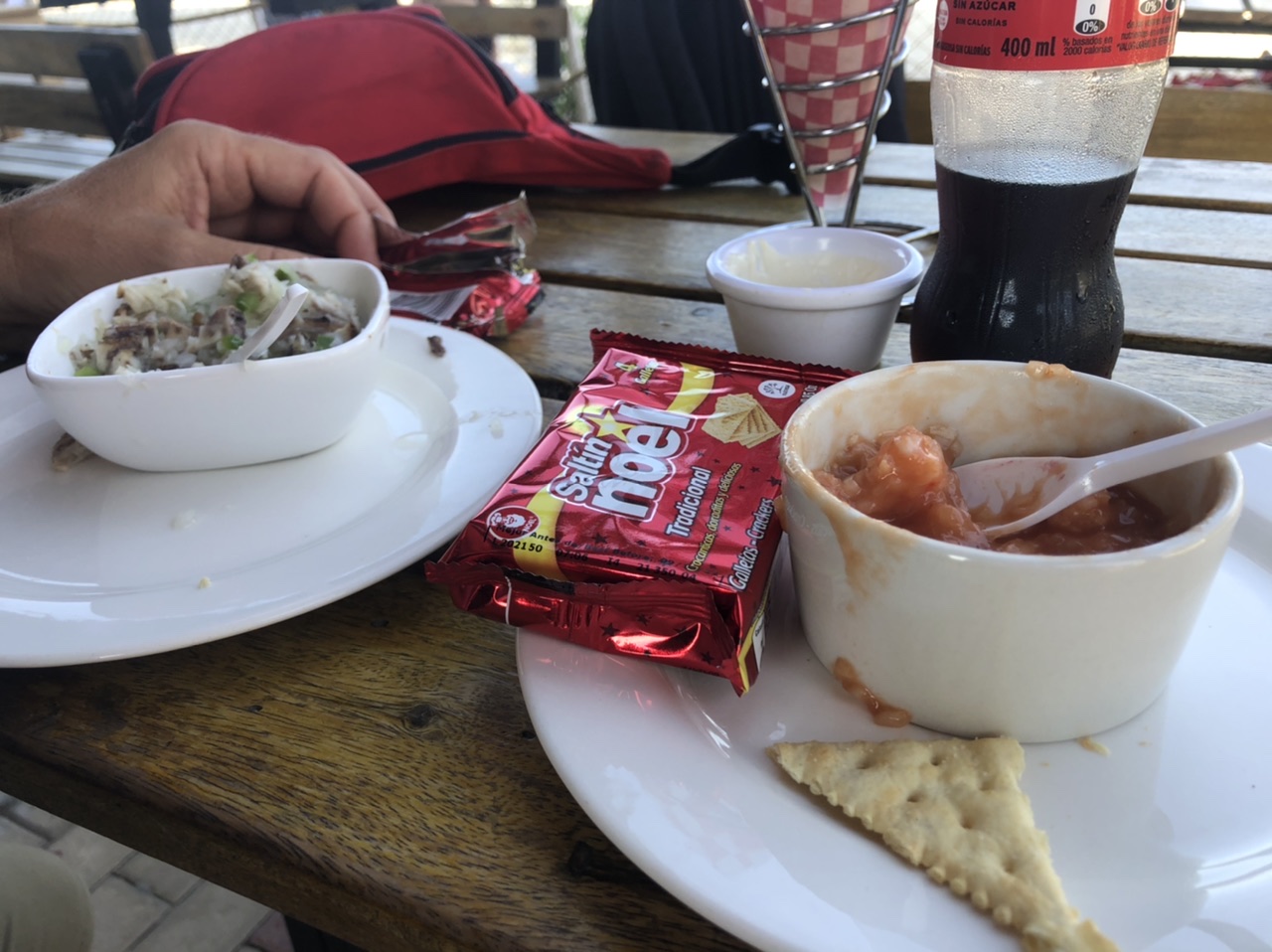

BOATWORK:
- Auto pilot repair, again. Our autopilot carked it soon after we set off for Cartagena, so poor Magnus went down in the pits to do his best while I steered. Even he got a bit green. He replaced part of the system with a clone we had cleverly bought as a spare, but unfortunately the clone did not communicate with original- now what? Magically after the TLC and the old part put back on, it started to work again. We still don’t really understand. It was really lucky that Magnus was able to make this repair because it would have been impossible as the waves got bigger and the wind increased. We had several rogues right over the cockpit later on- no time to be in the pits doing repairs.
- Toilet tank cleaning. We have a holding tank for the toilet, and it required cleaning – on the inside. This was not a job for the faint hearted, but it’s done now. Nothing else to say.
- Connection of 220 power outlets to our inverter, meaning that we can now use the outlets in the boat, instead of carrying any appliances etc to the inverter. So we can now cook eggs on the kitchen bench, rather than on the floor of the port cabin. Woohoo!
- Wind instrument fixed.
- New transom shower surround fitted.
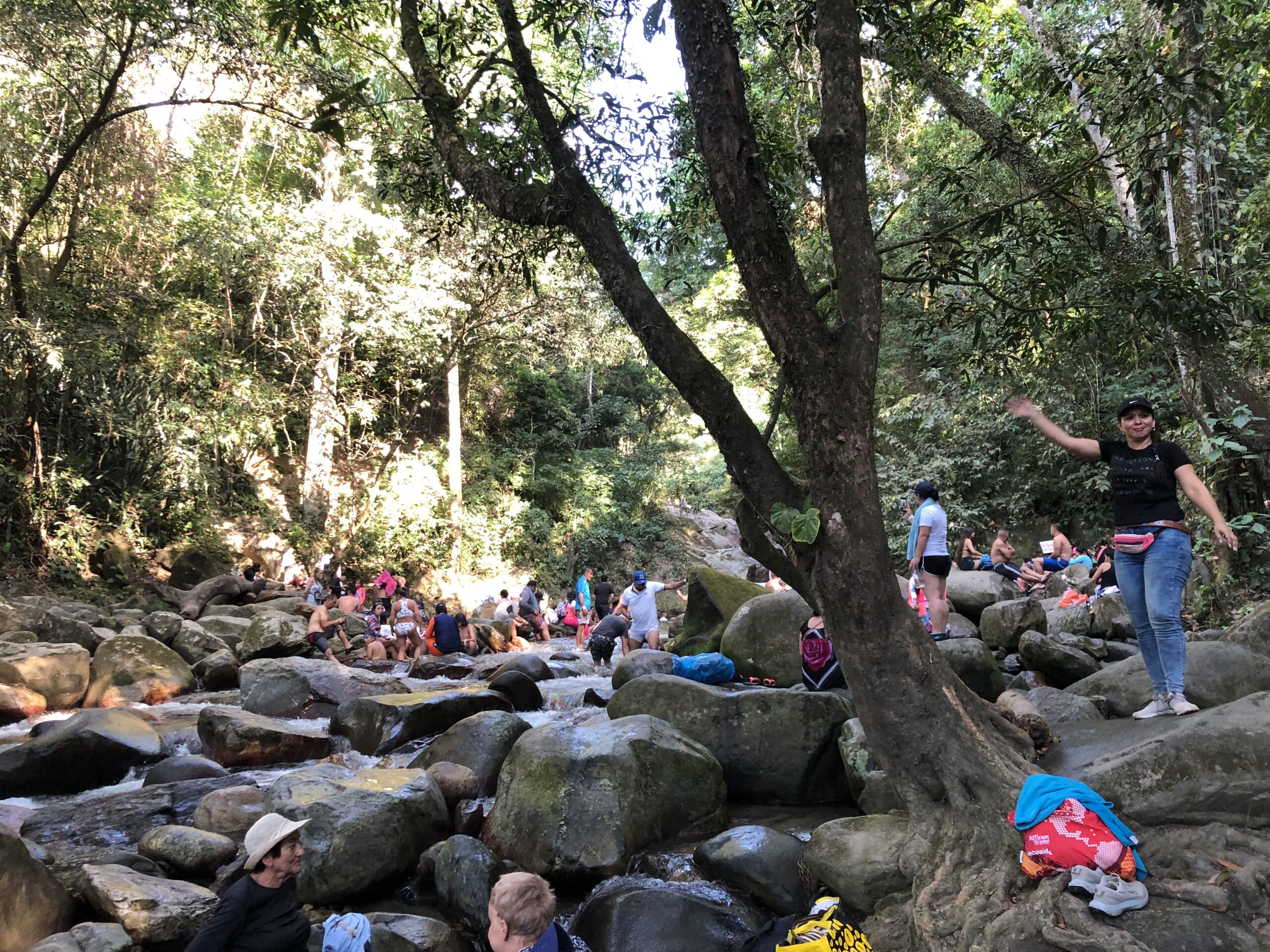
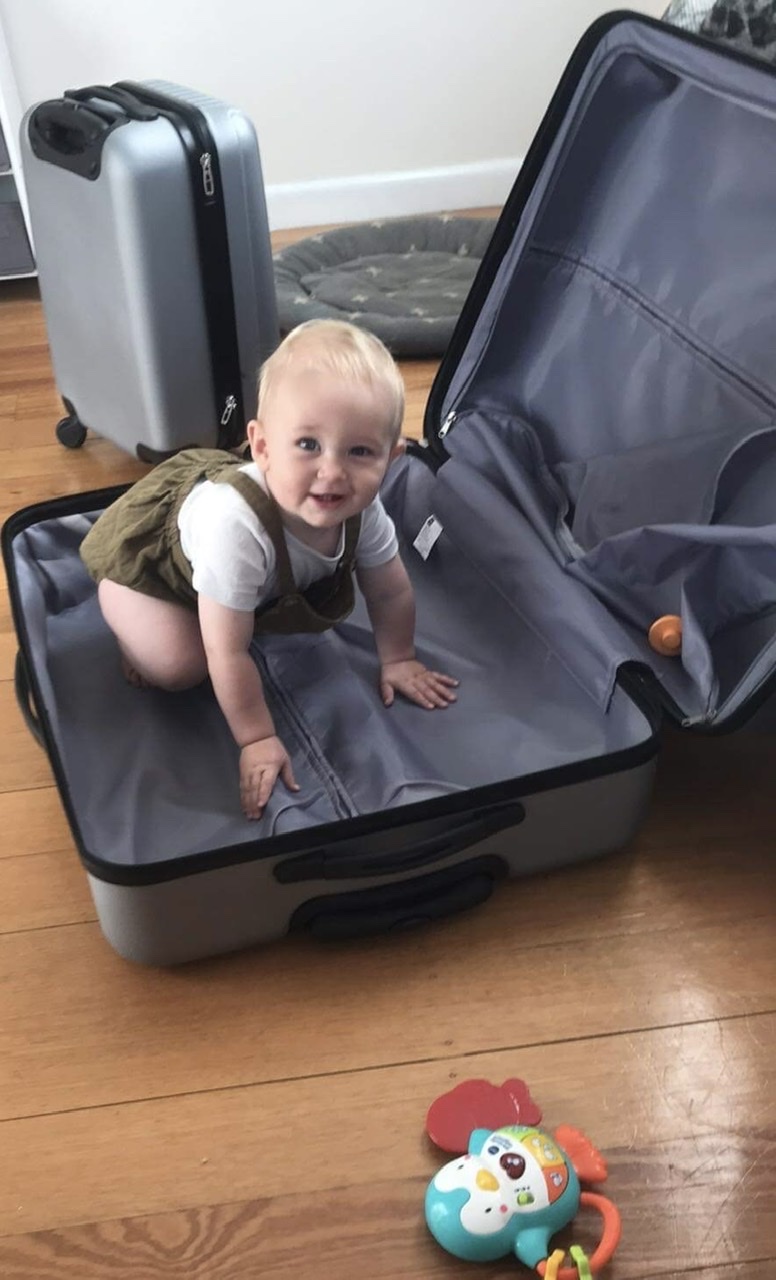
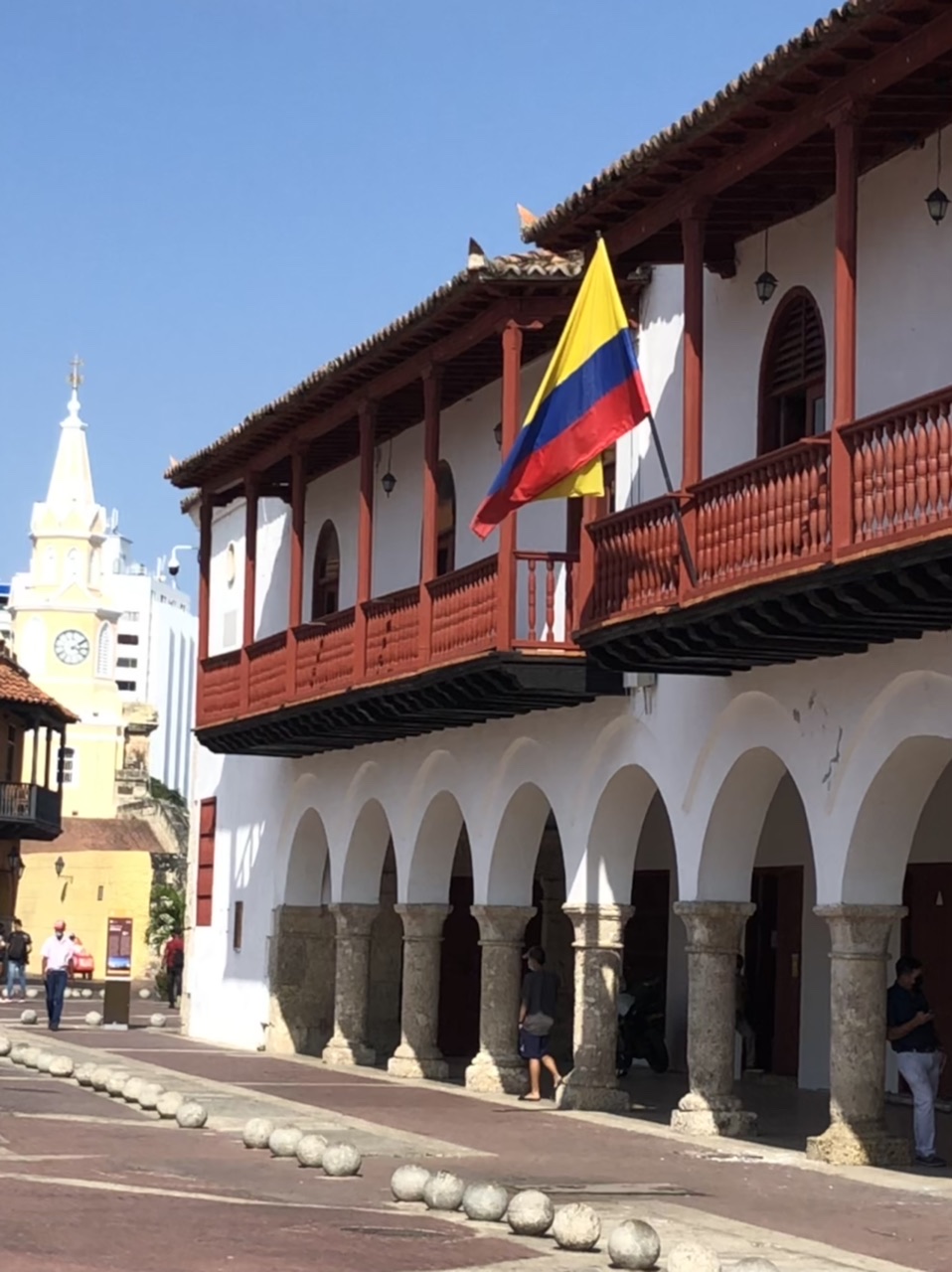
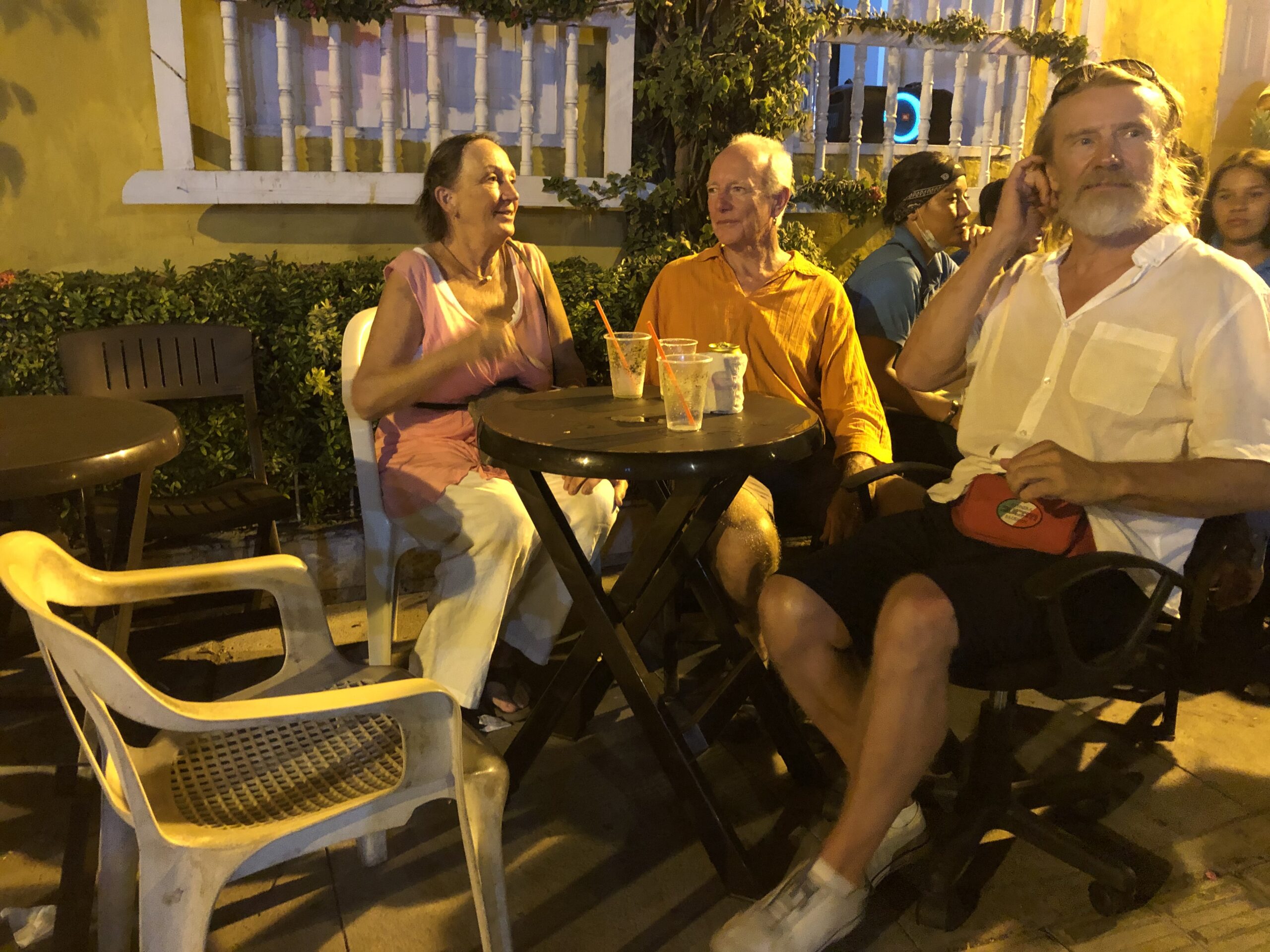
FUN FACTS:
History of Colombia: thanks Wiki.
The history of Colombia includes the settlements and society by indigenous peoples, most notably, the Muisca Confederation, Quimbaya Civilization, and Tairona Chiefdoms; the Spanish arrived in 1492 and initiated a period of annexation and colonization, most noteworthy being Spanish conquest; ultimately creating the Viceroyalty of New Granada, with its capital at Bogotá. Independence from Spain was won in 1819, but by 1830 the “Gran Colombia” Federation was dissolved. What is now Colombia and Panama emerged as the Republic of New Granada. The new nation experimented with federalism as the Granadine Confederation, and then the United States of Colombia, before the Republic of Colombia was finally declared in 1886; as well as constant political violence in the country. Panama seceded in 1903. Since the 1960s, the country has suffered from an asymmetric low-intensity armed conflict, which escalated in the 1990s, but then decreased from 2005 onward. The legacy of Colombia’s history has resulted in a rich cultural heritage; while varied geography, and the imposing landscape of the country has resulted in the development of very strong regional identities.
